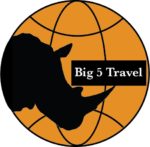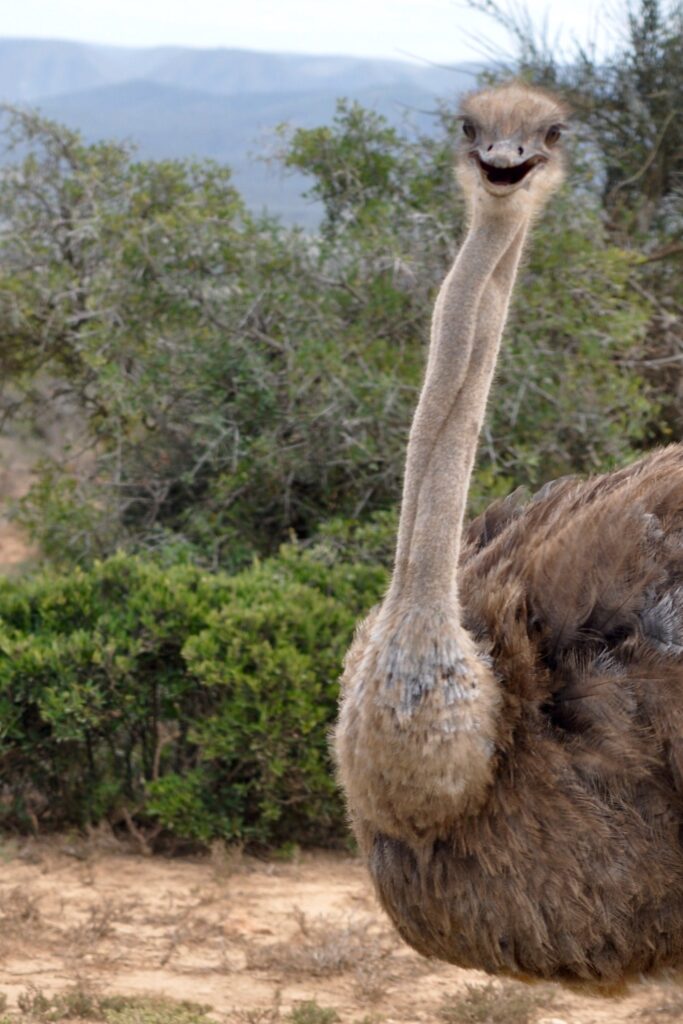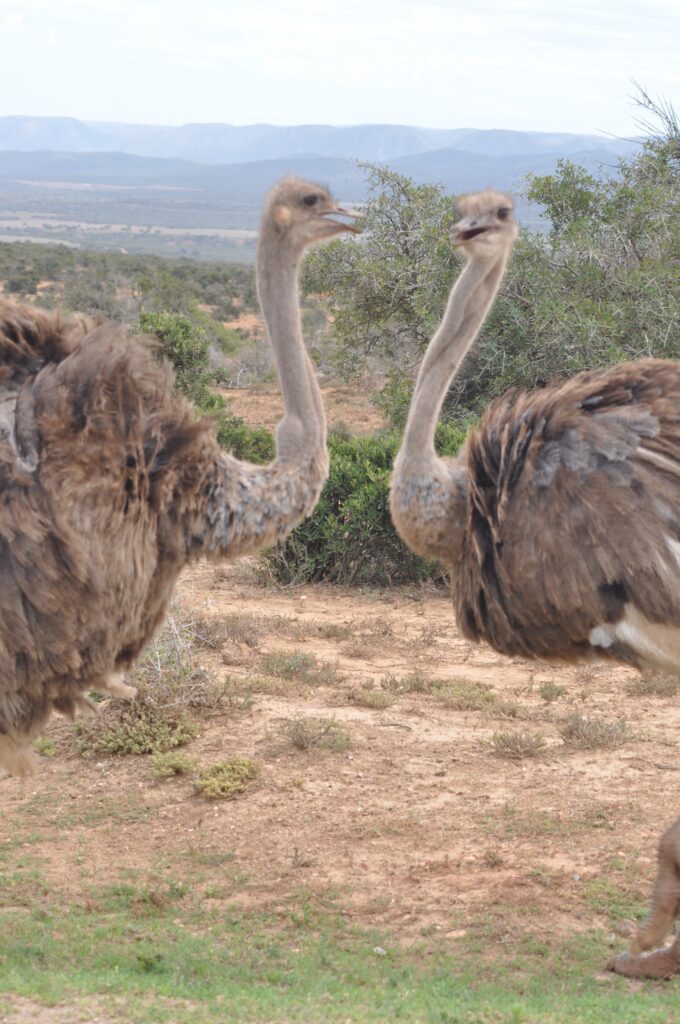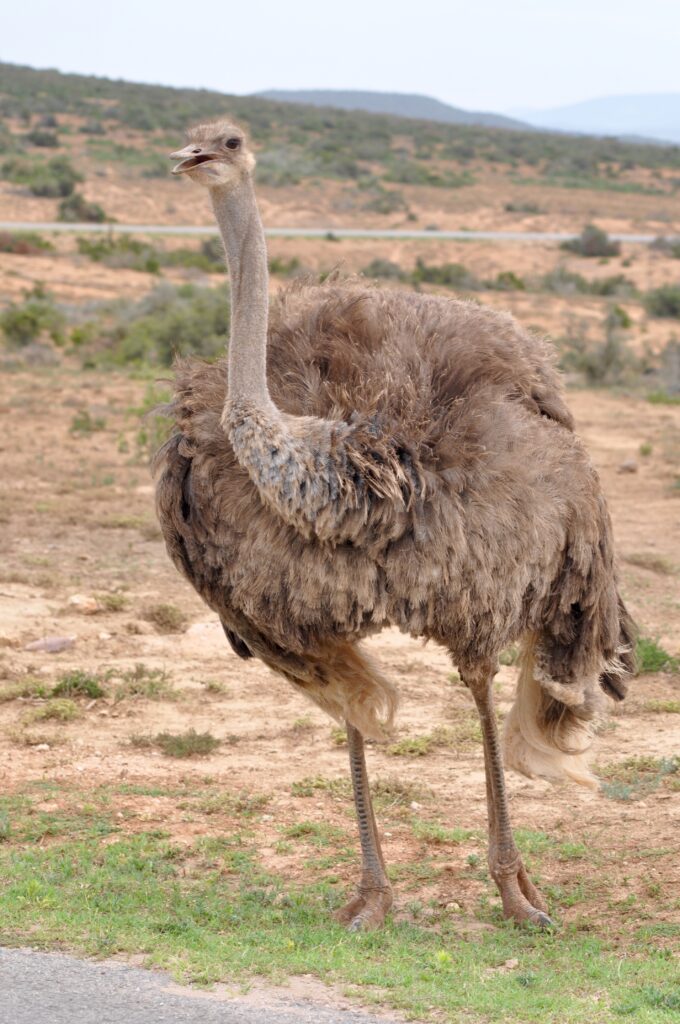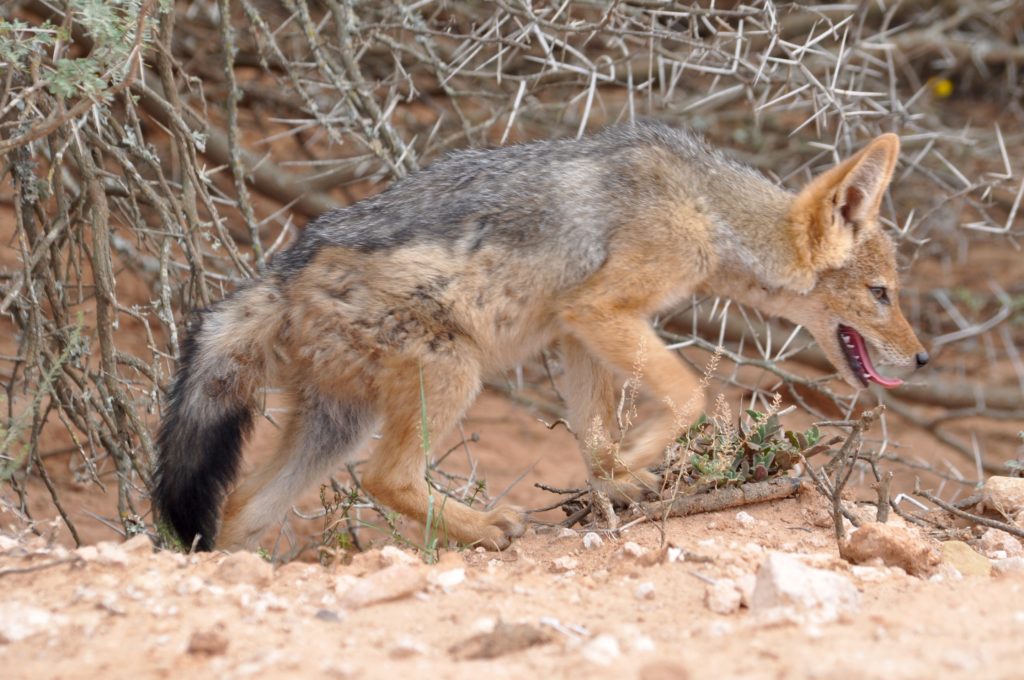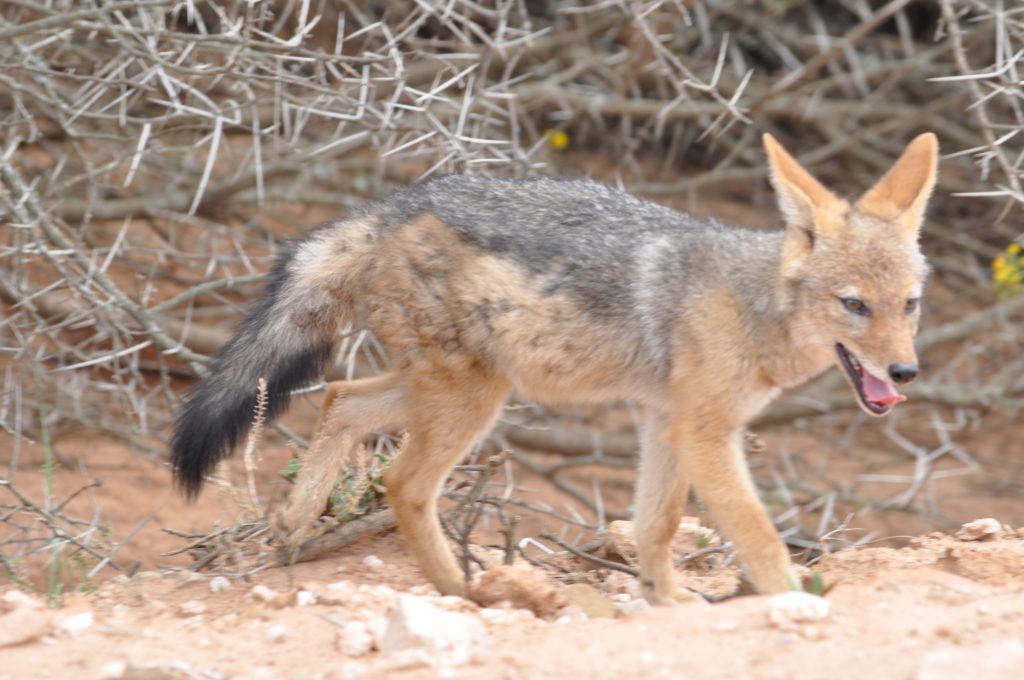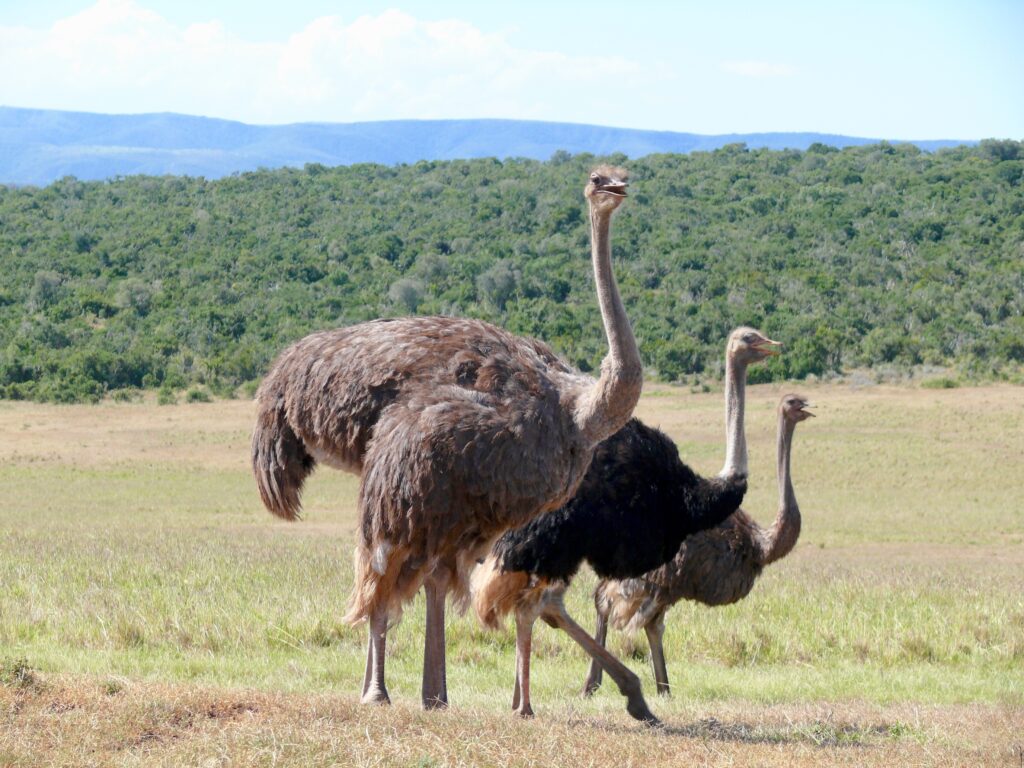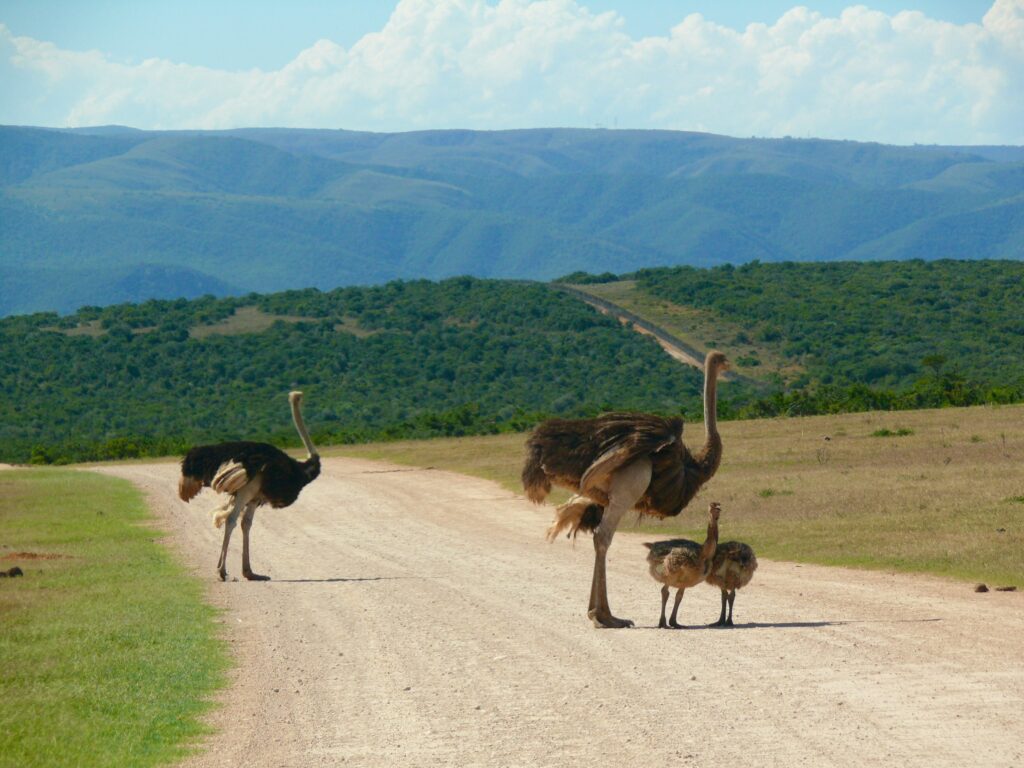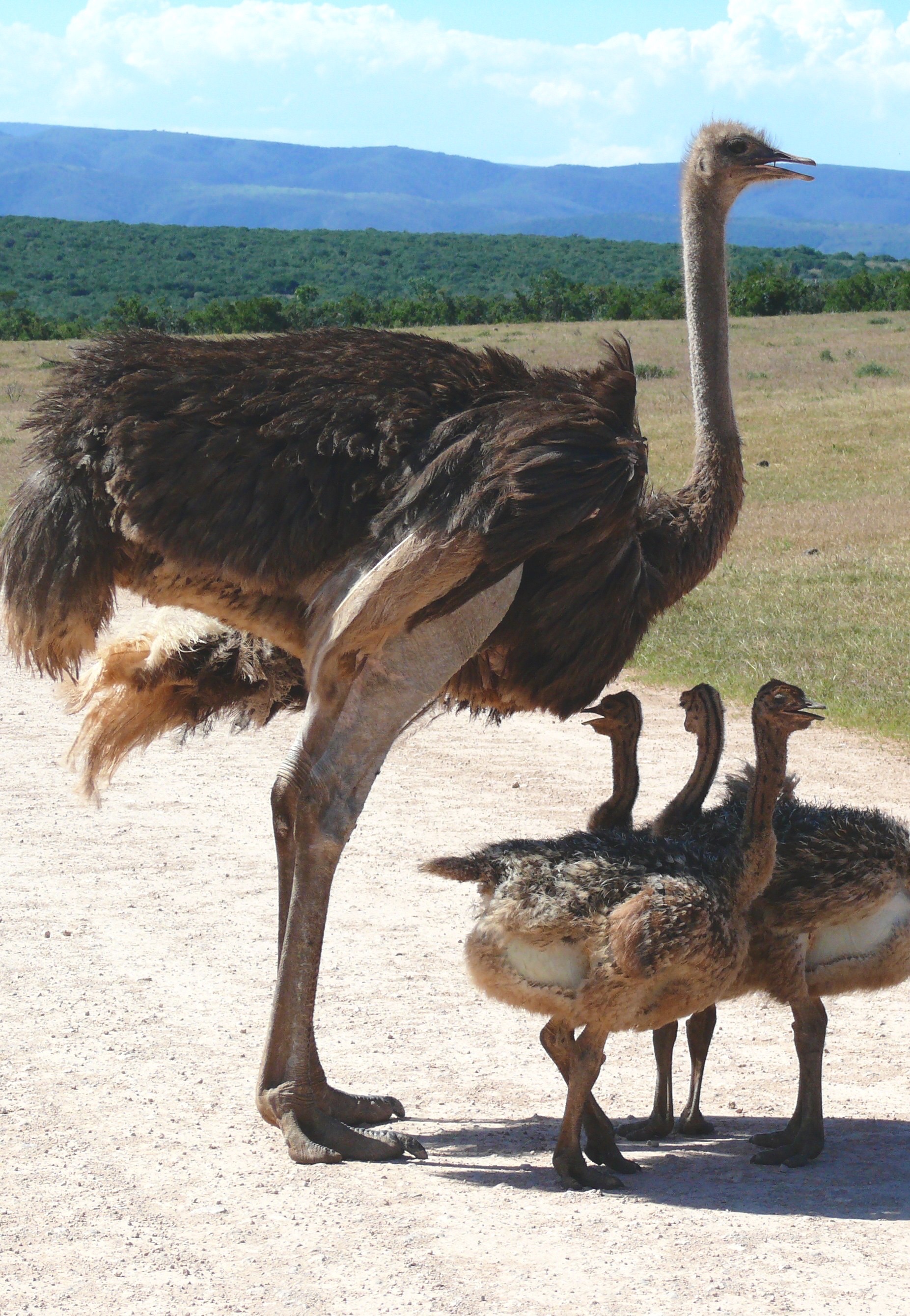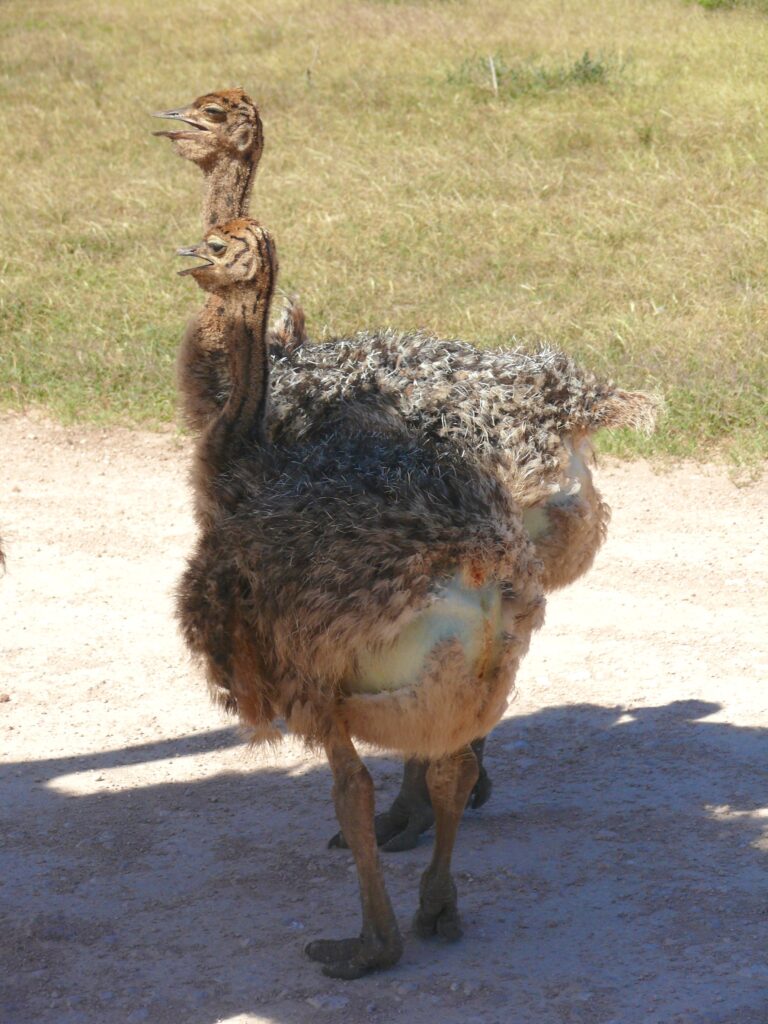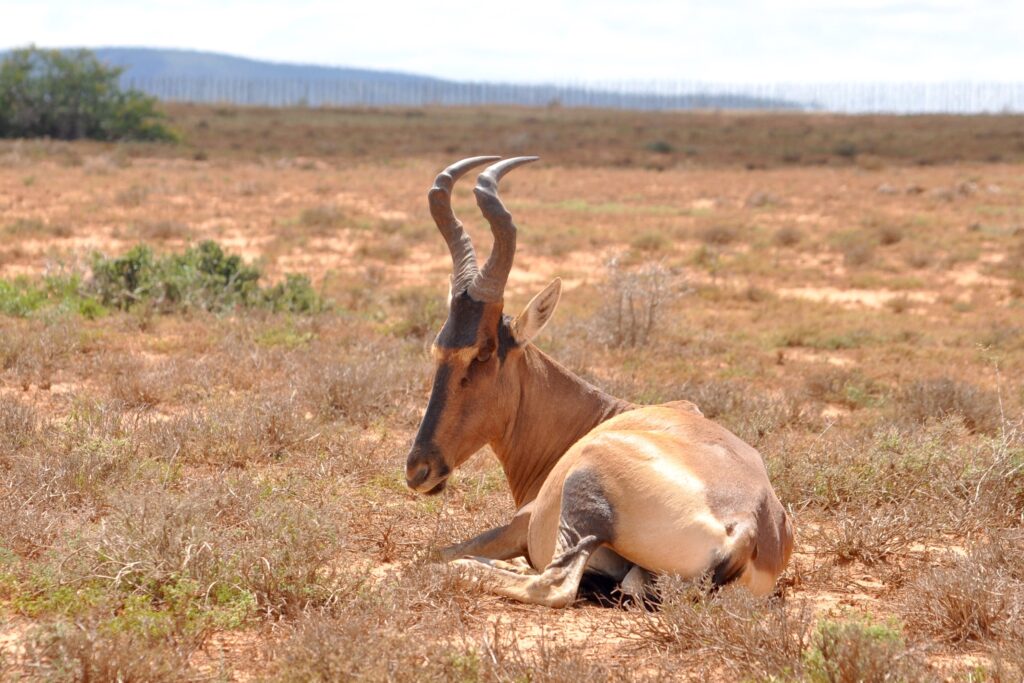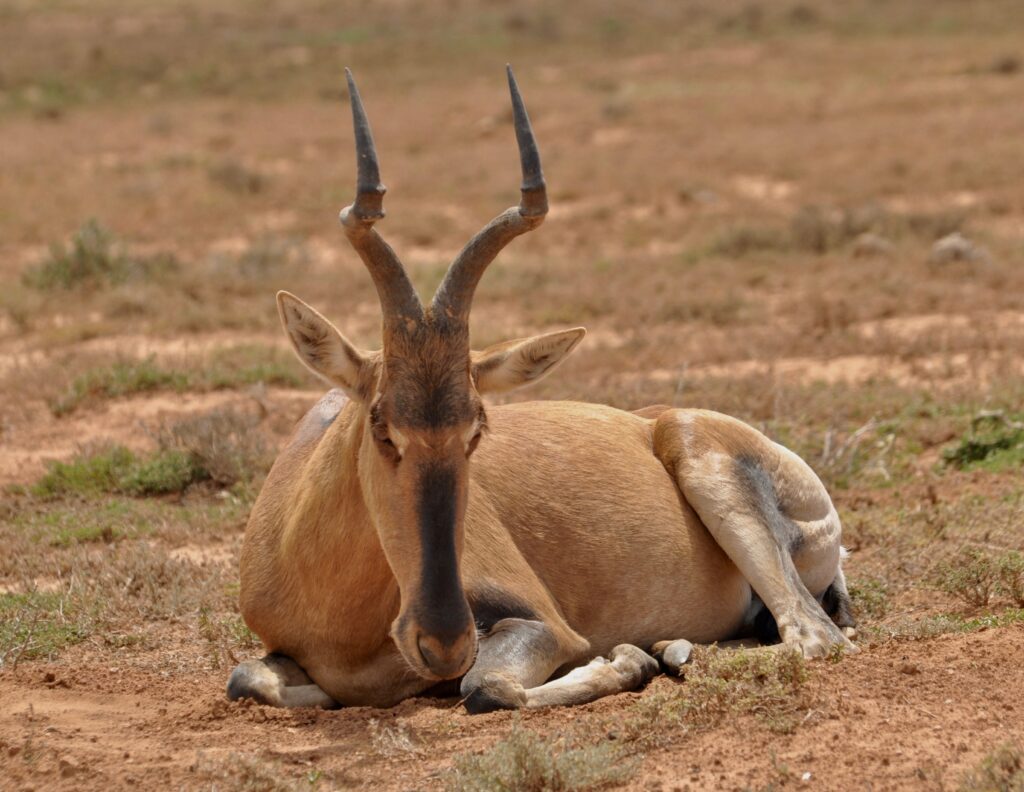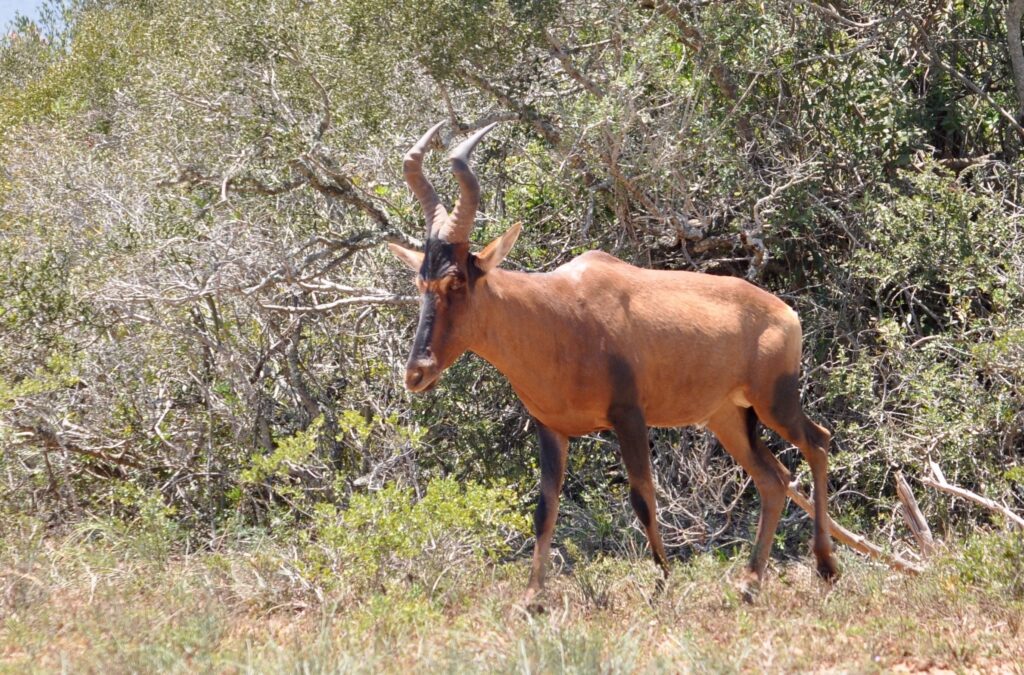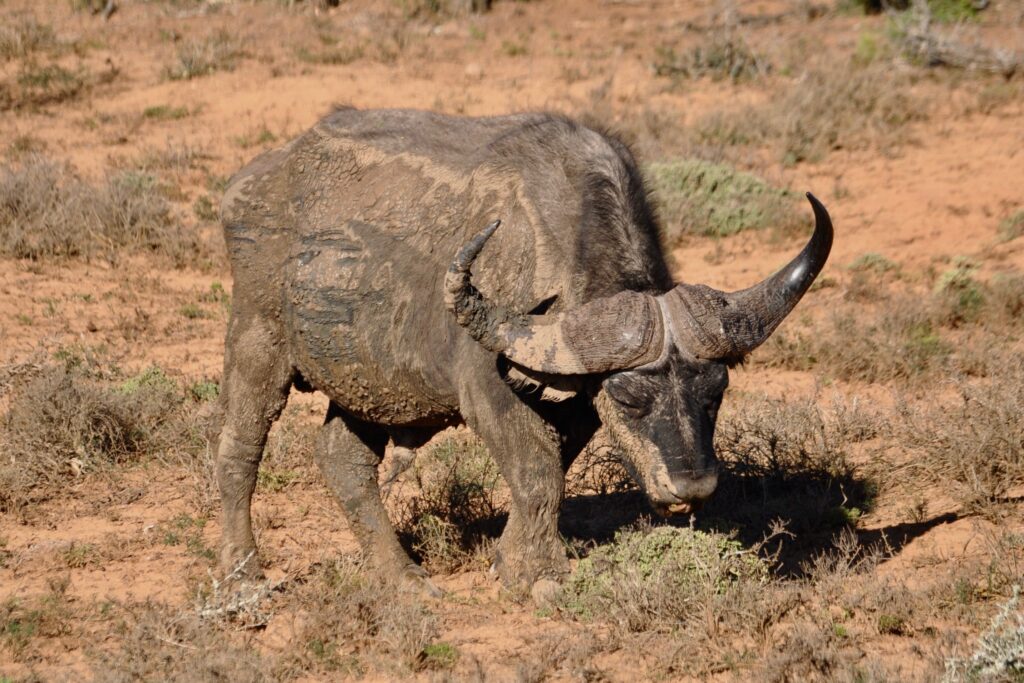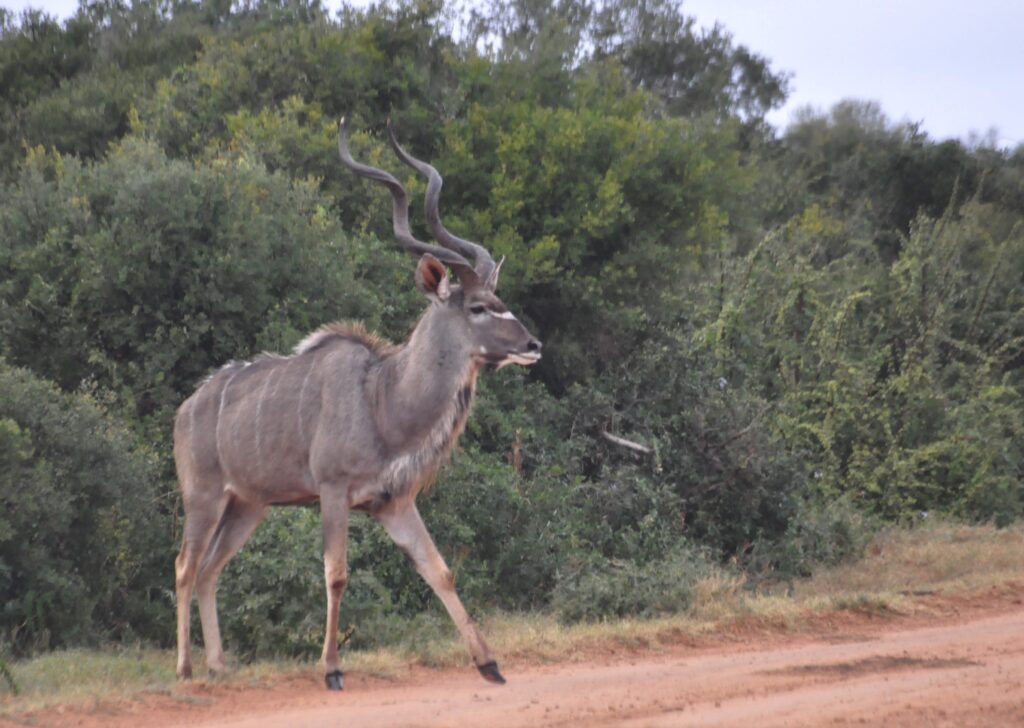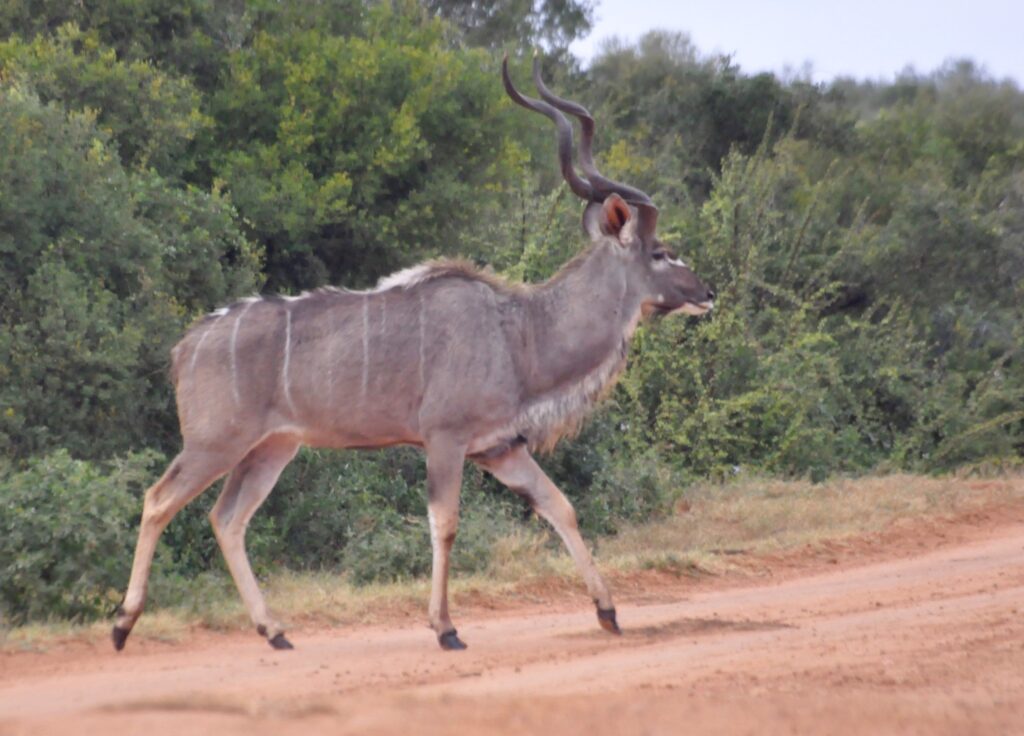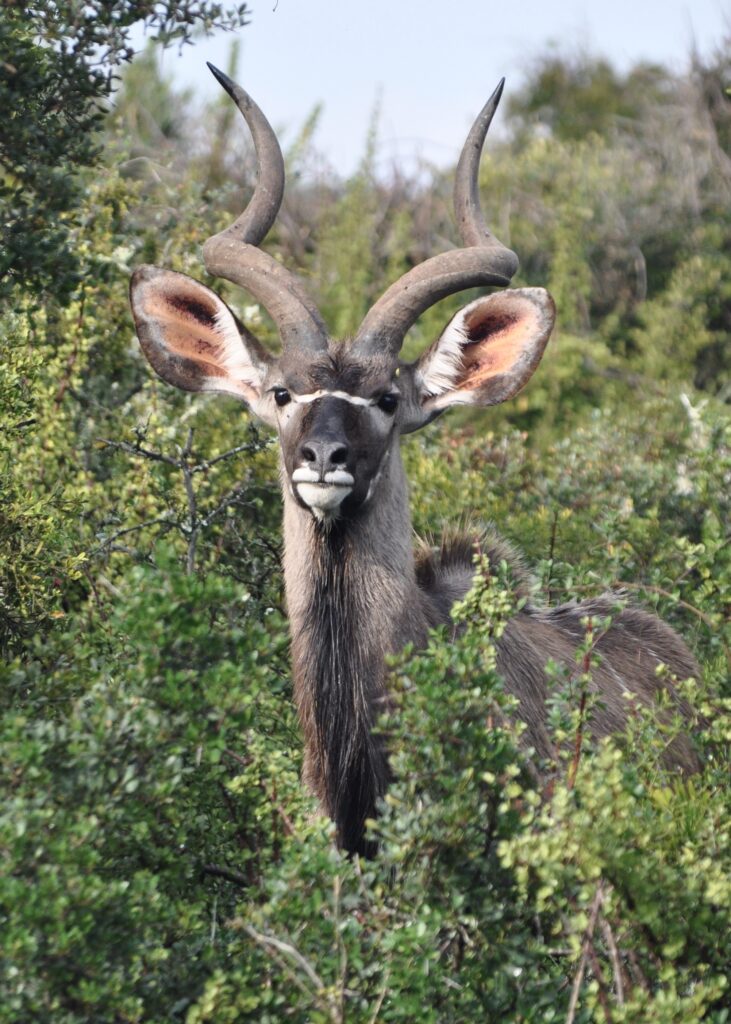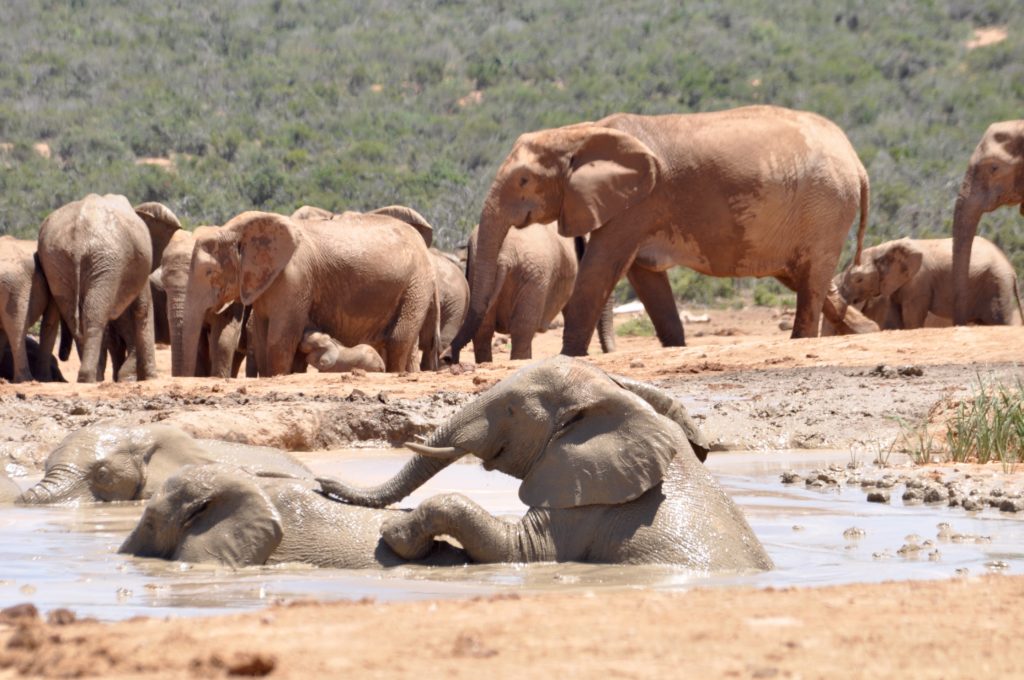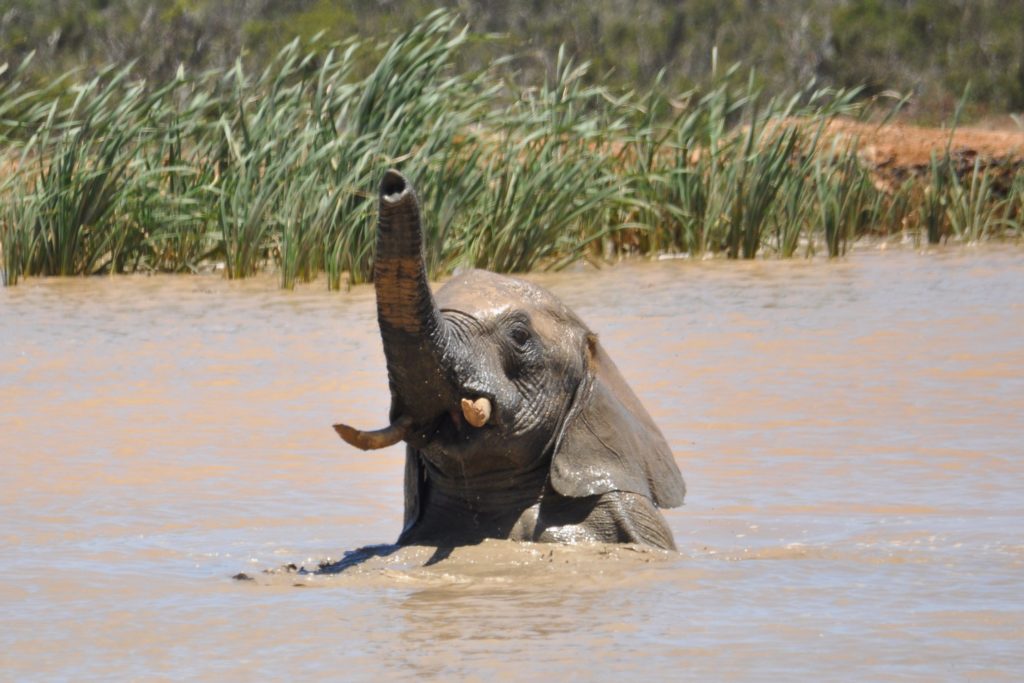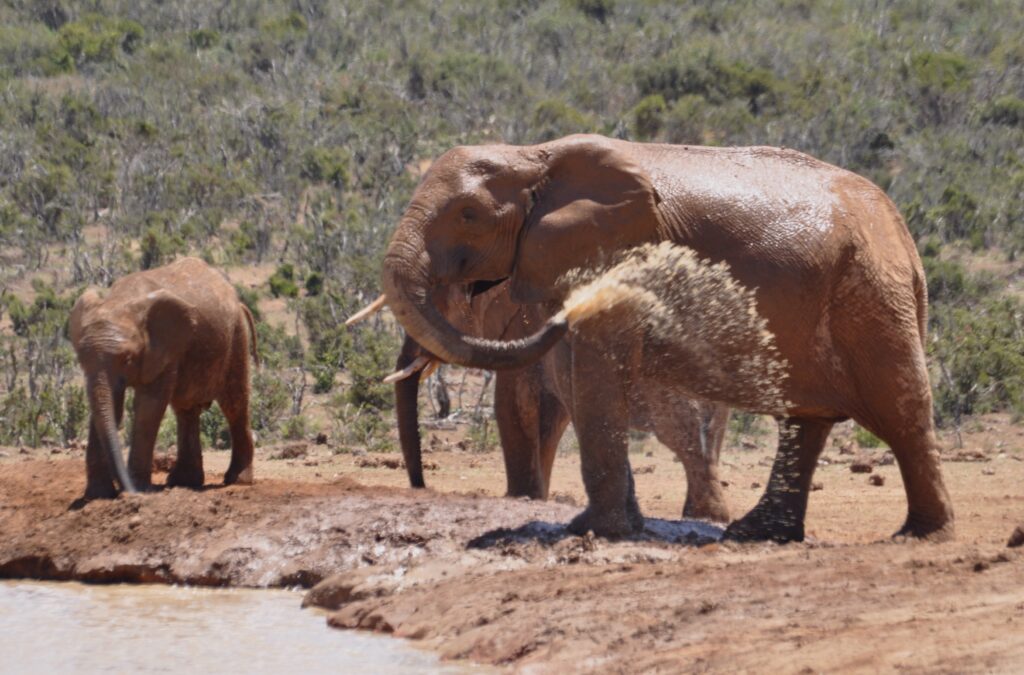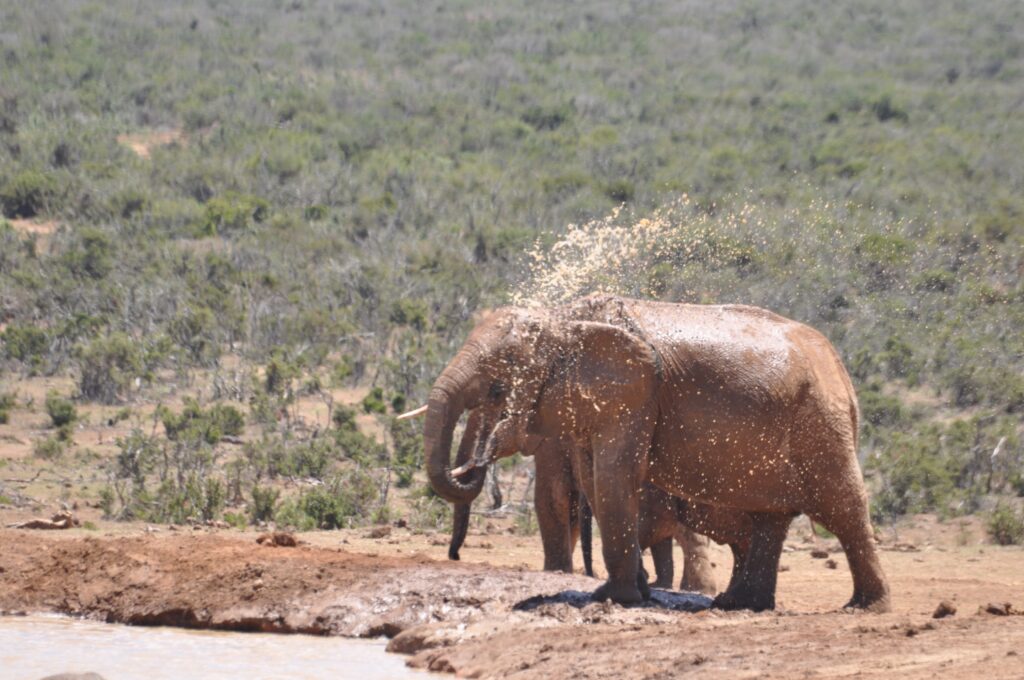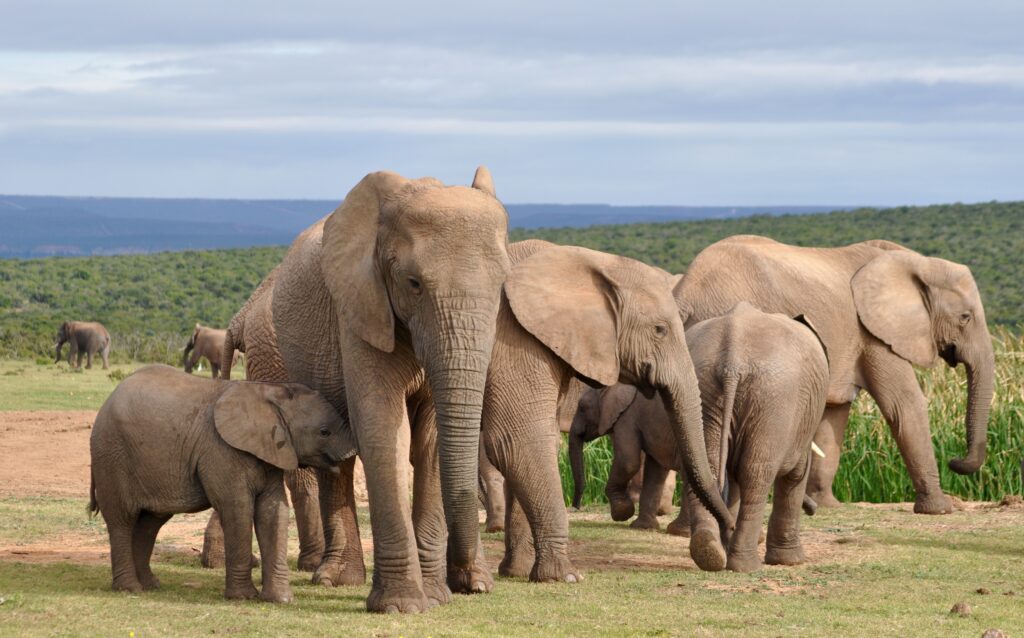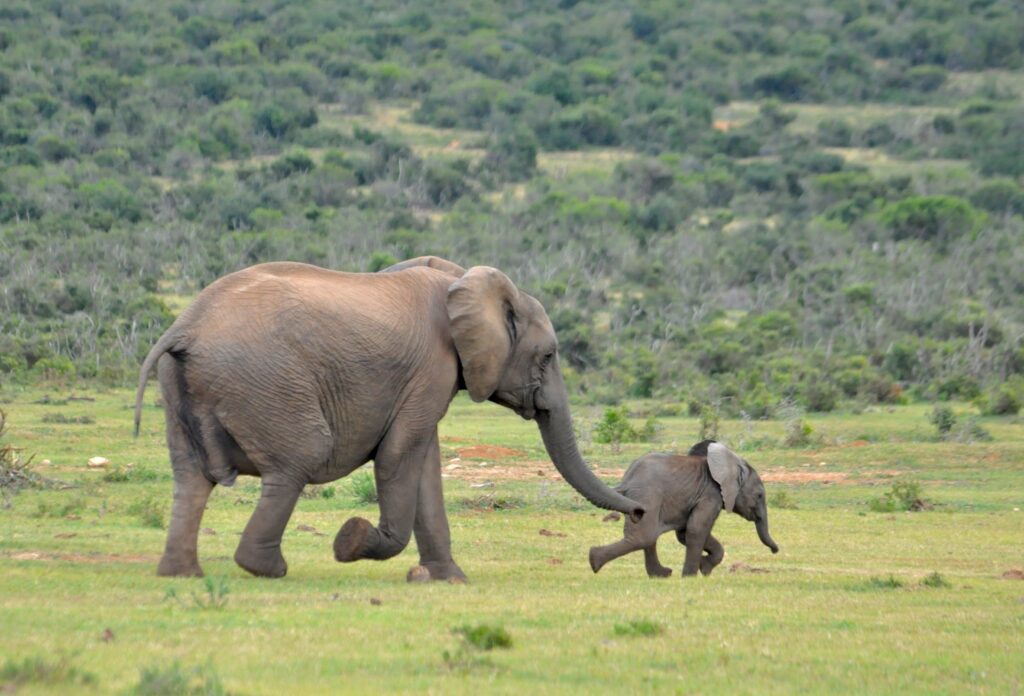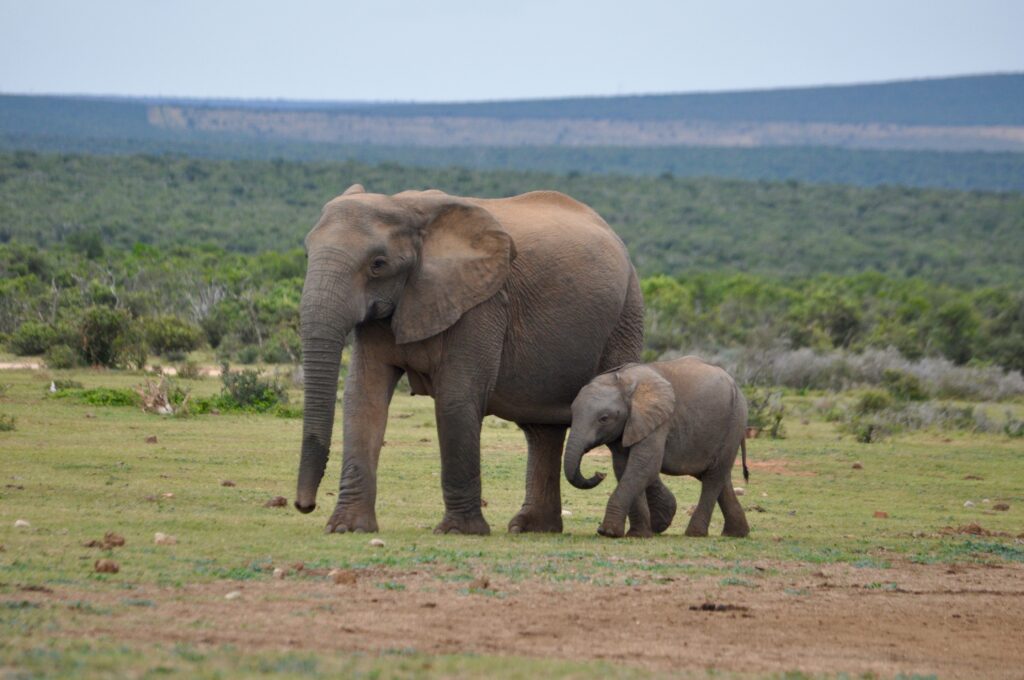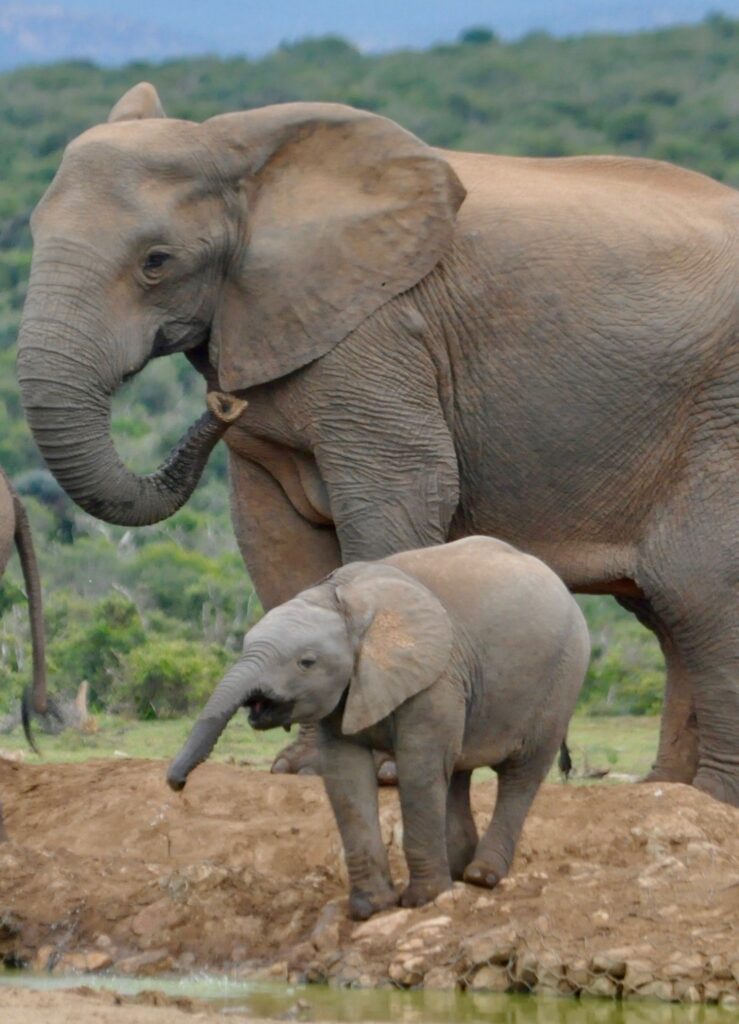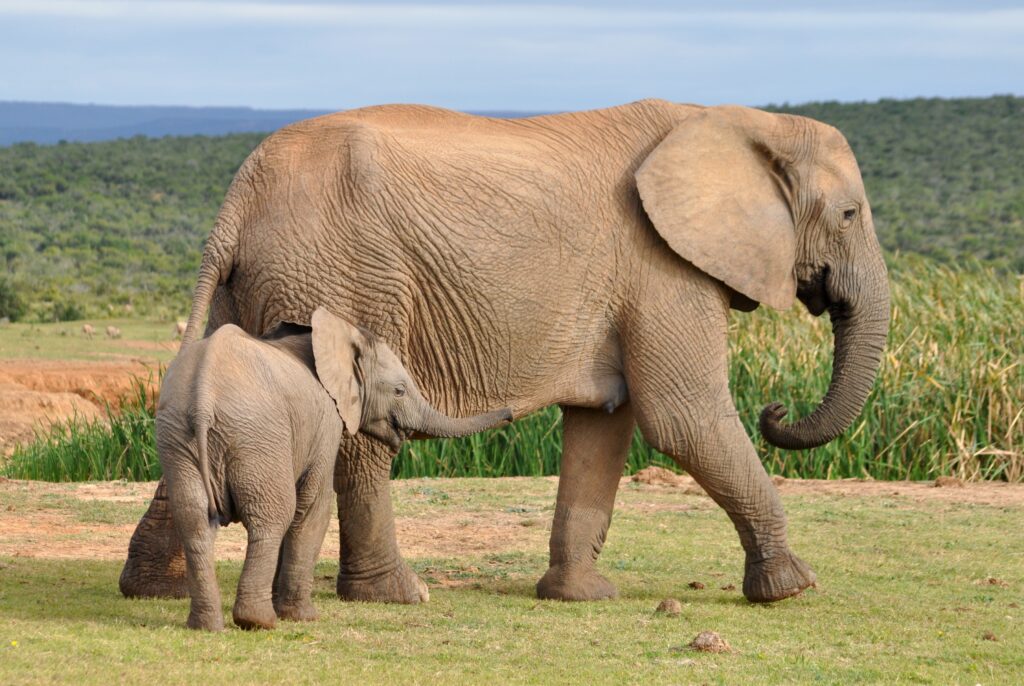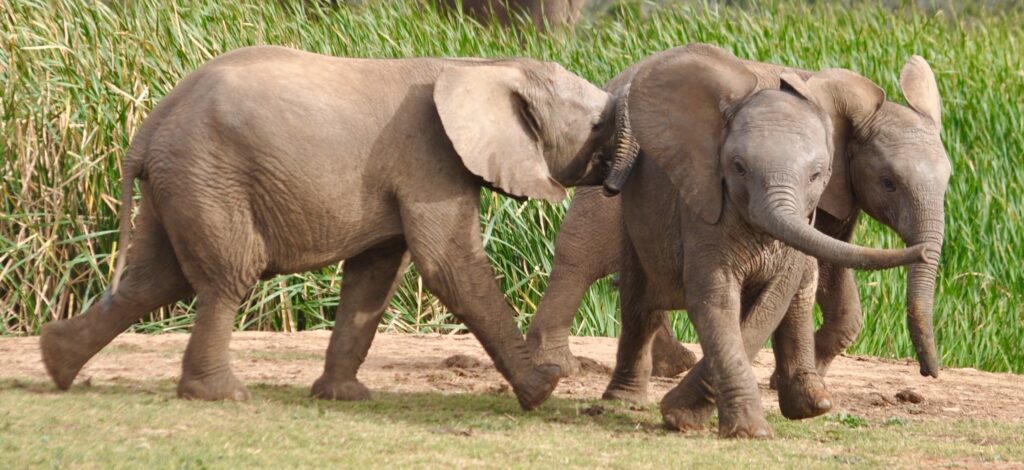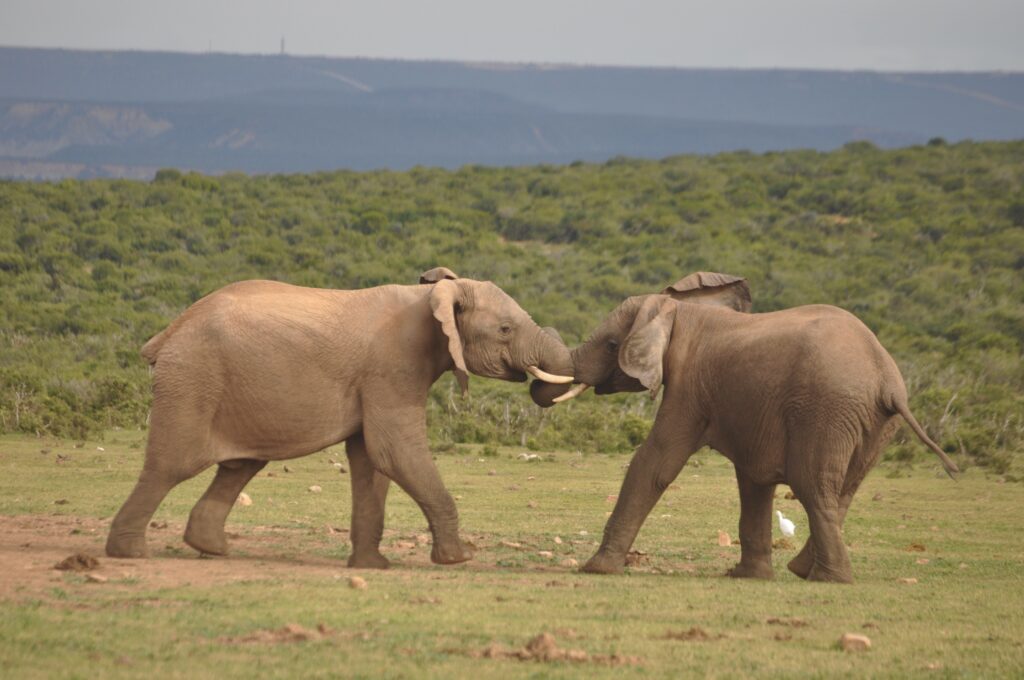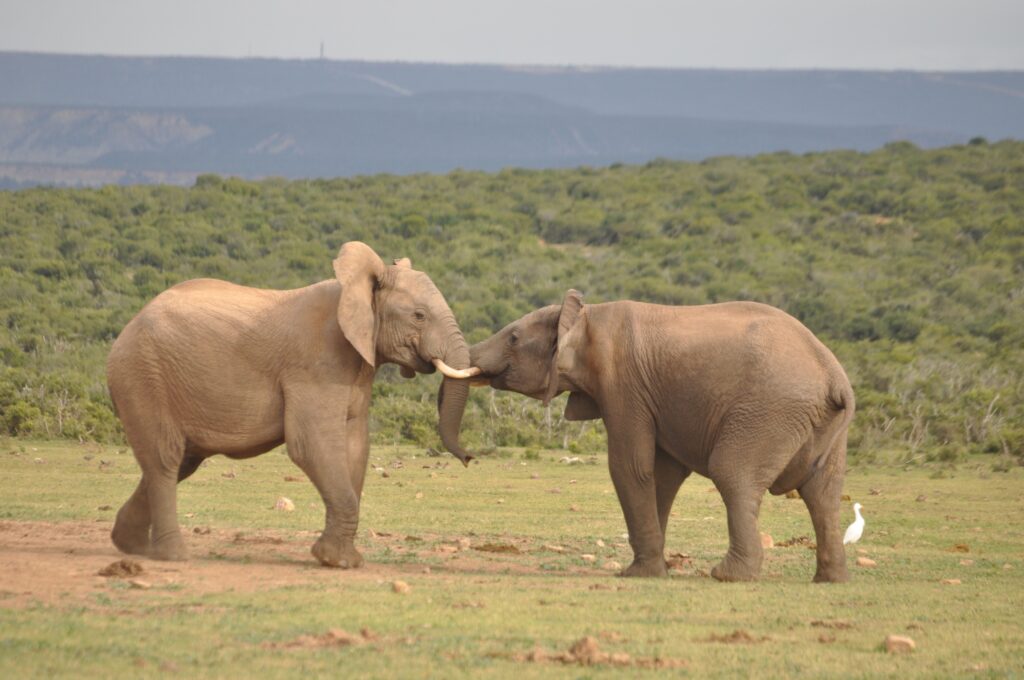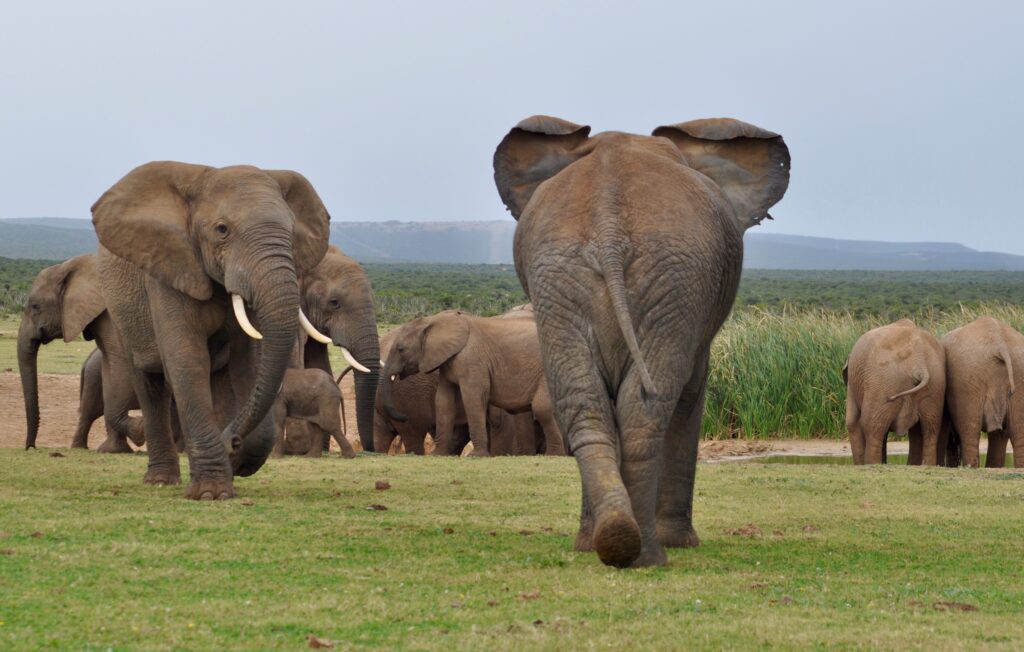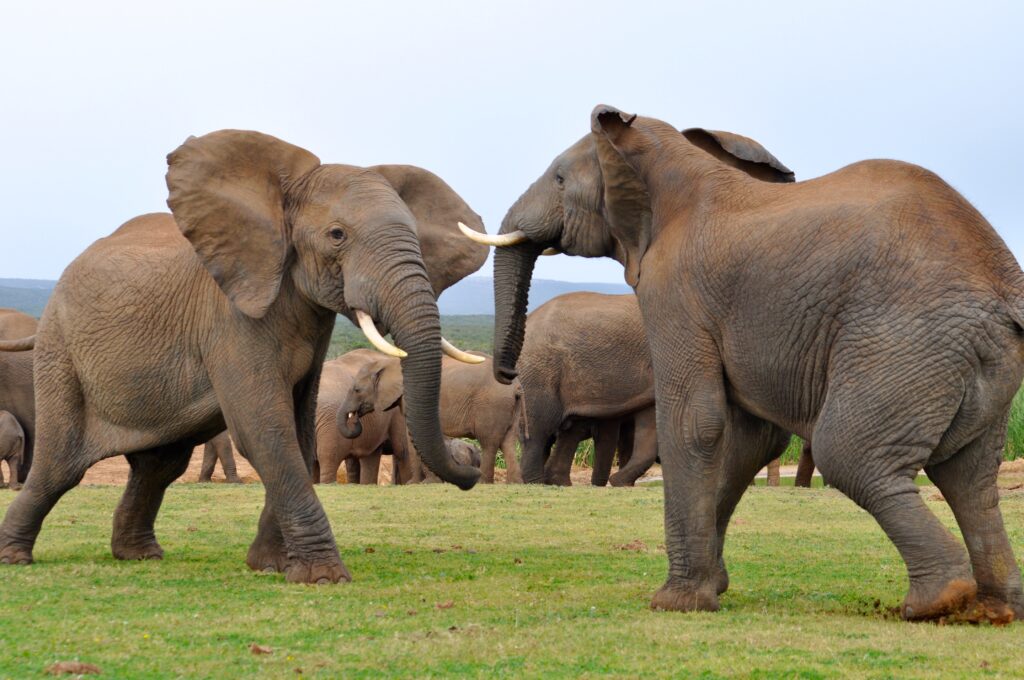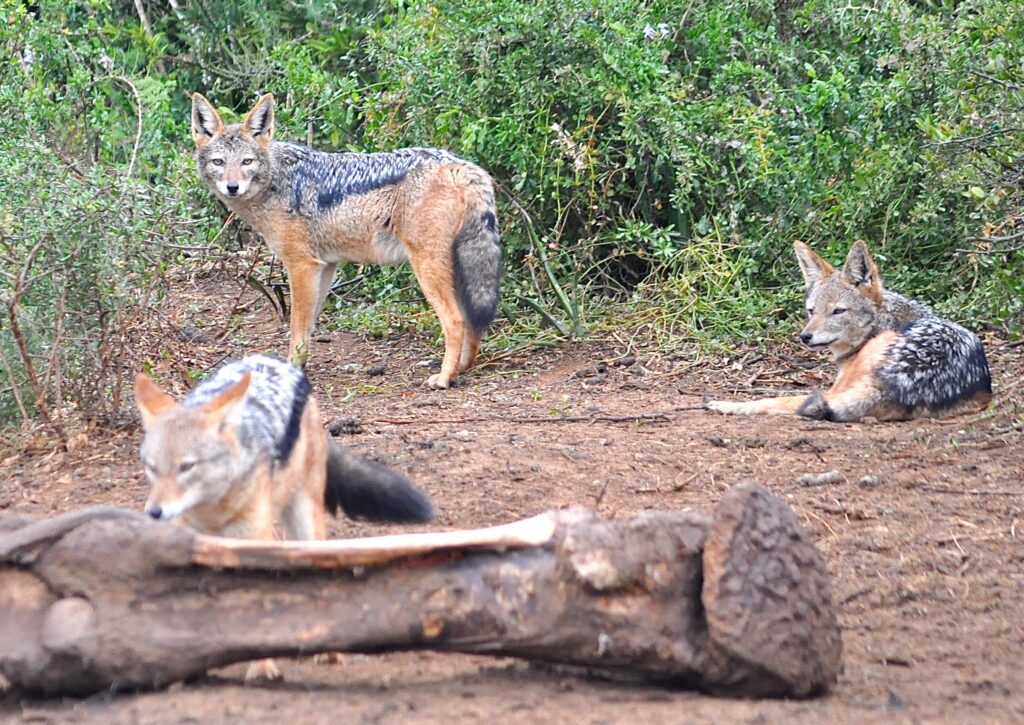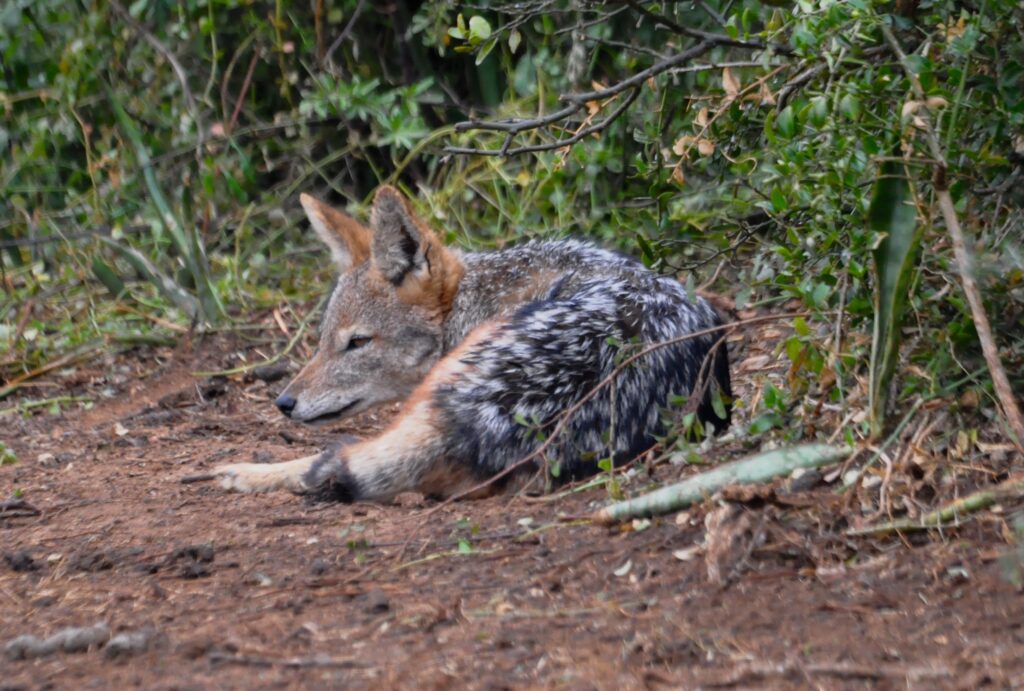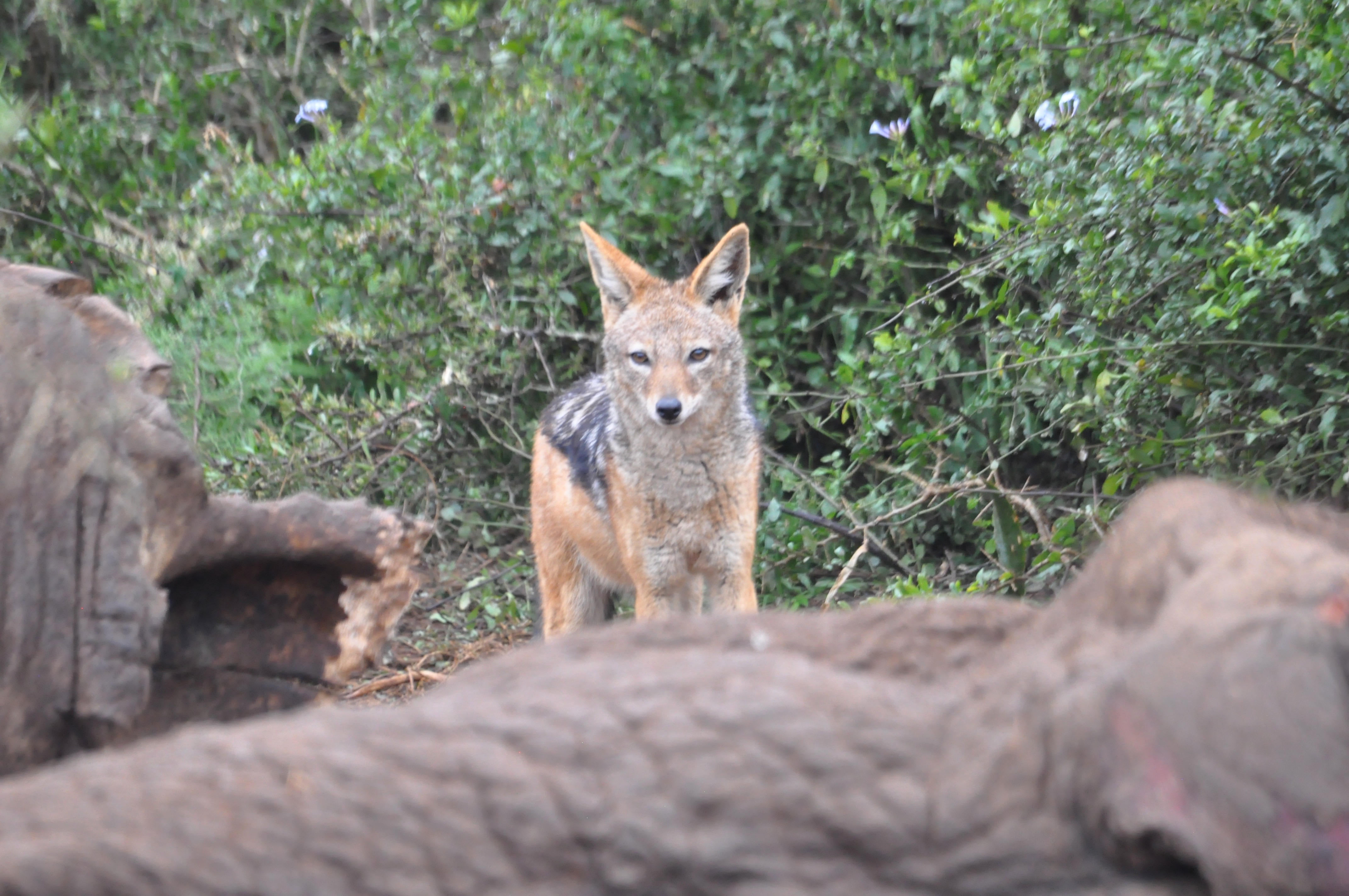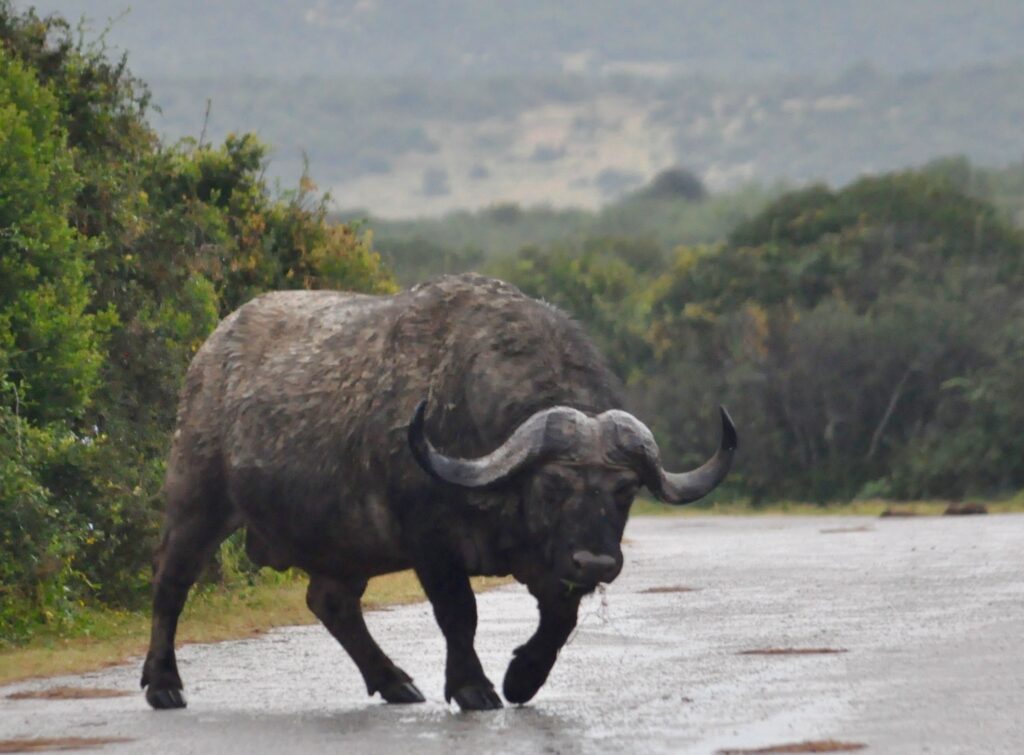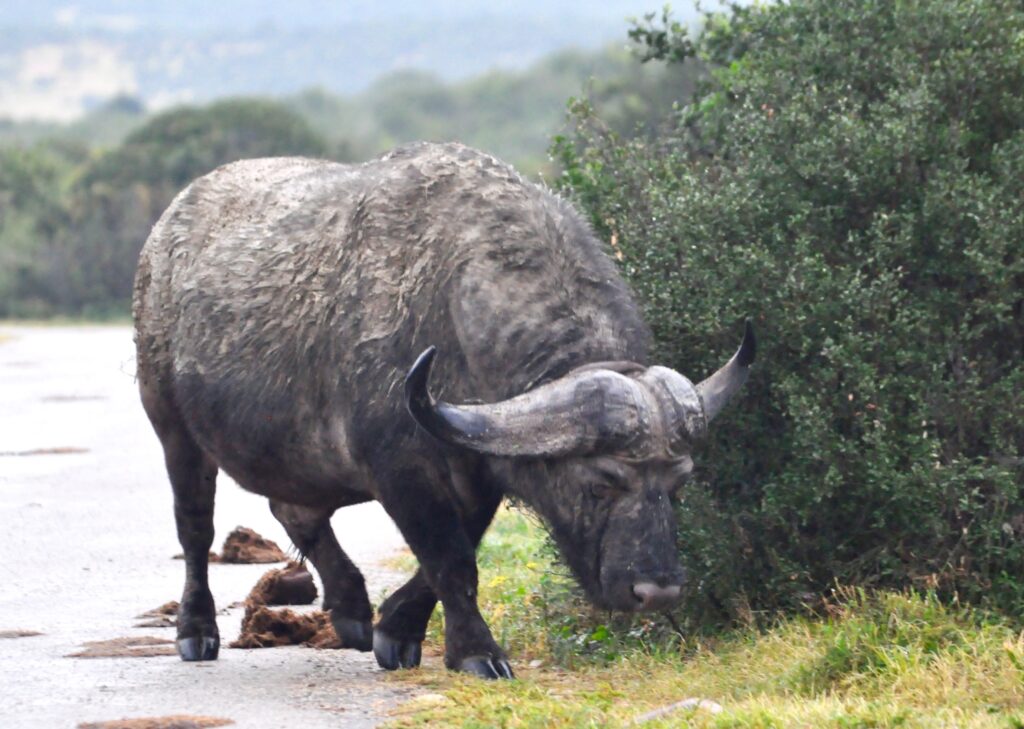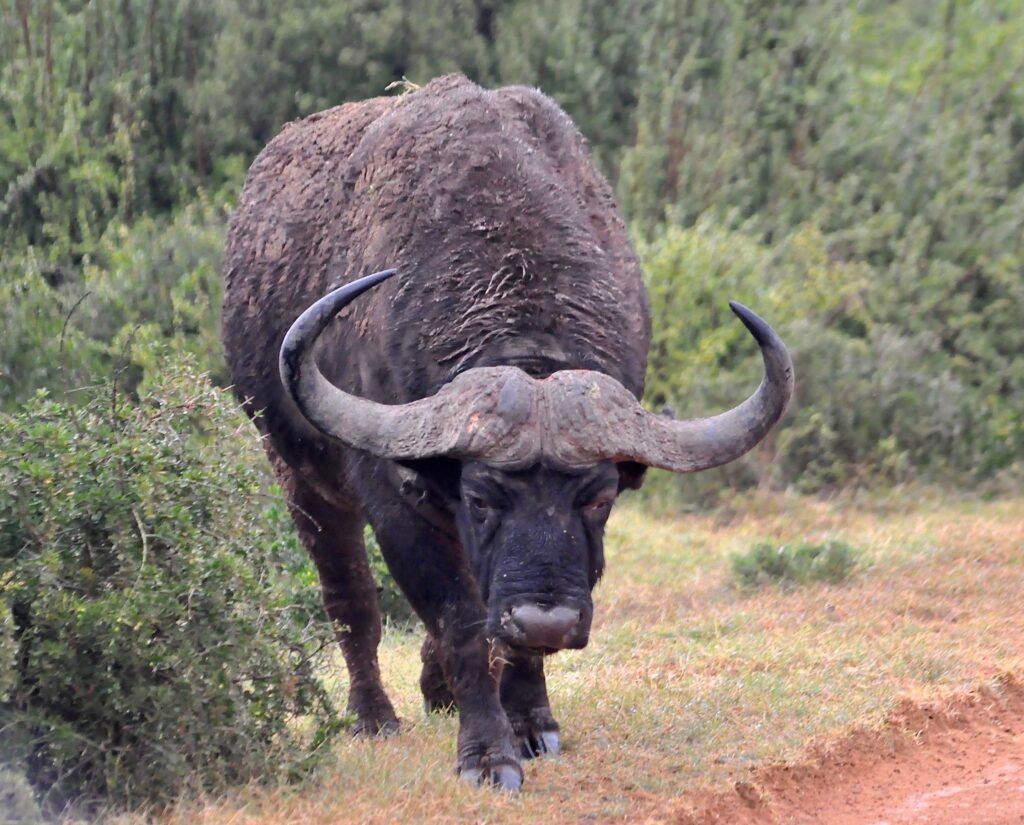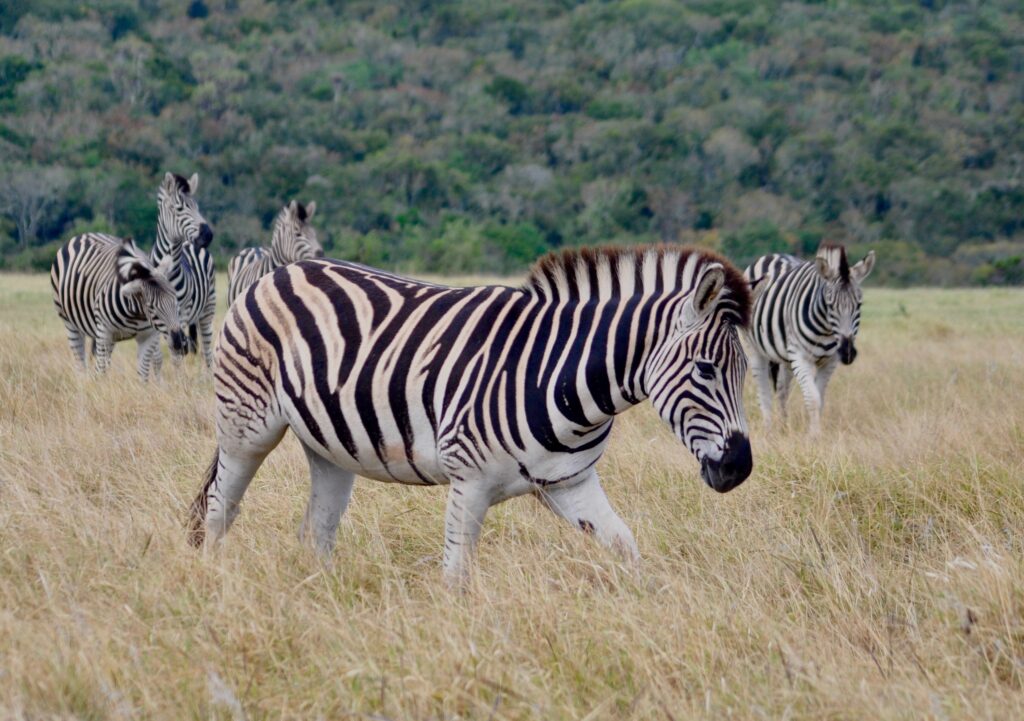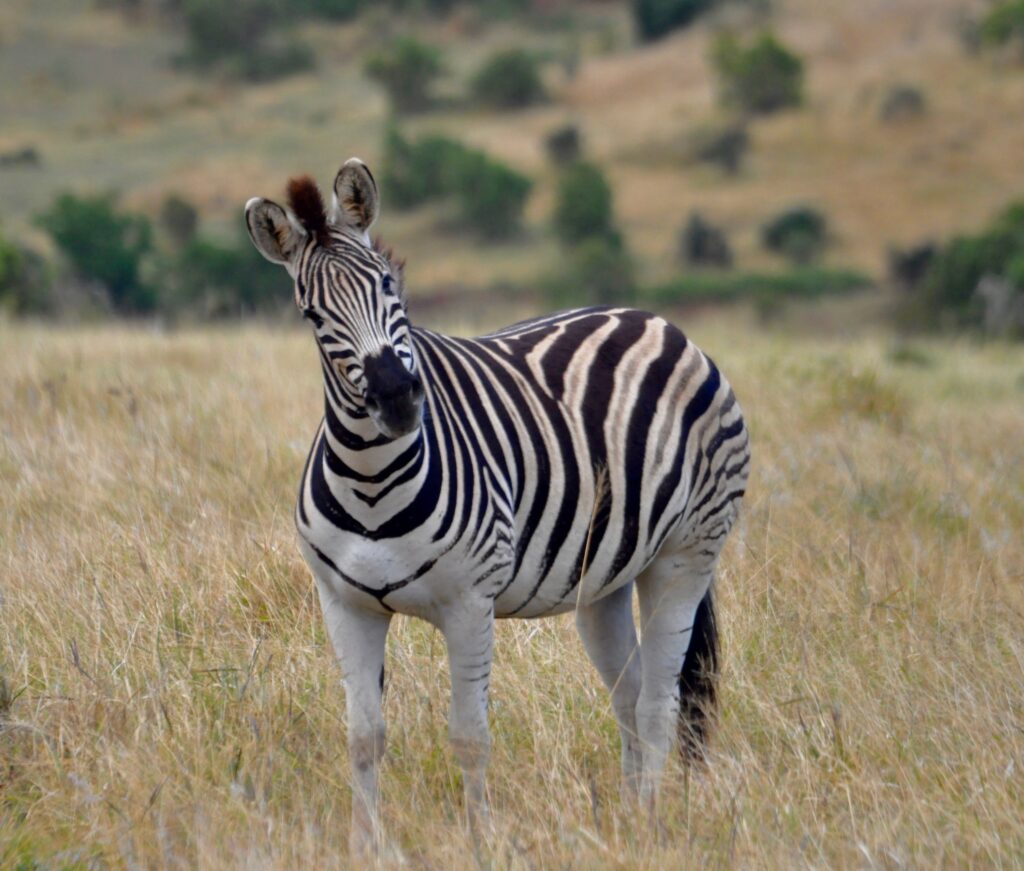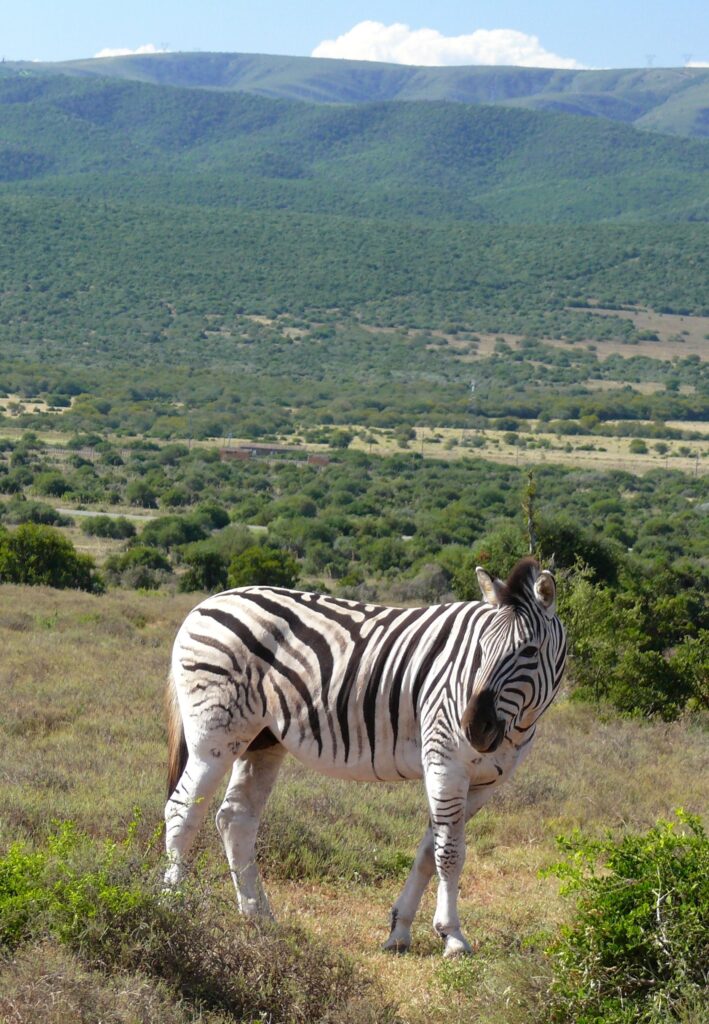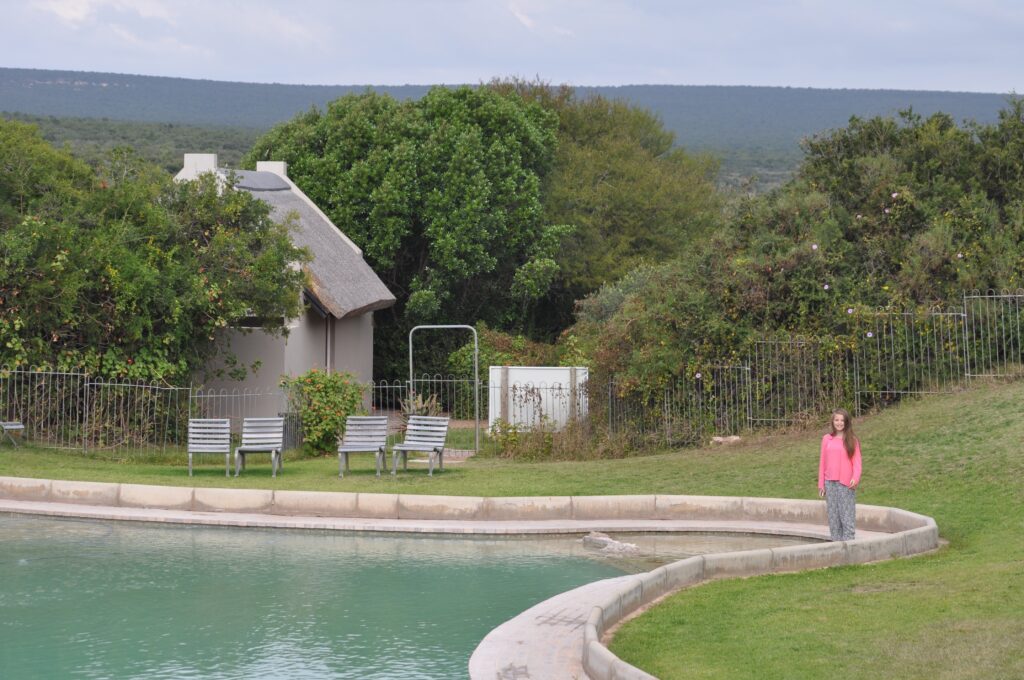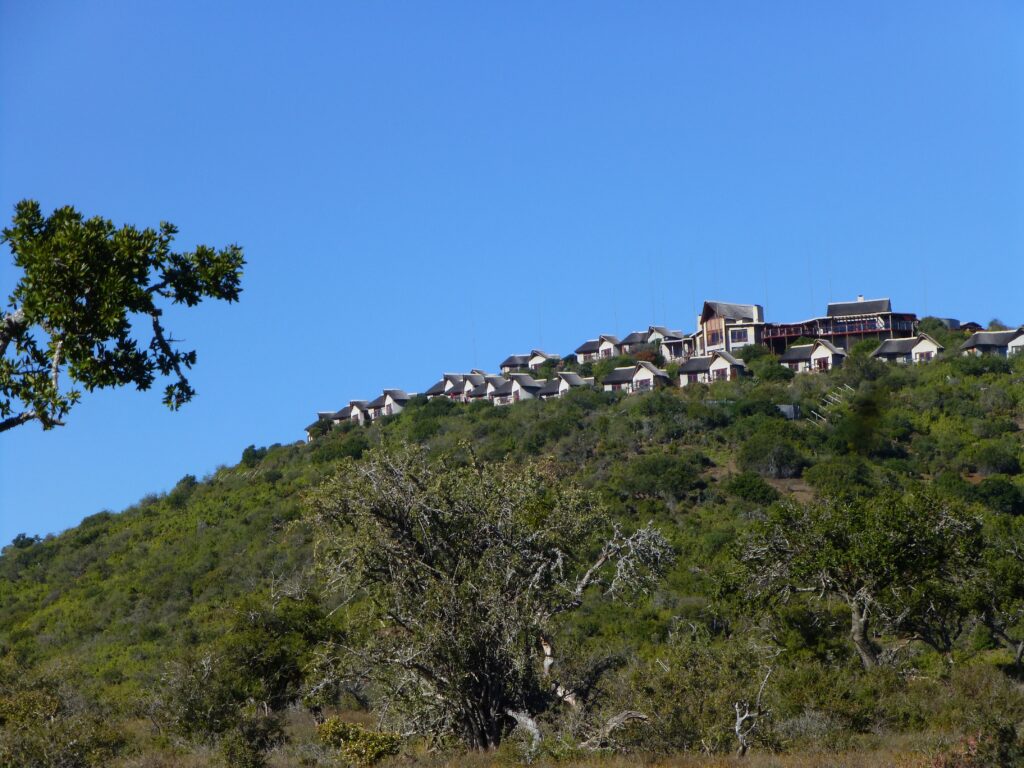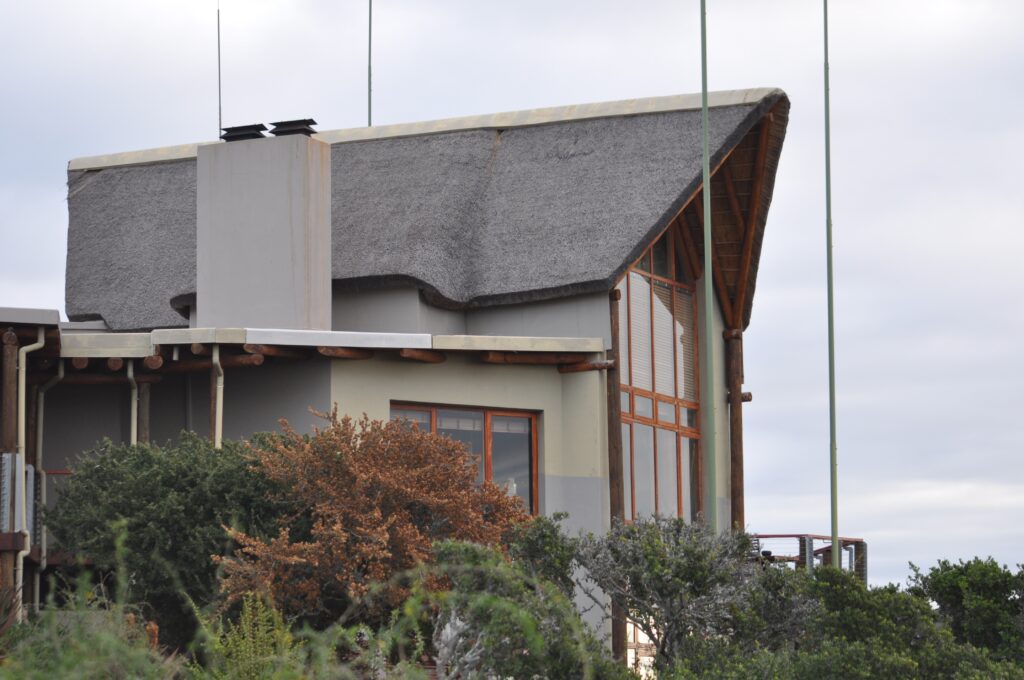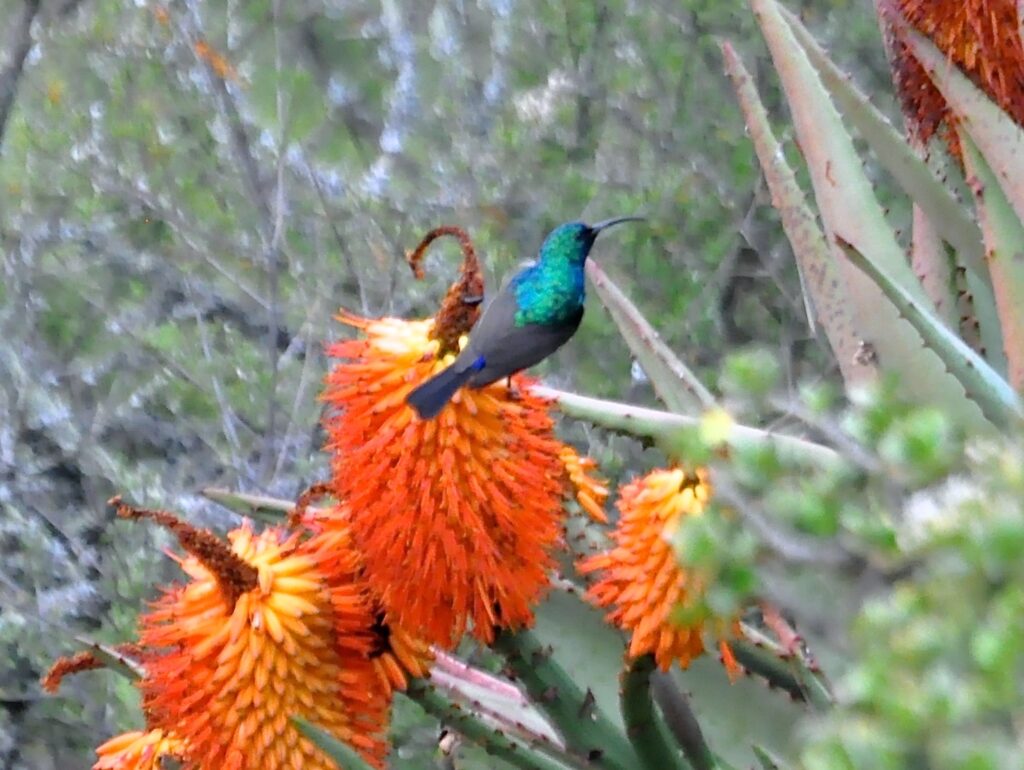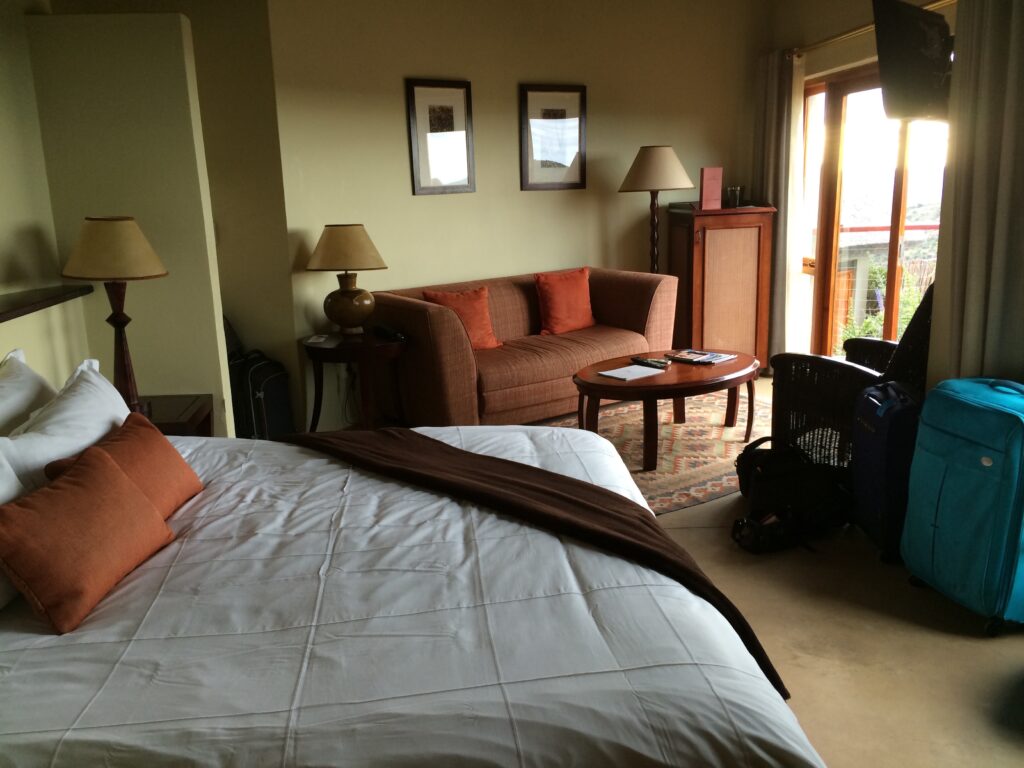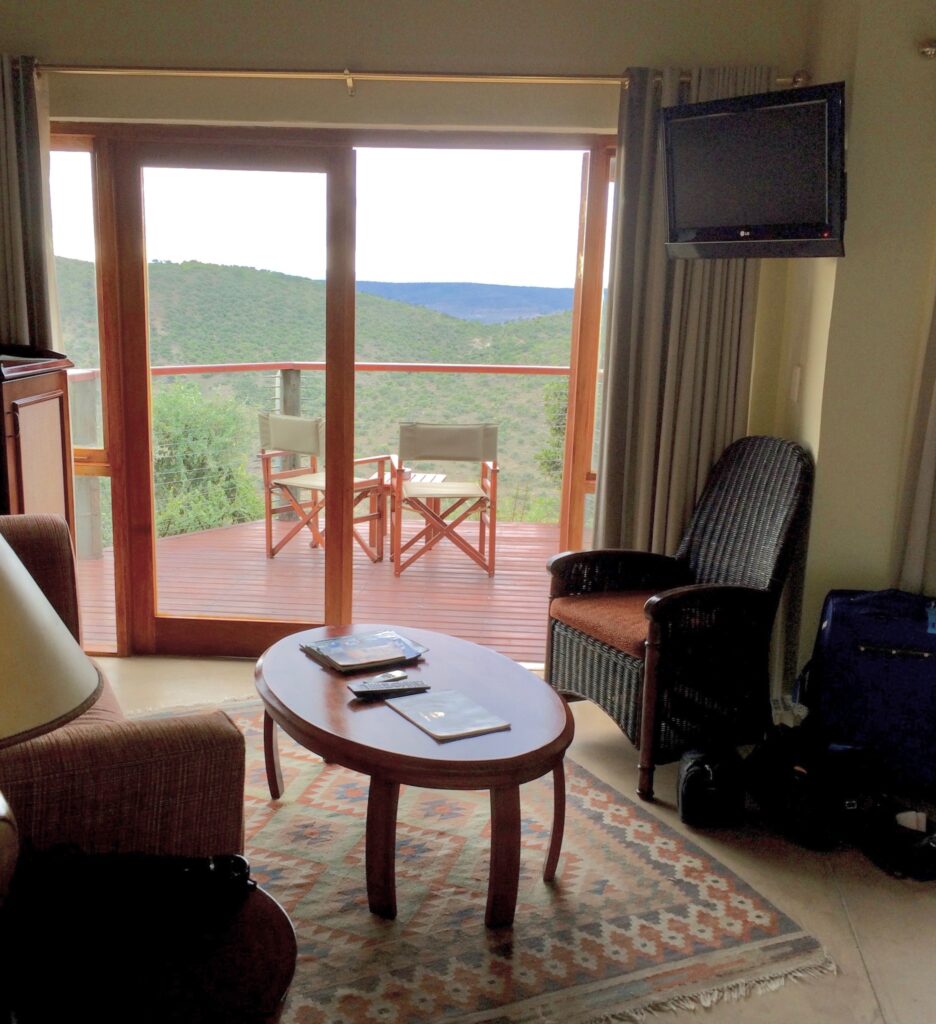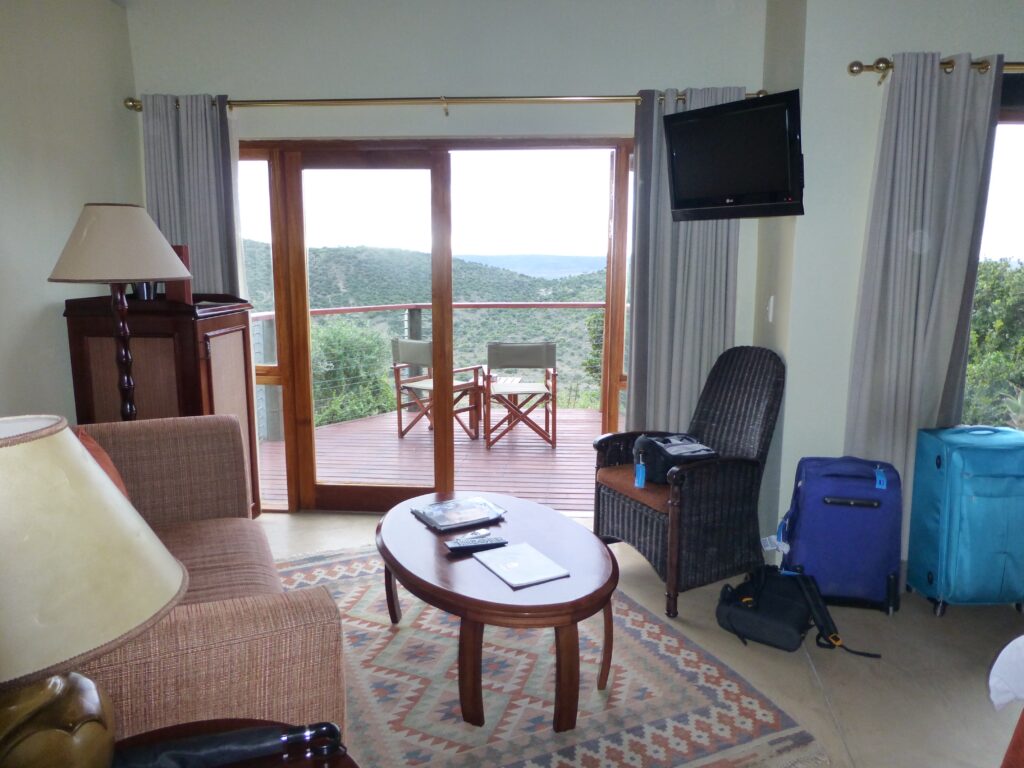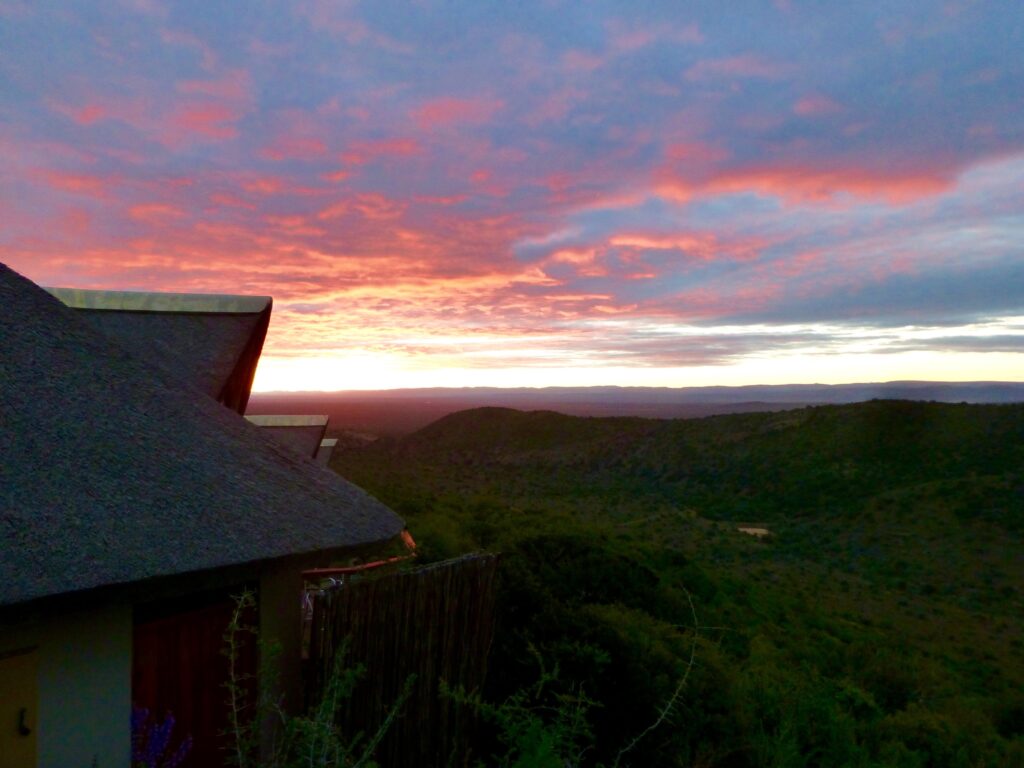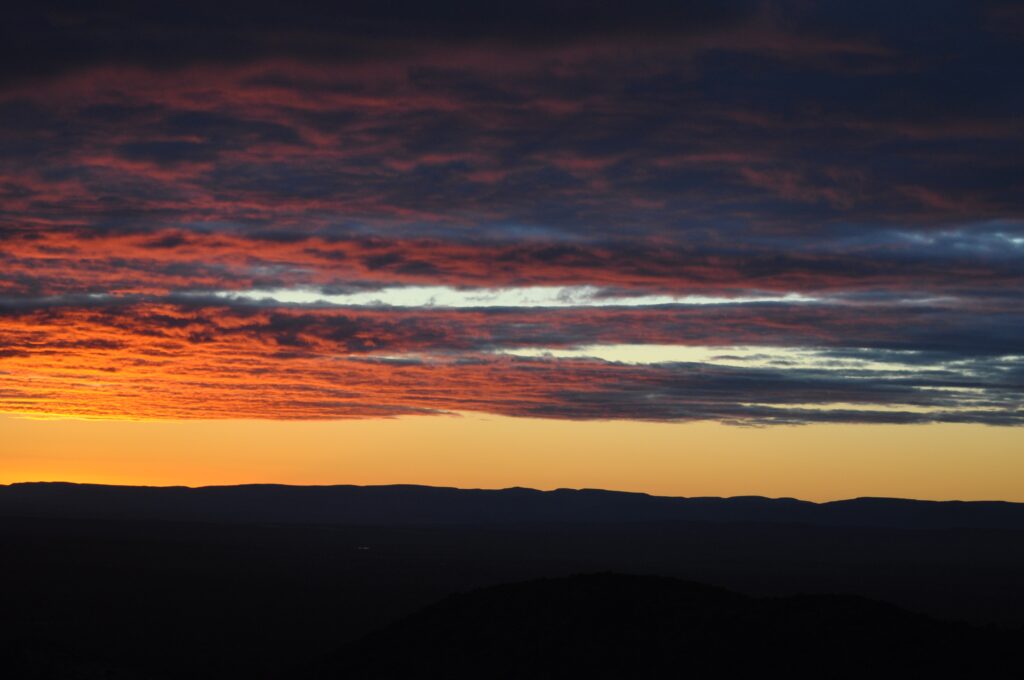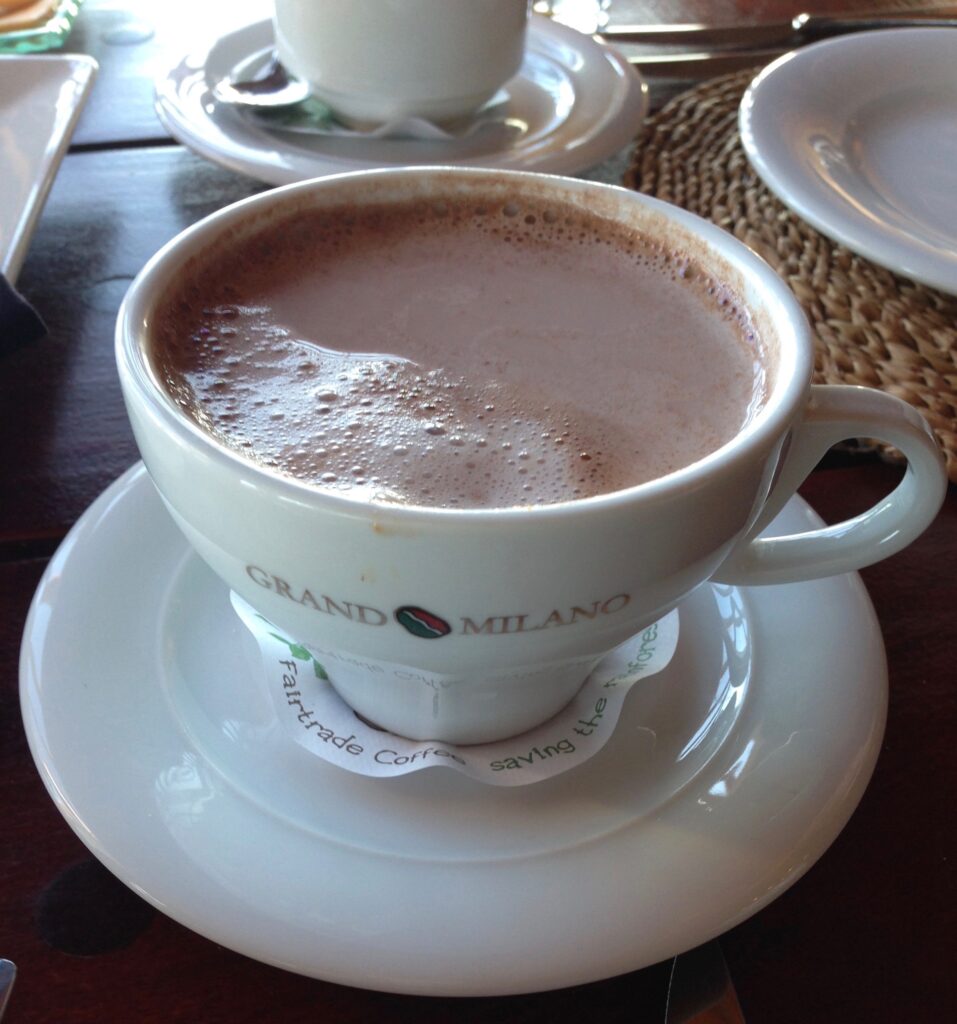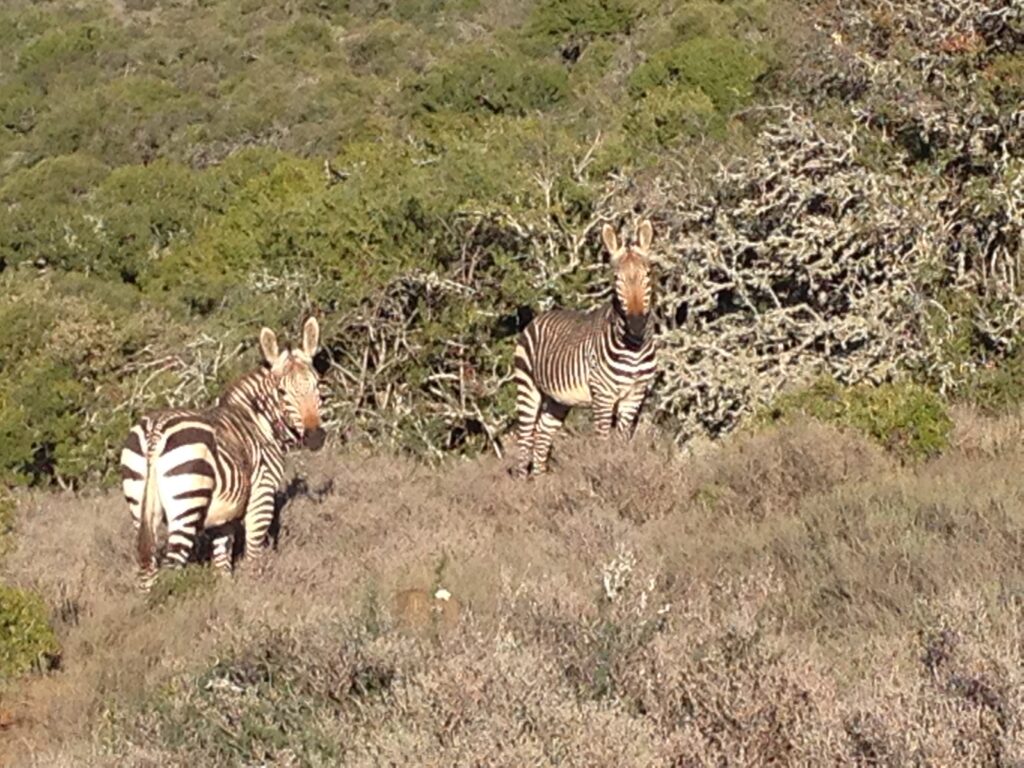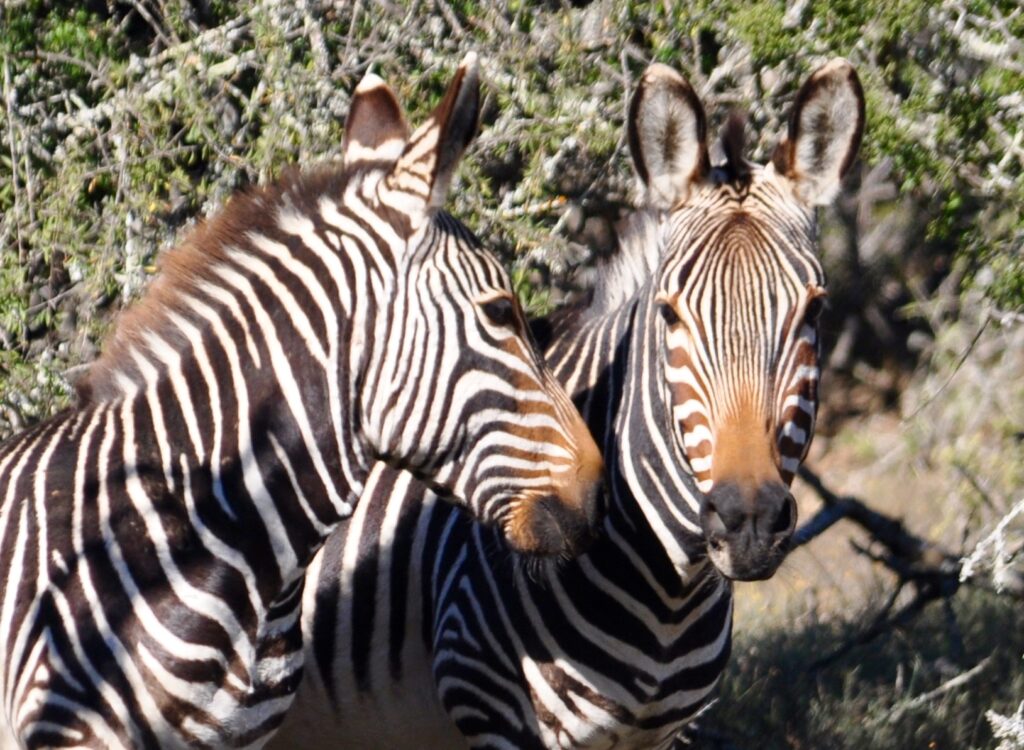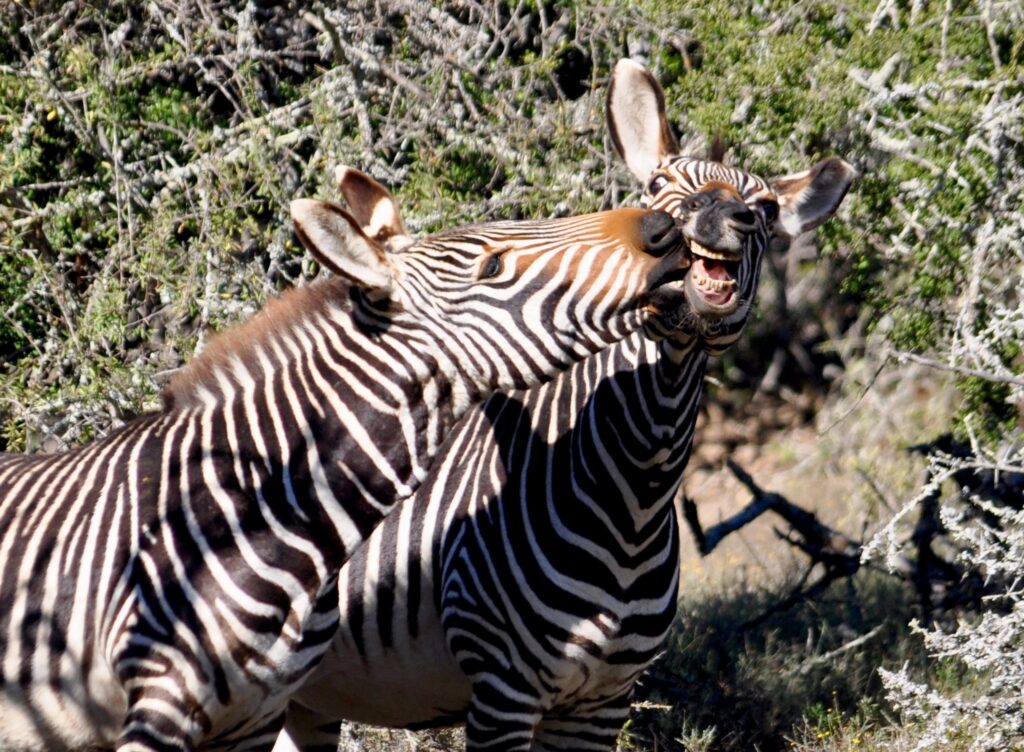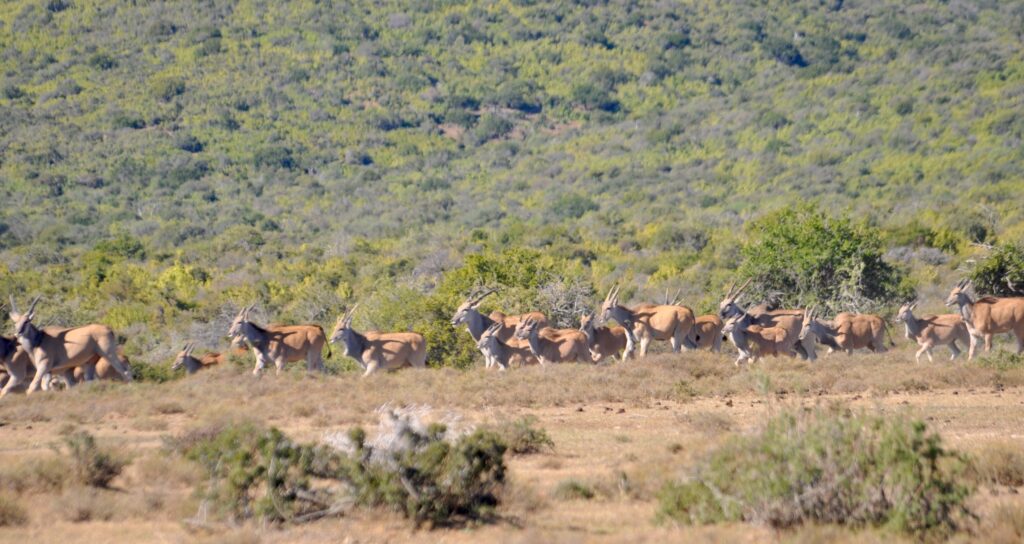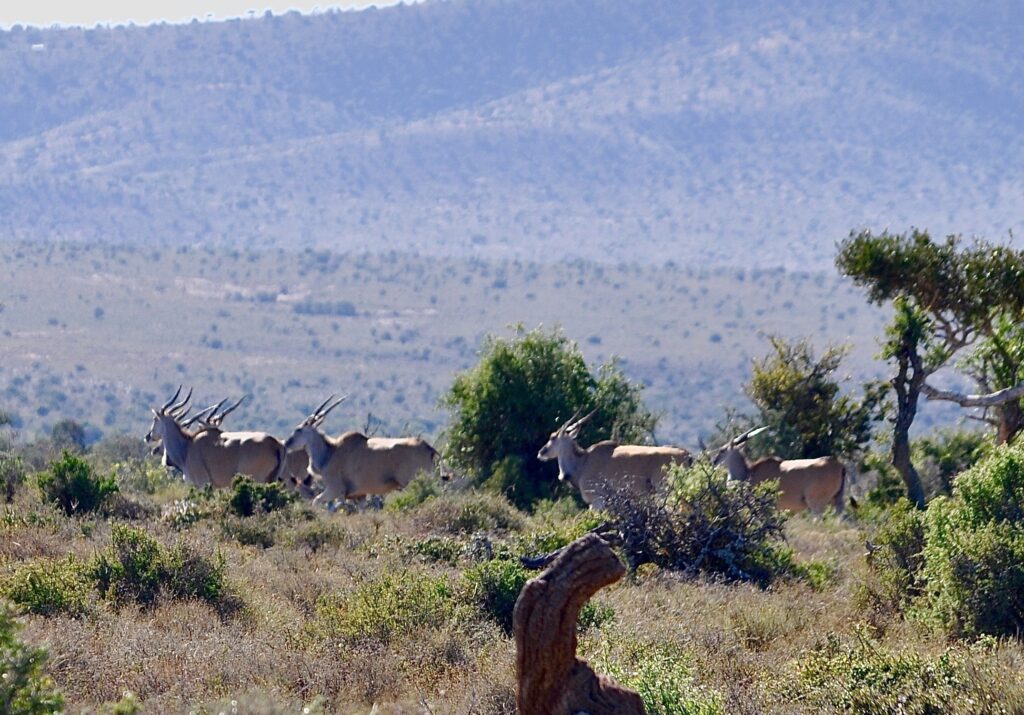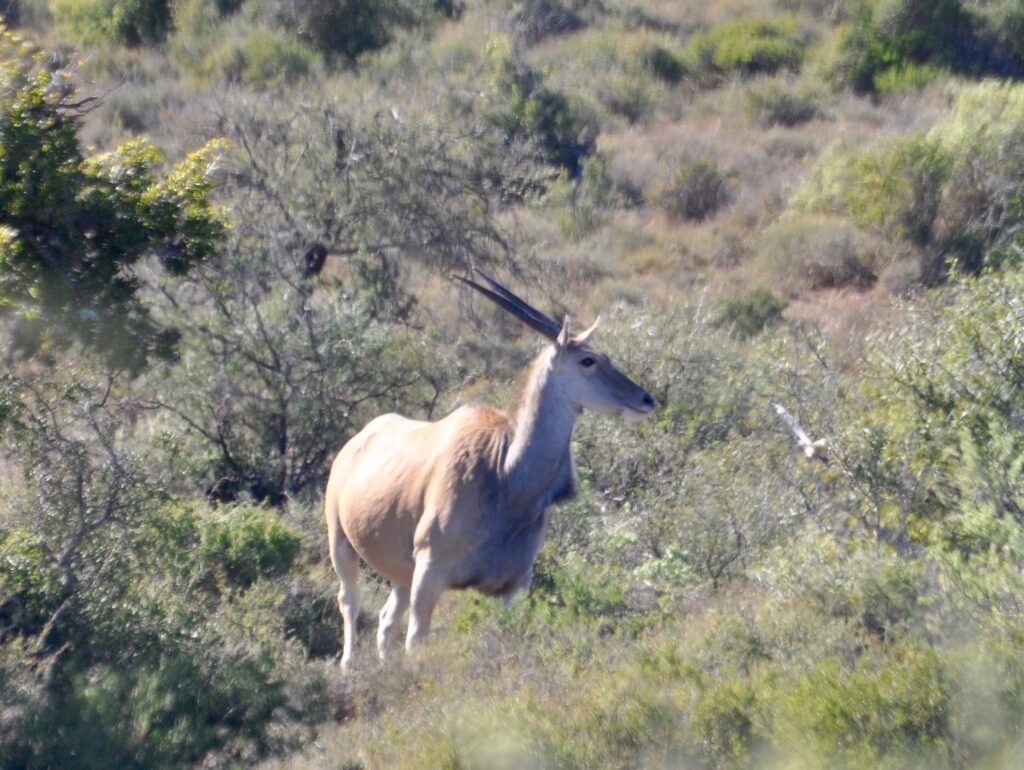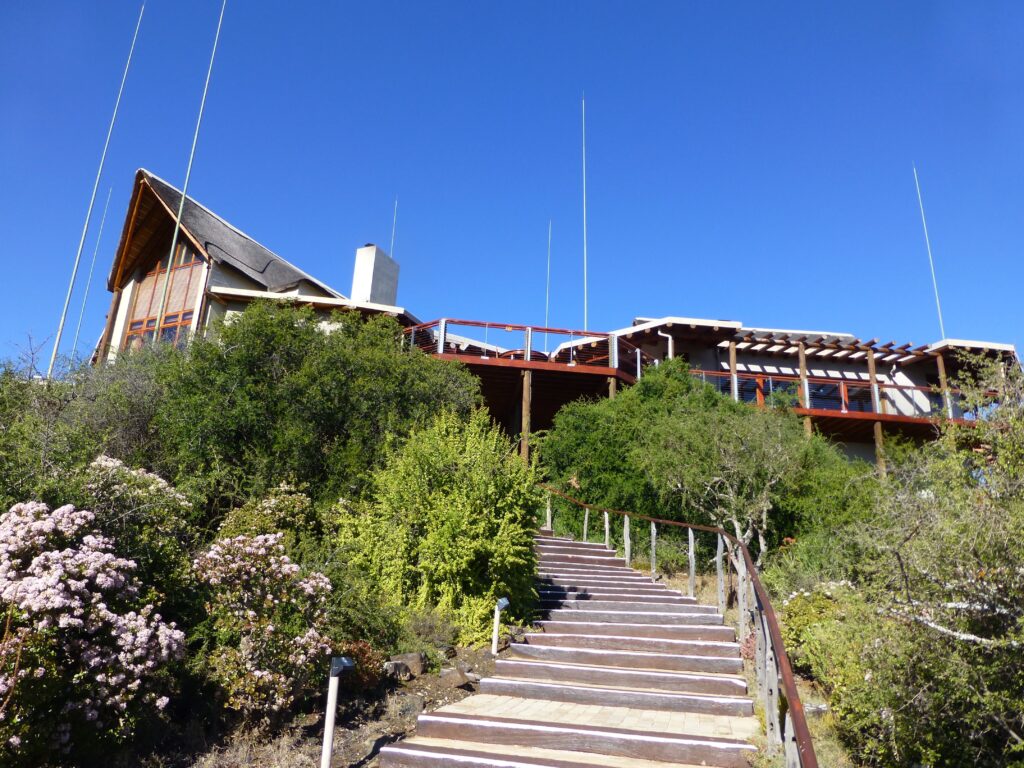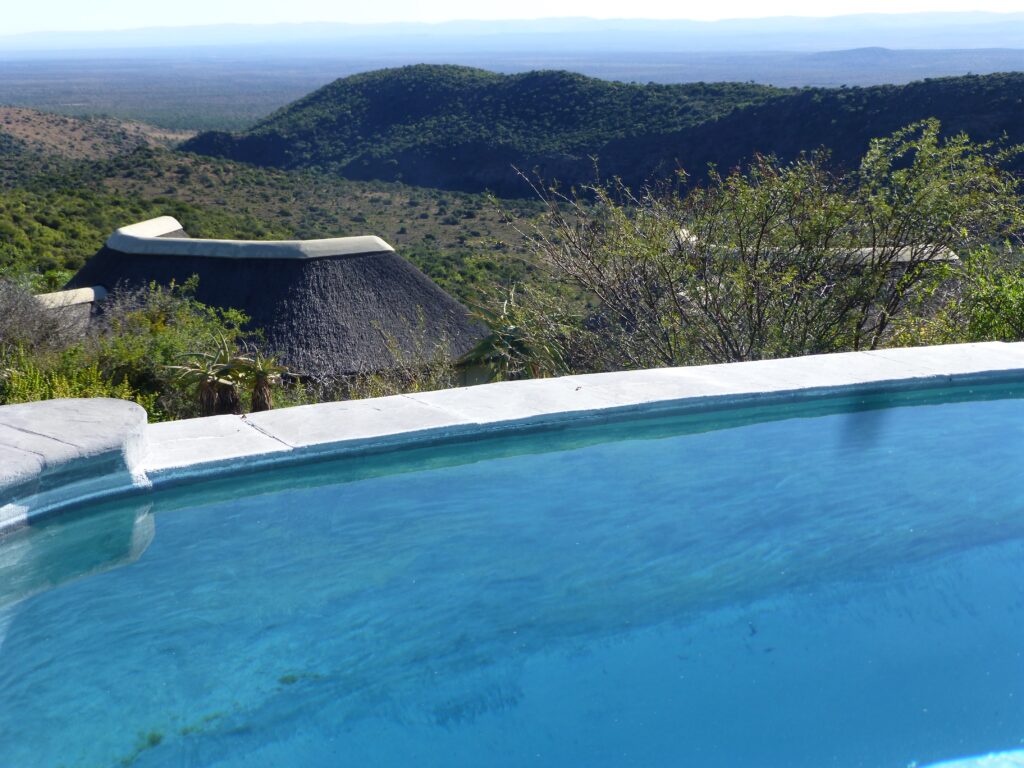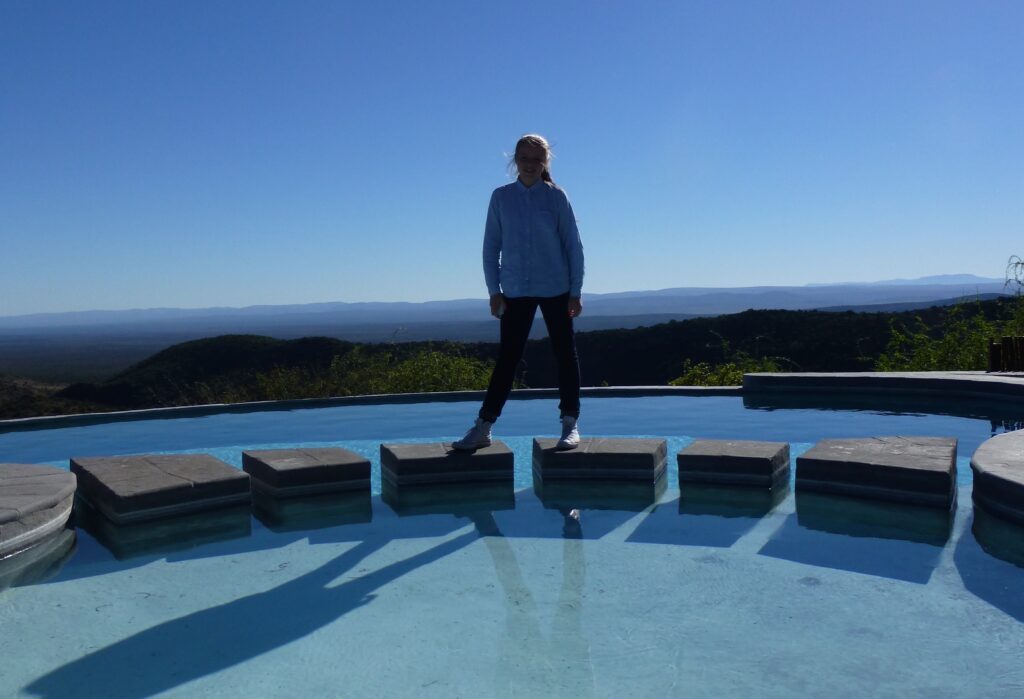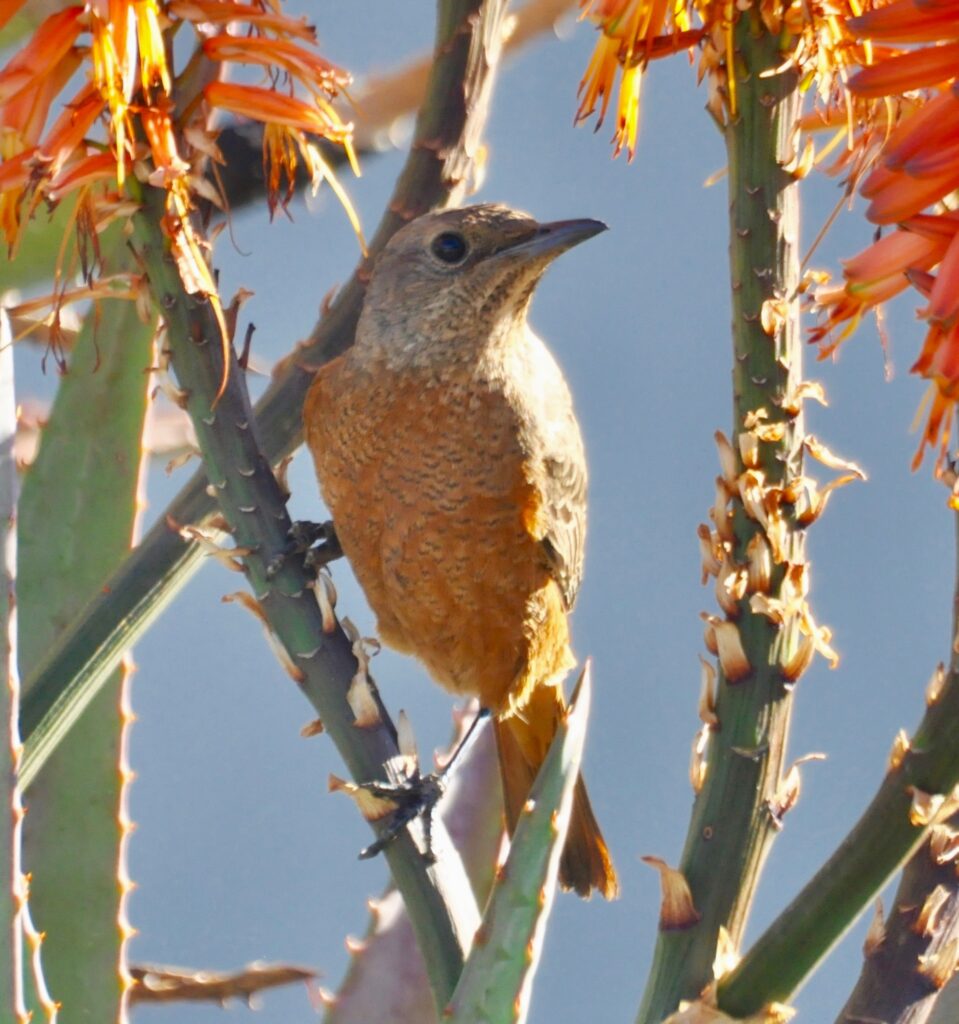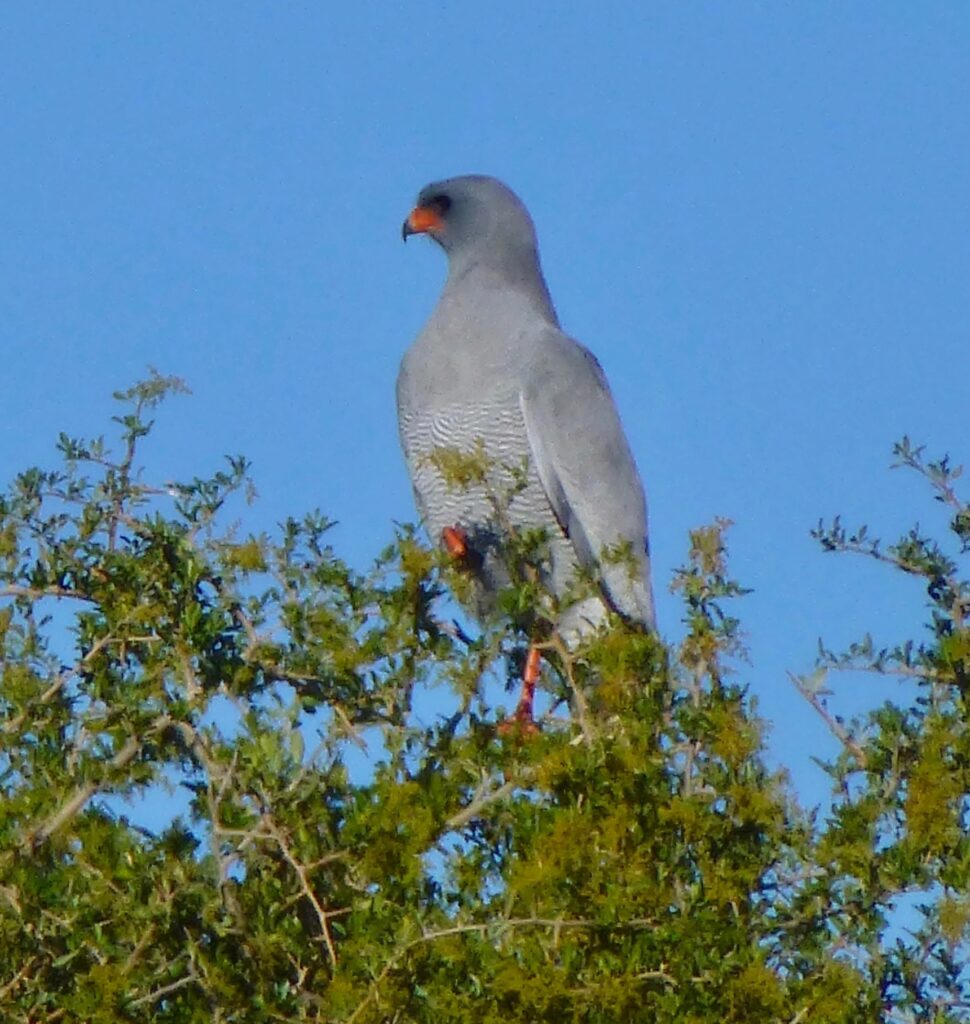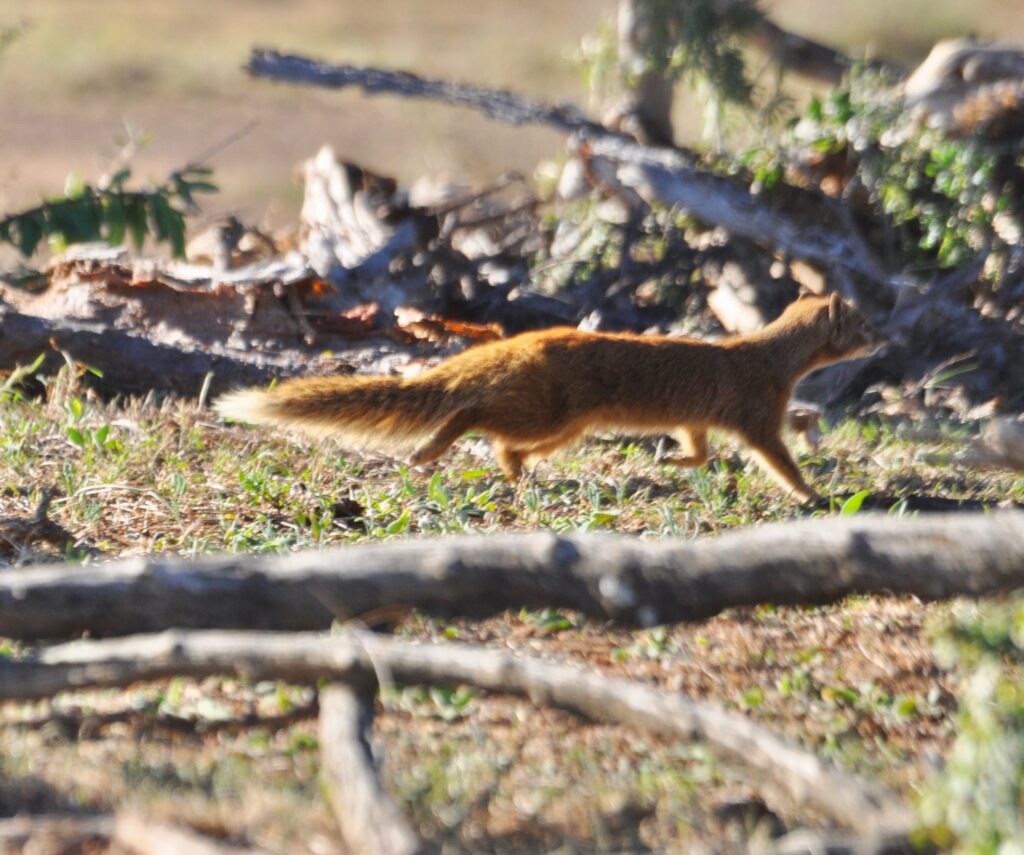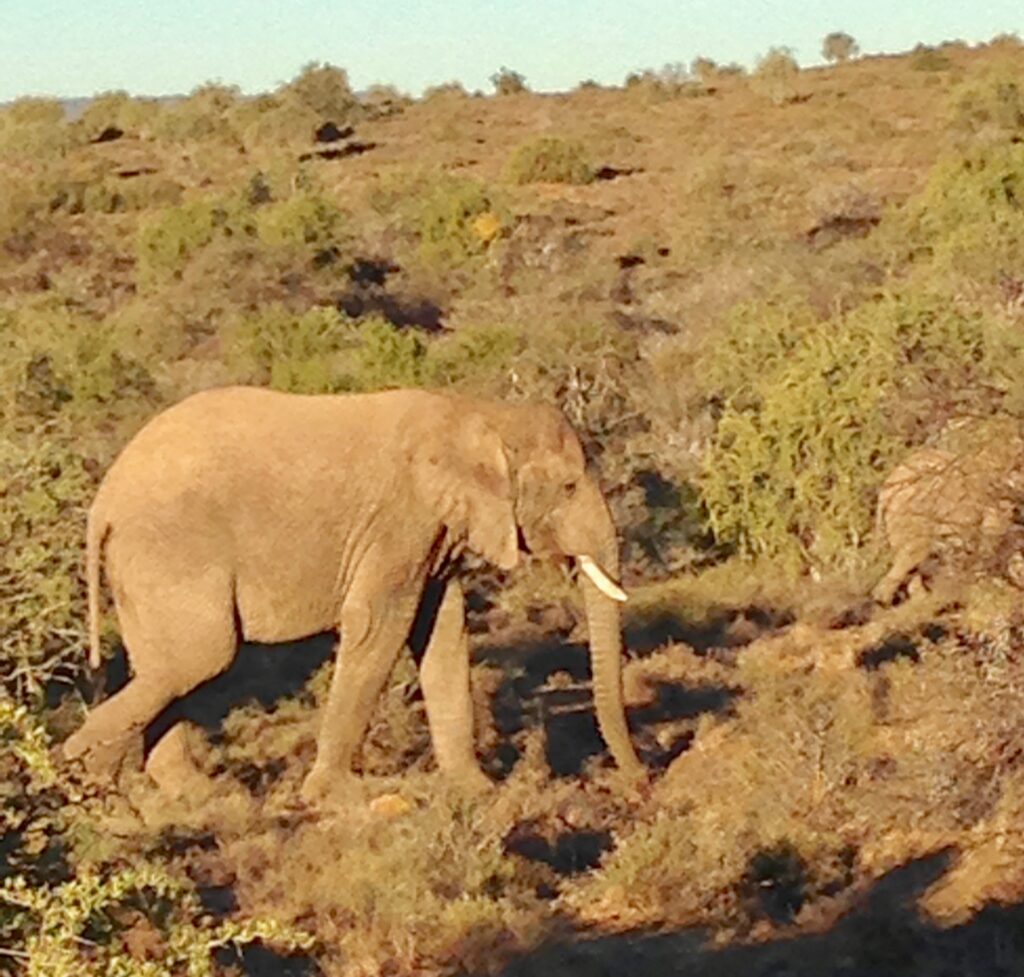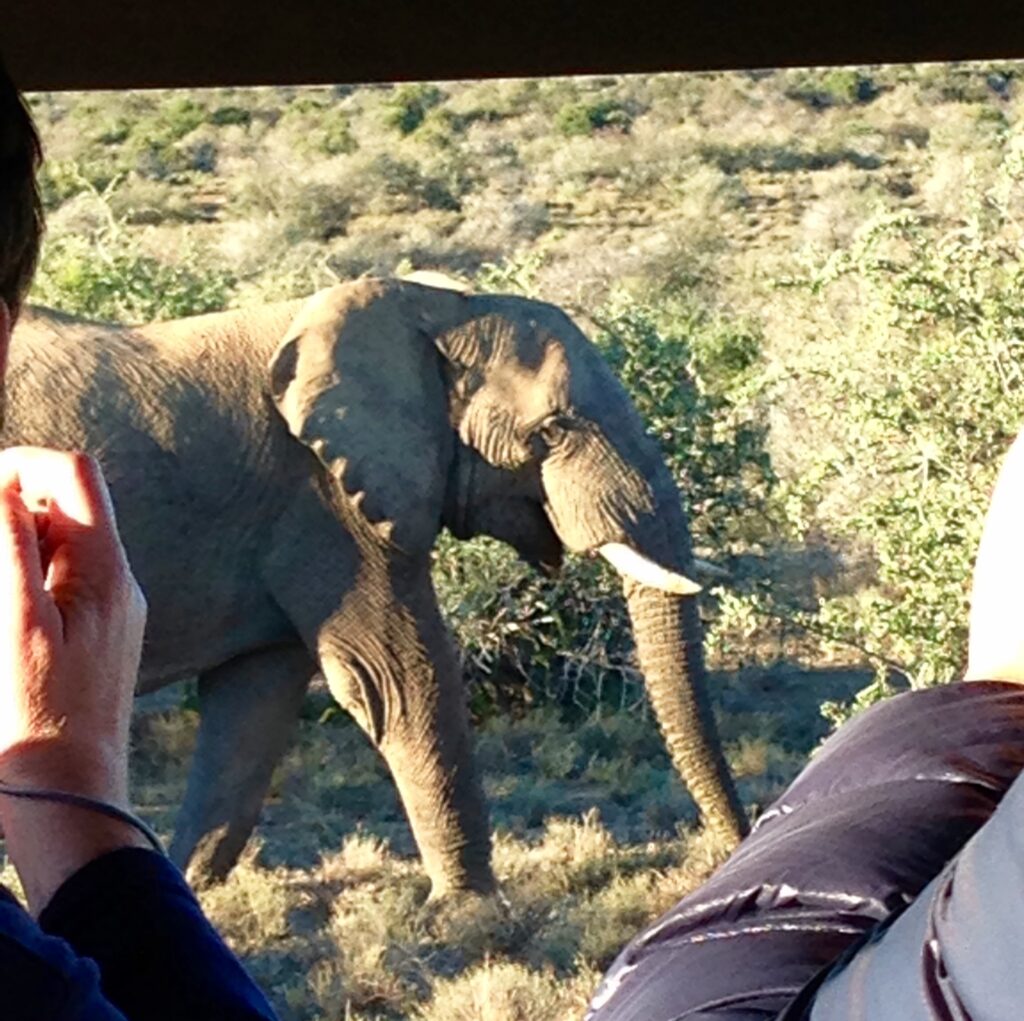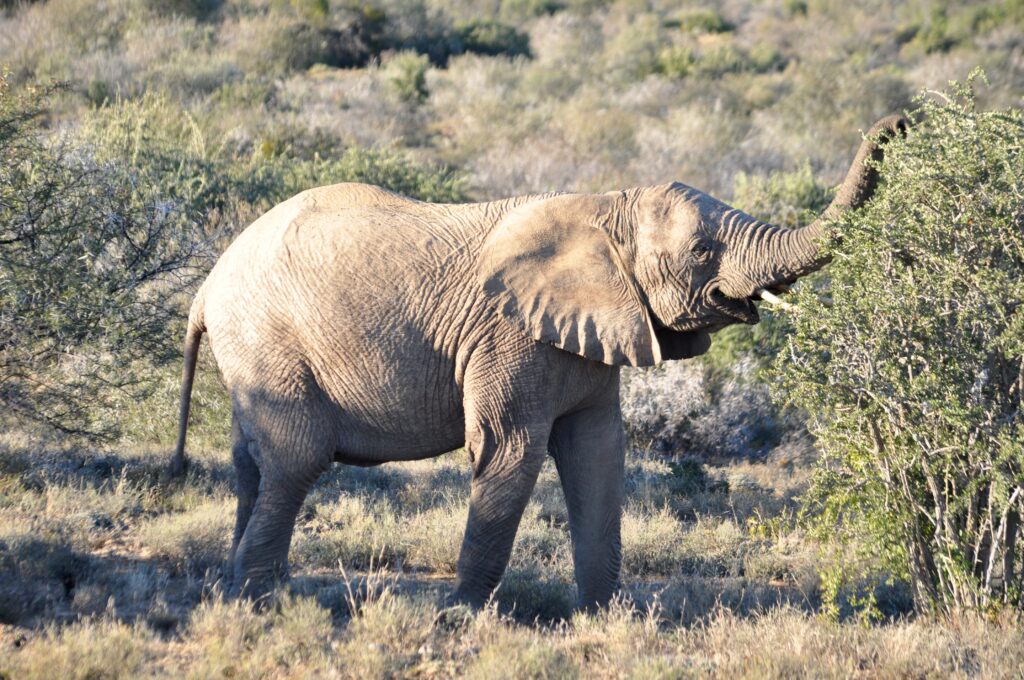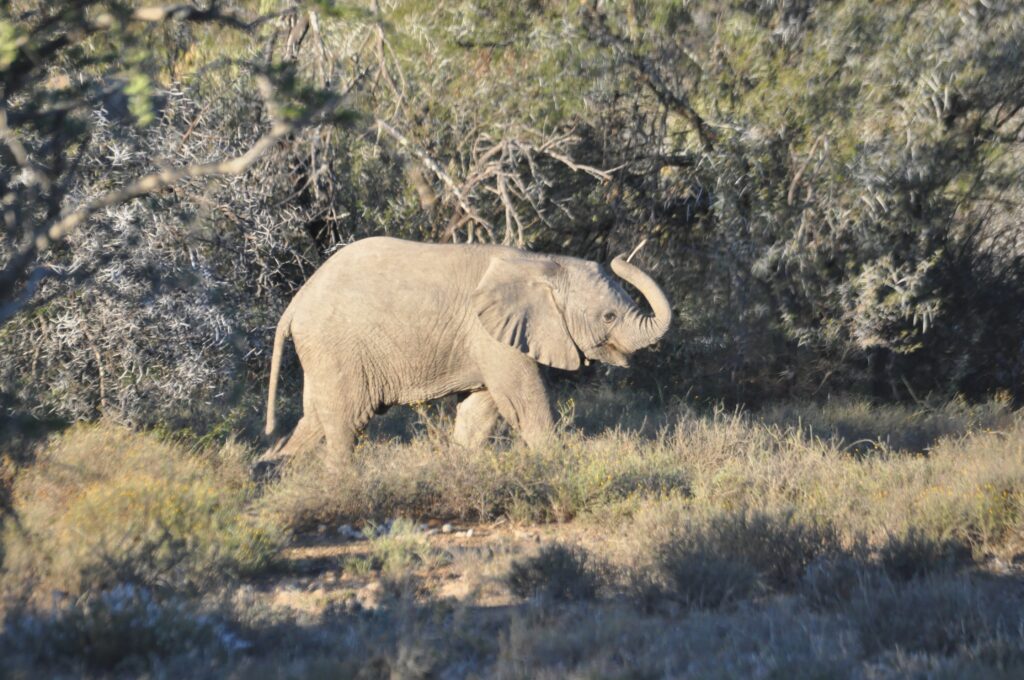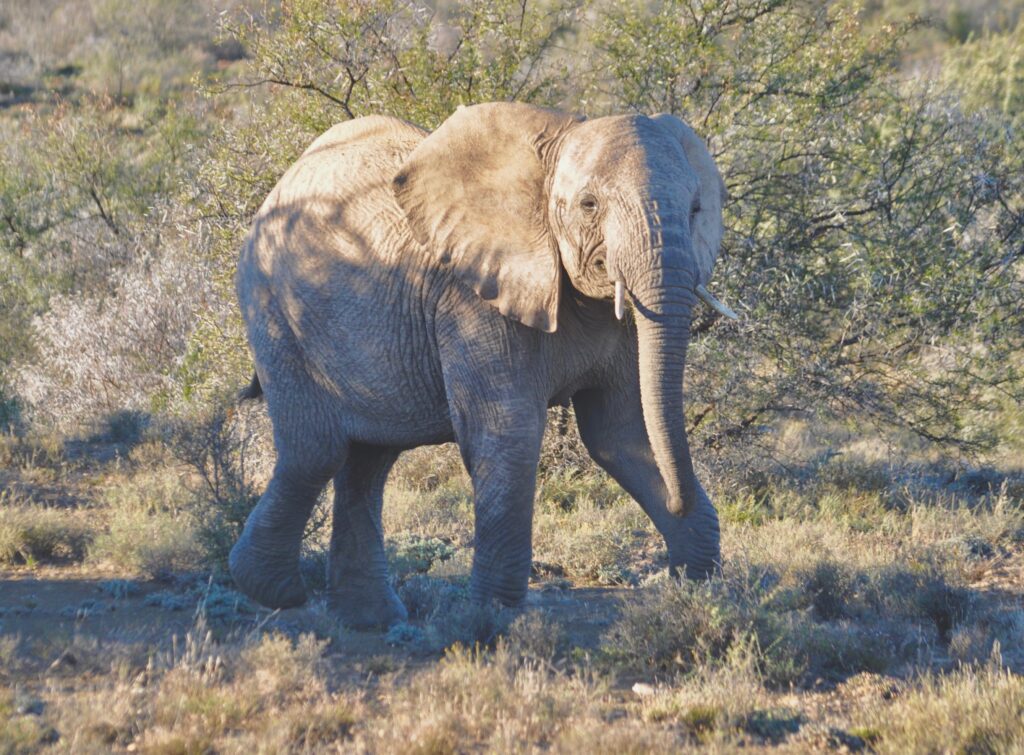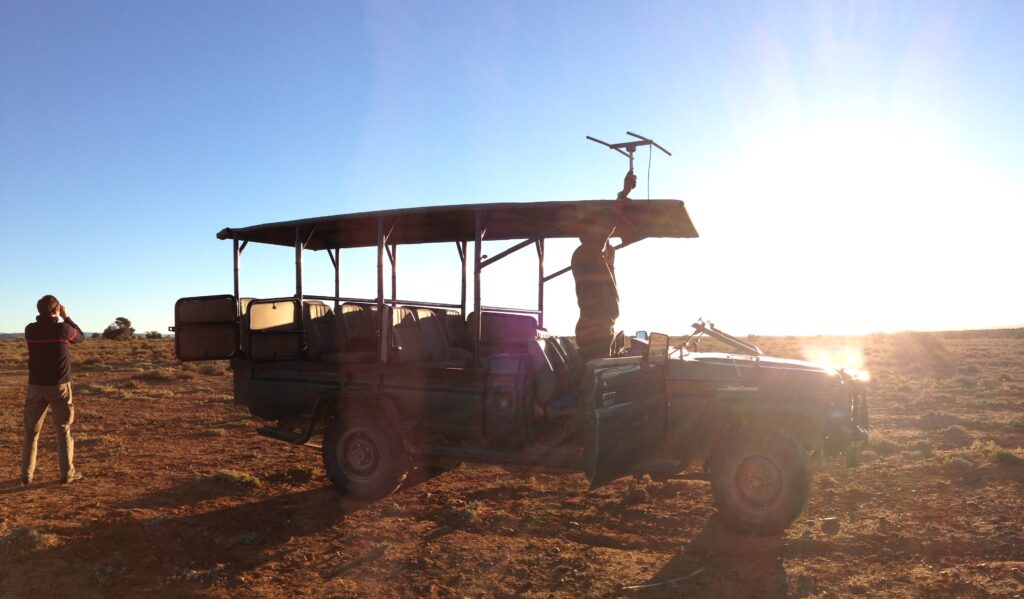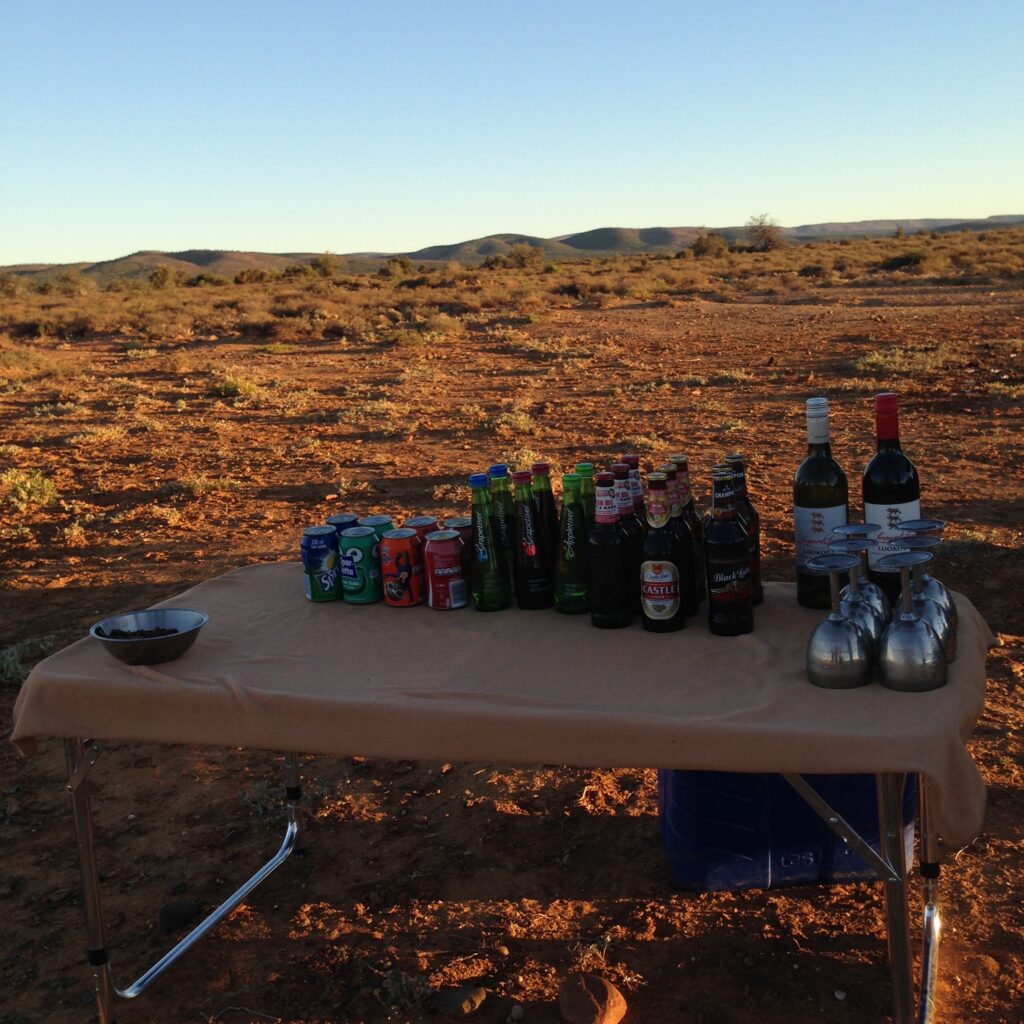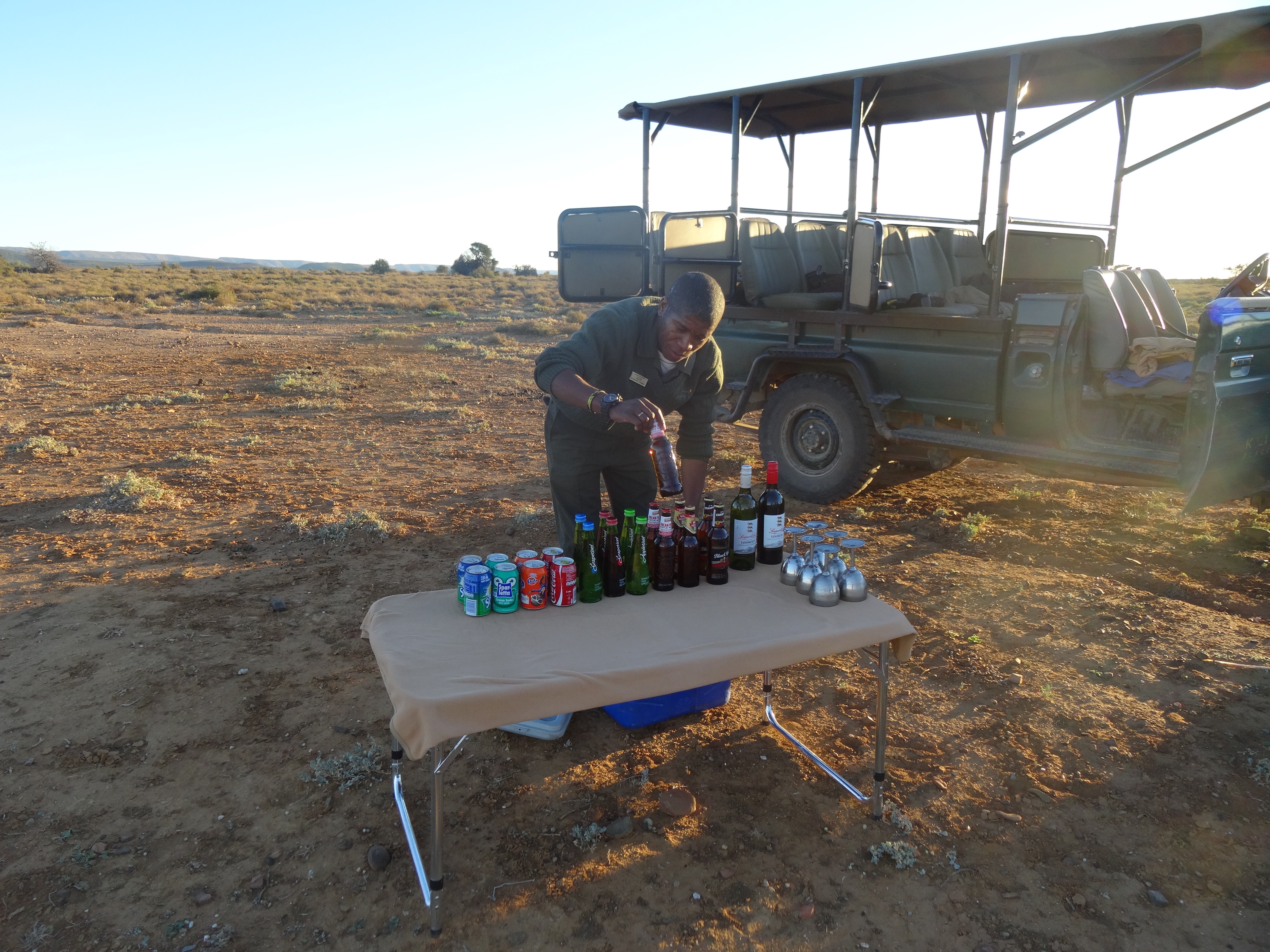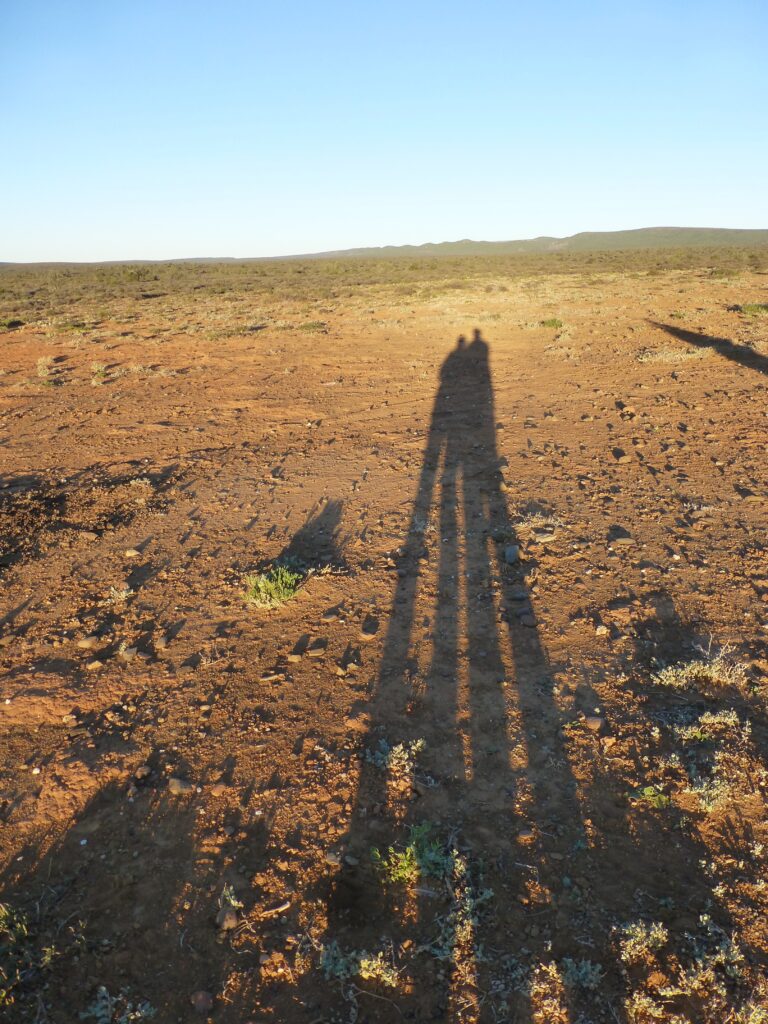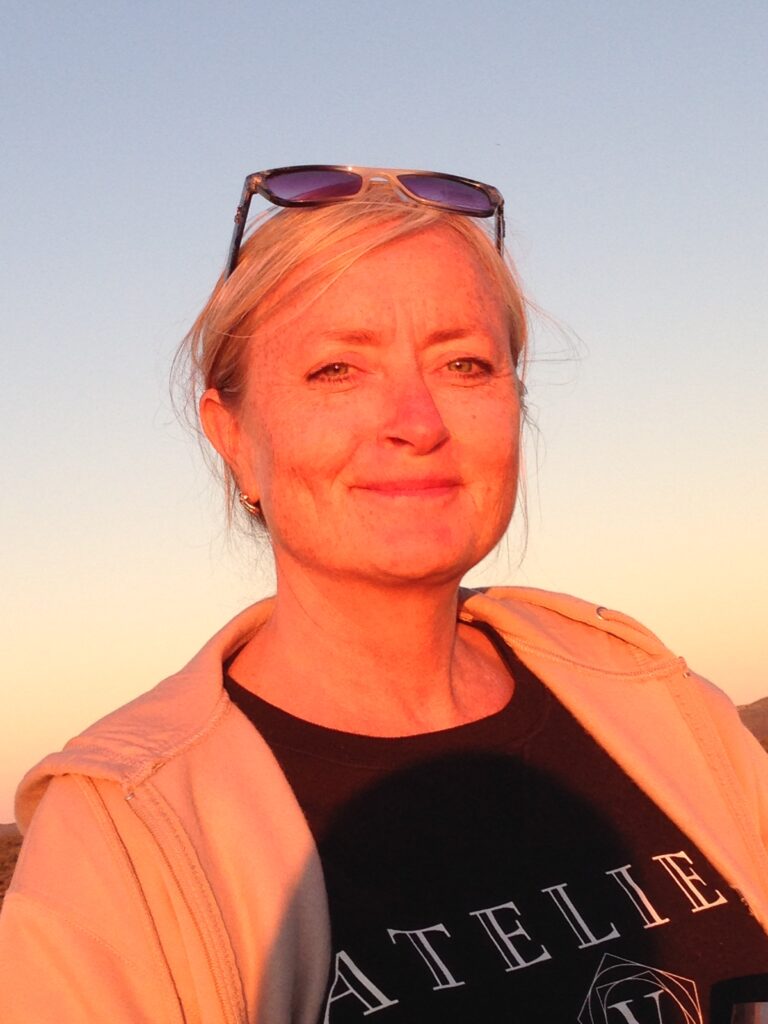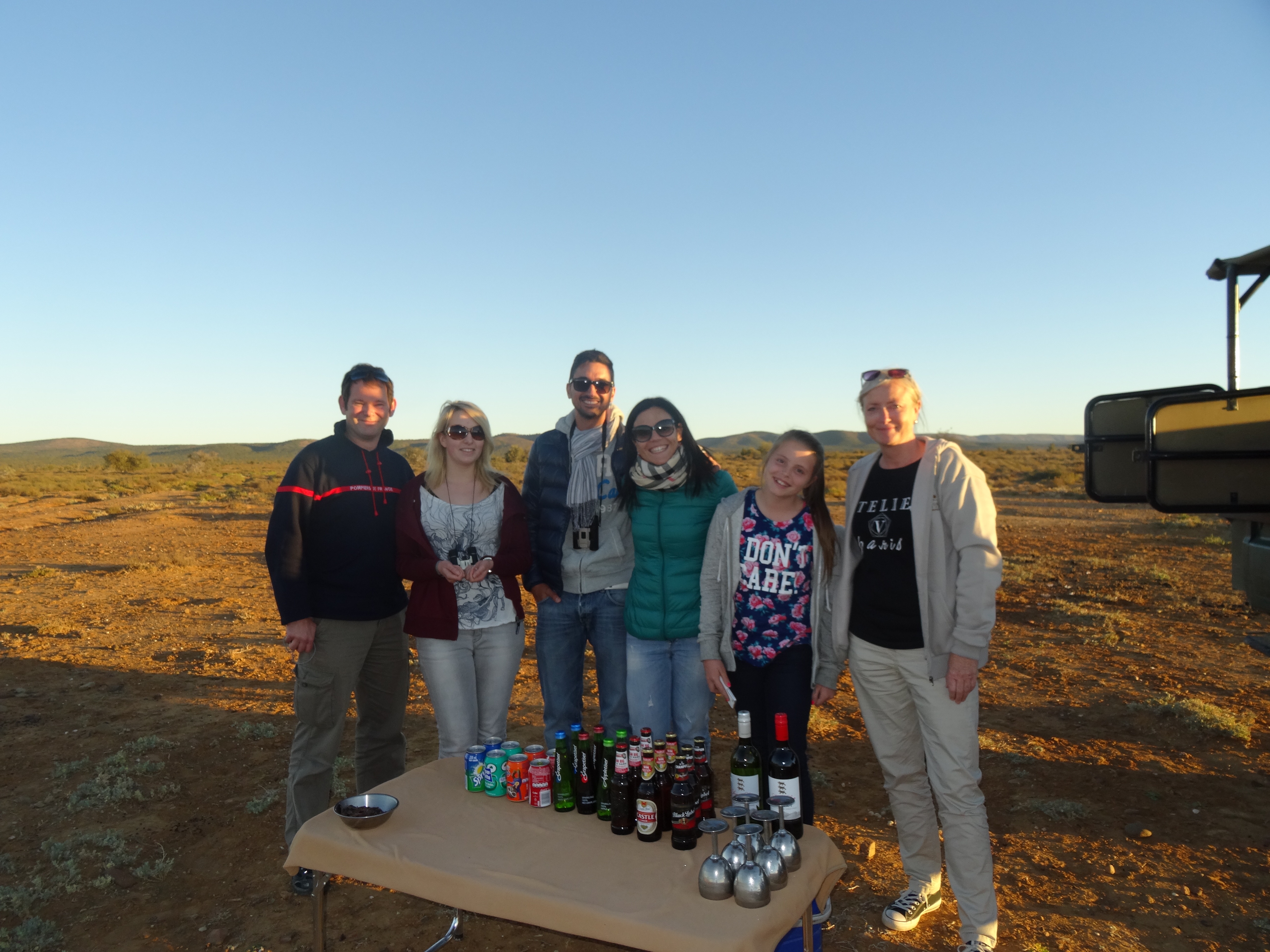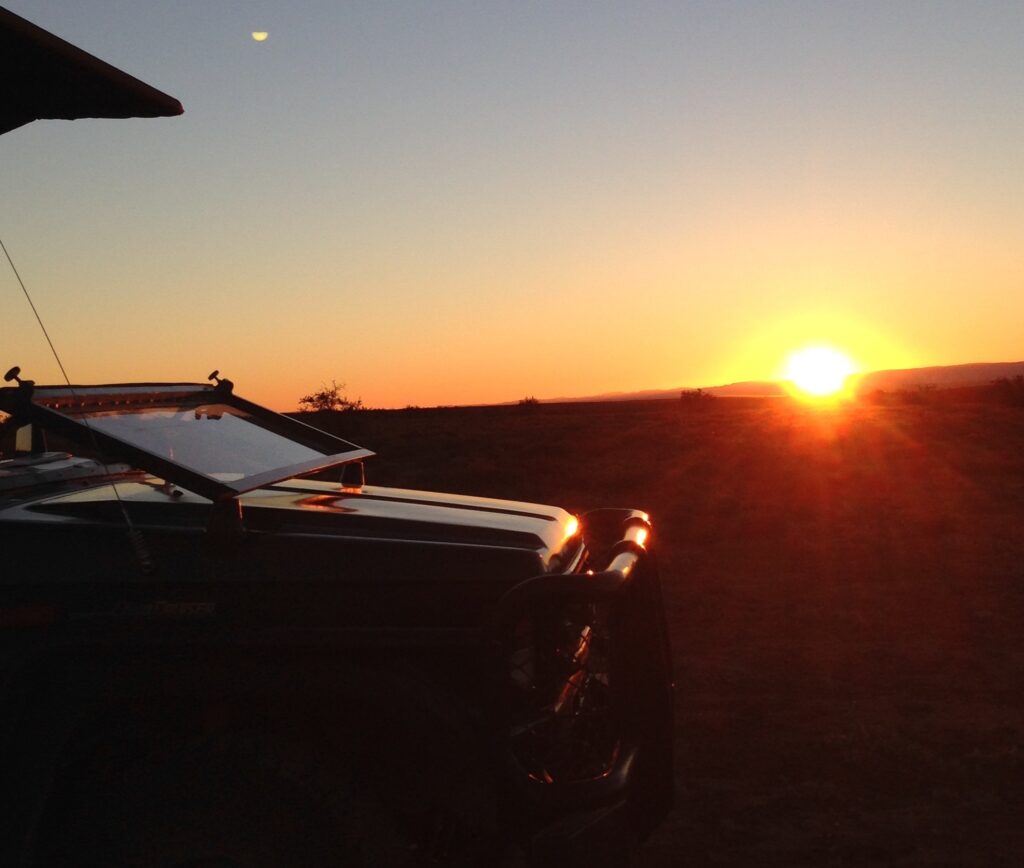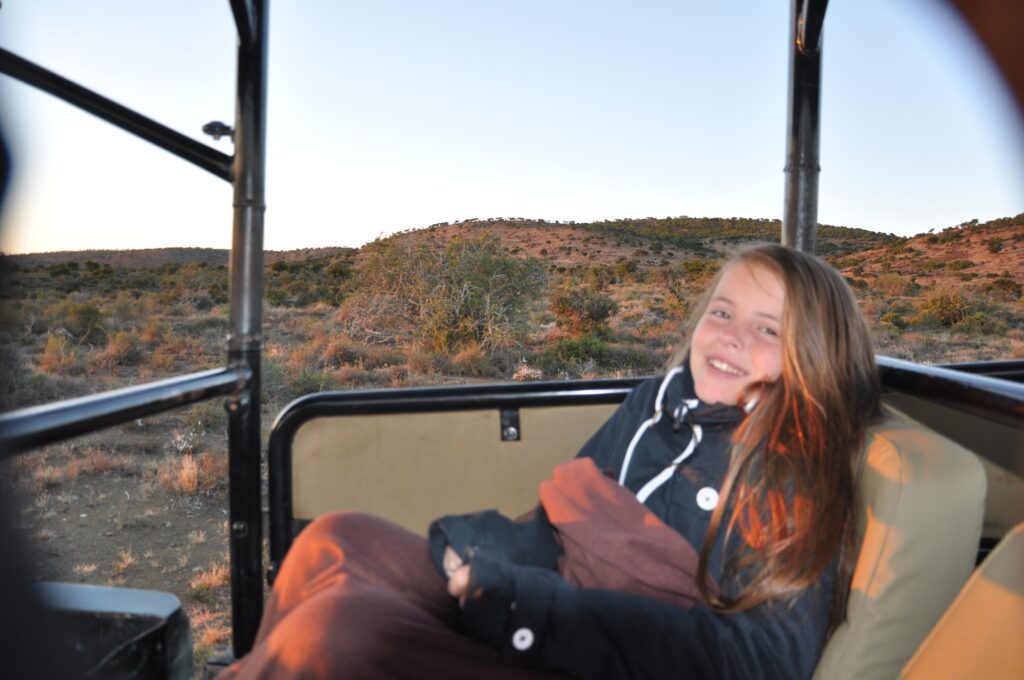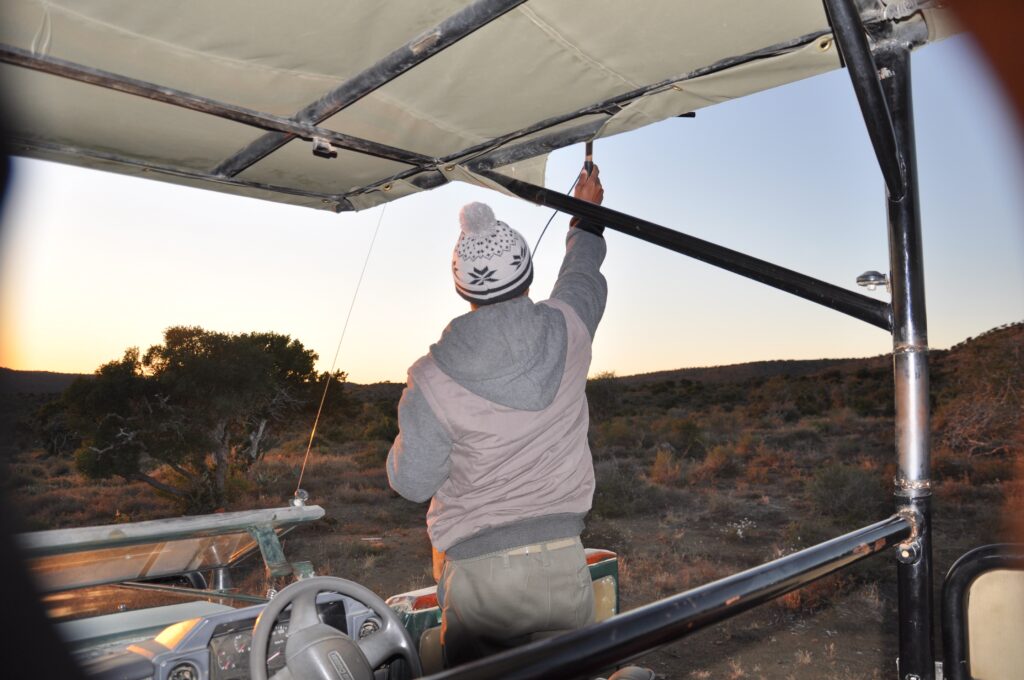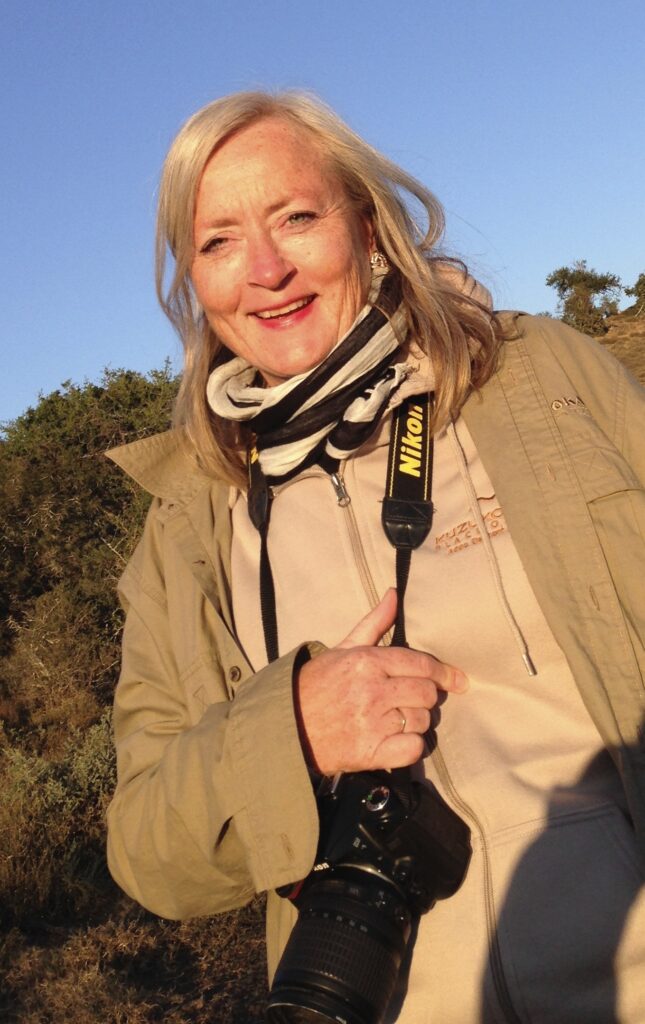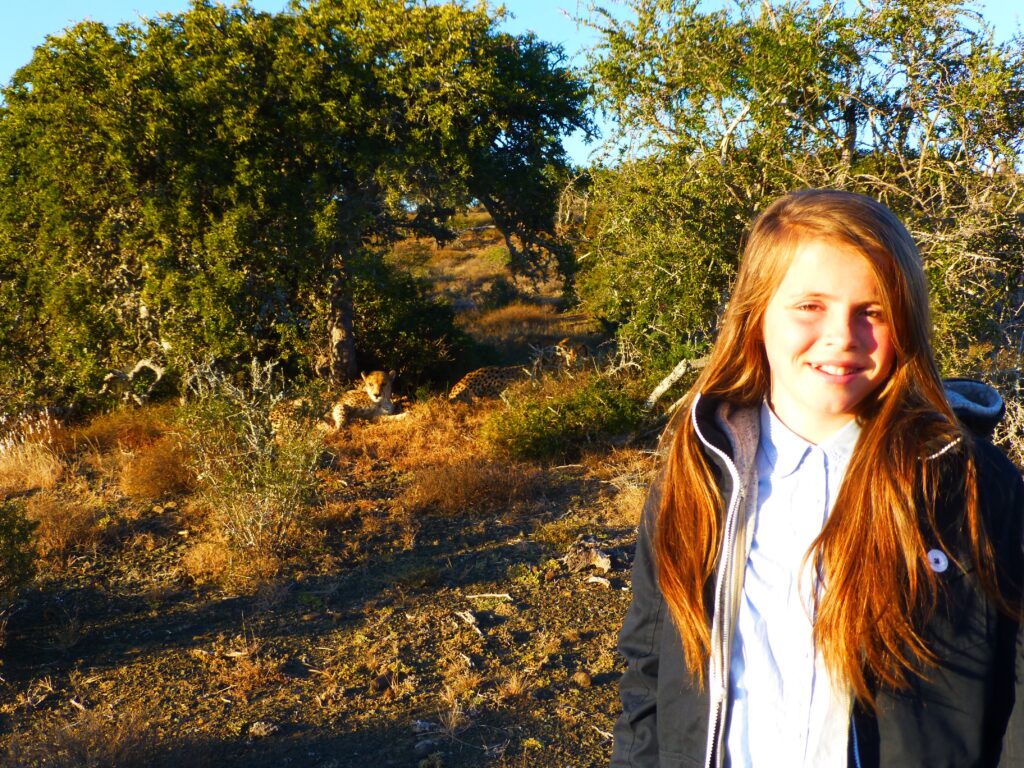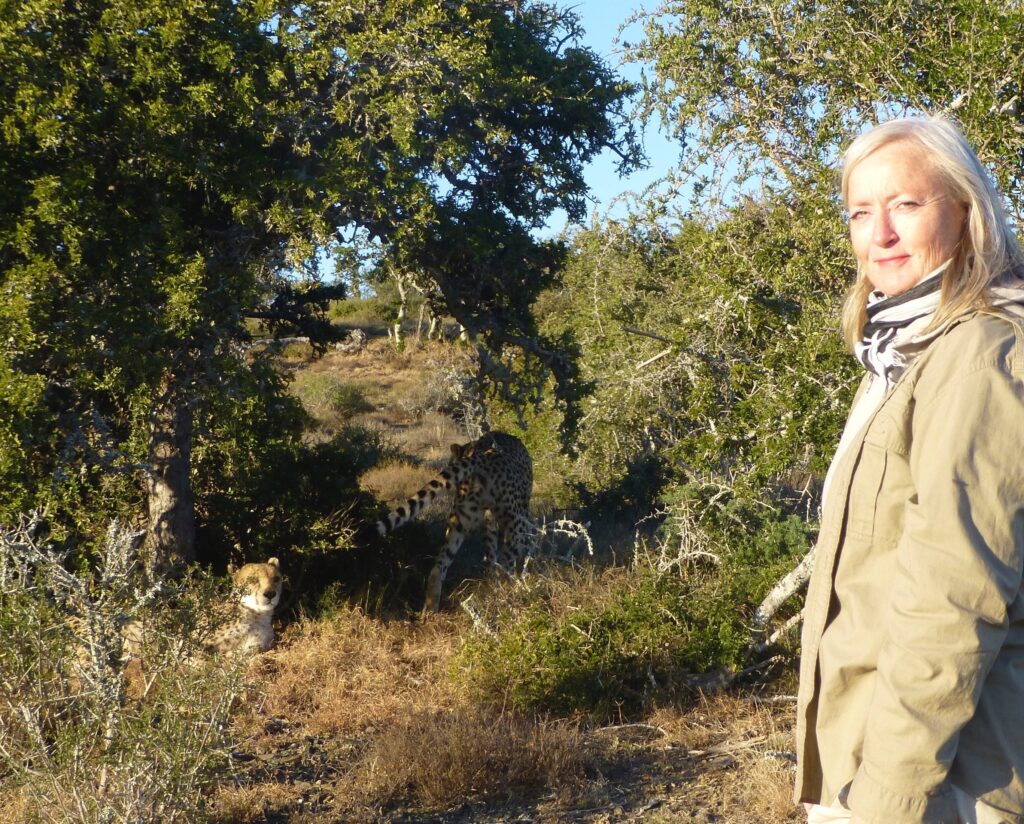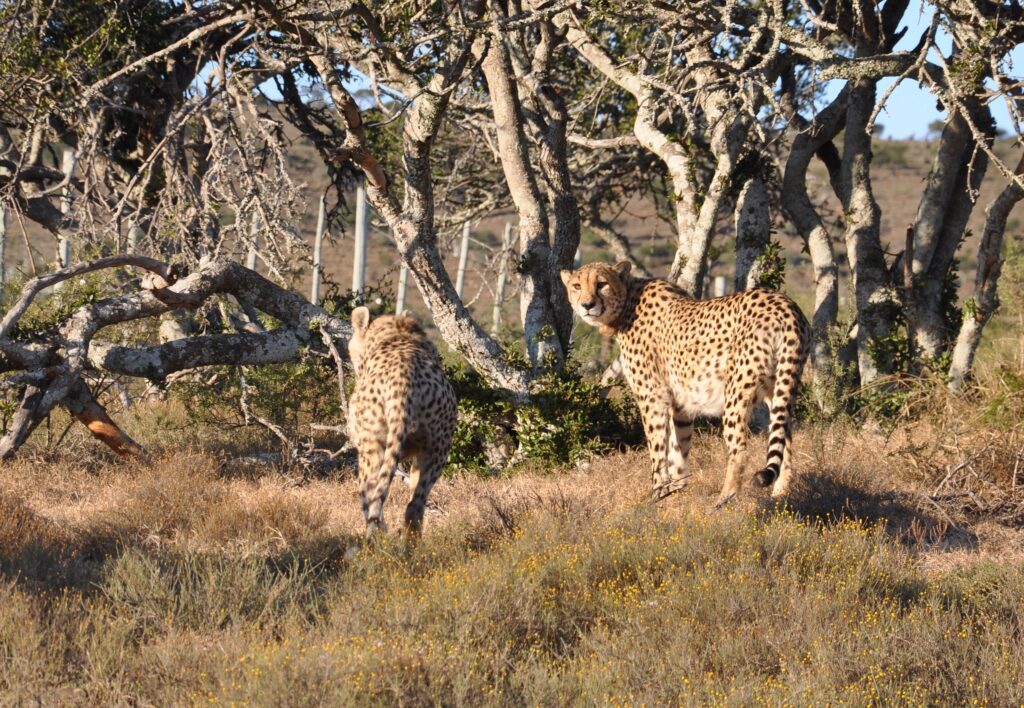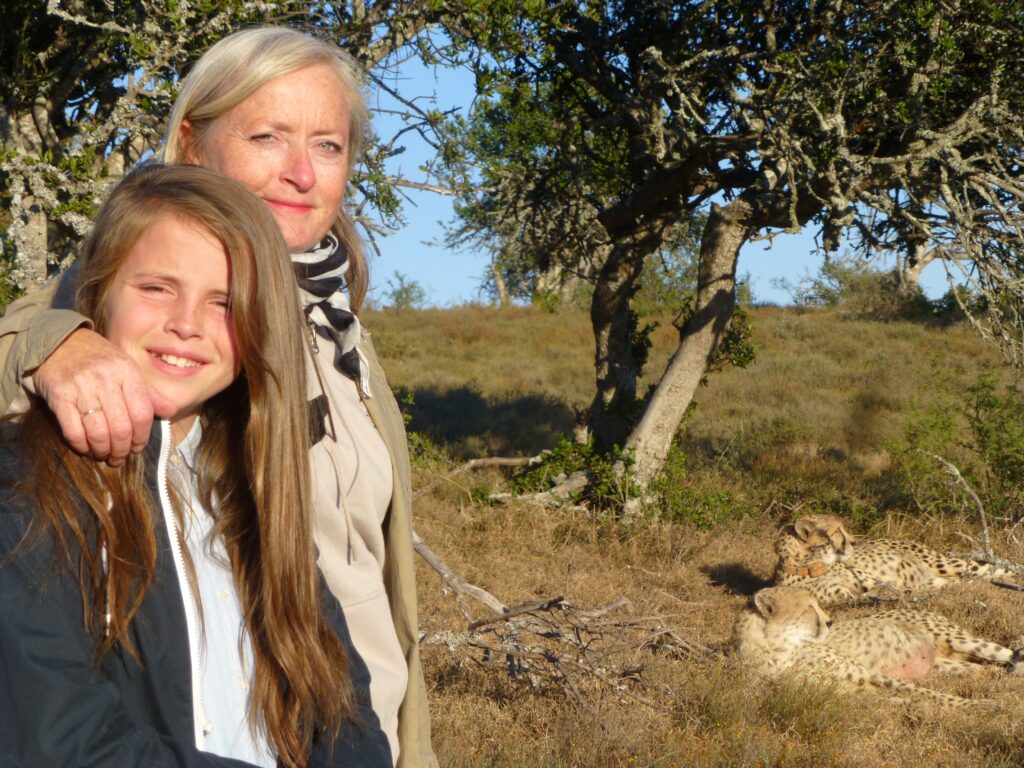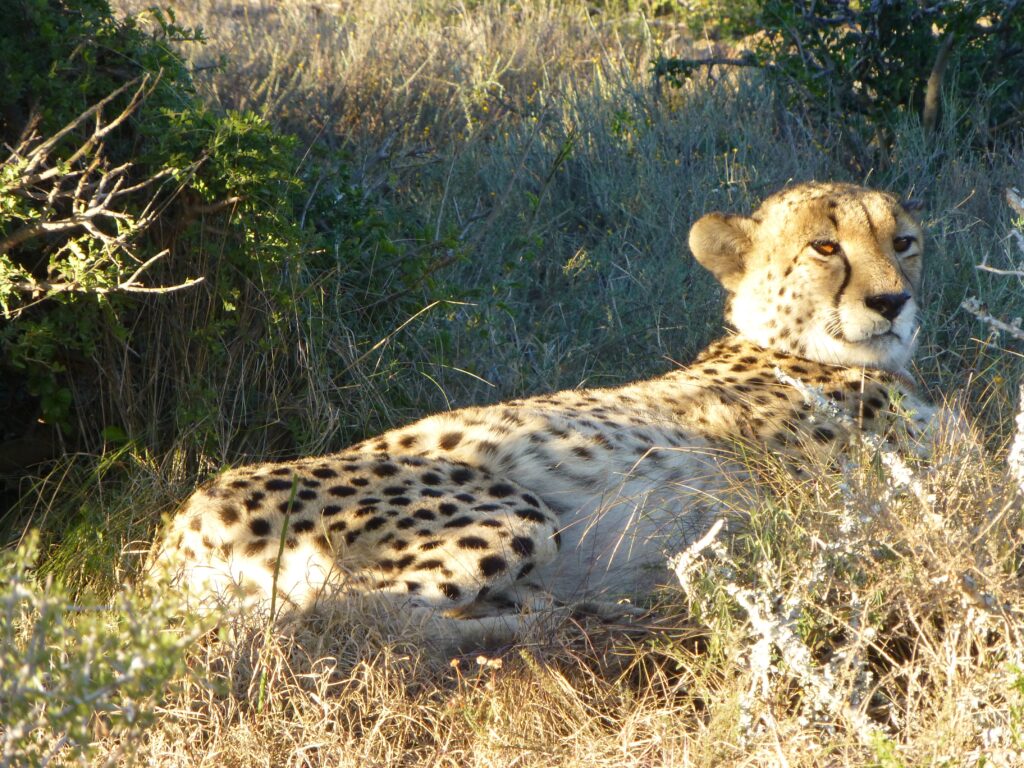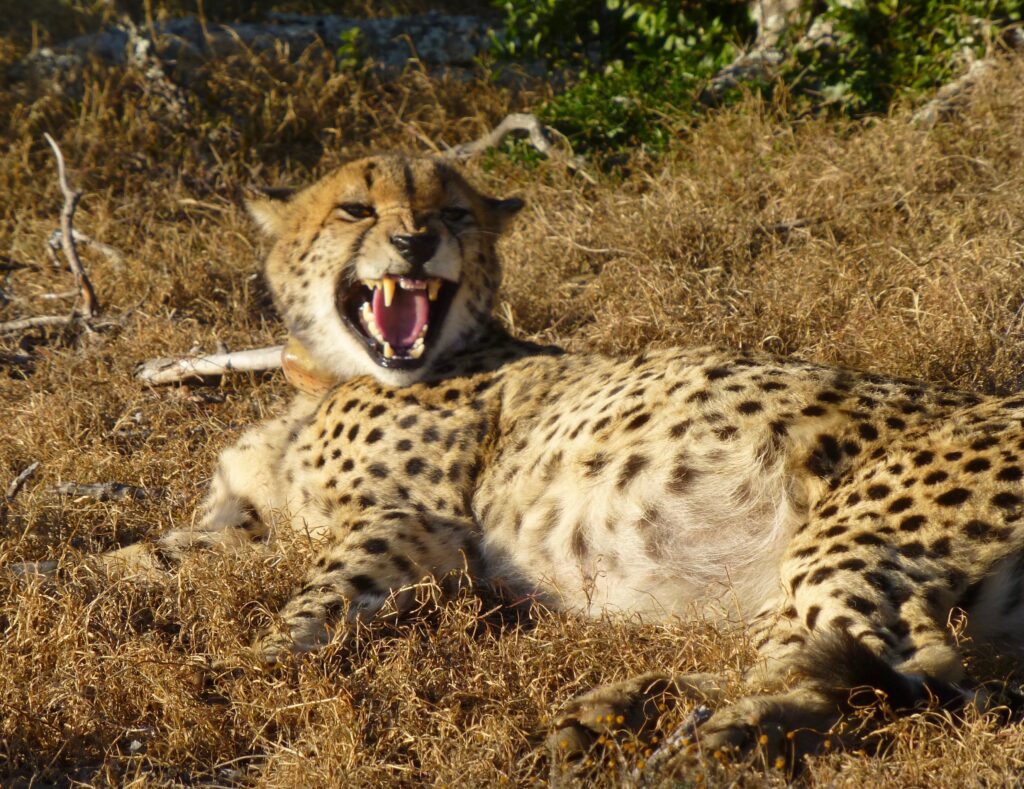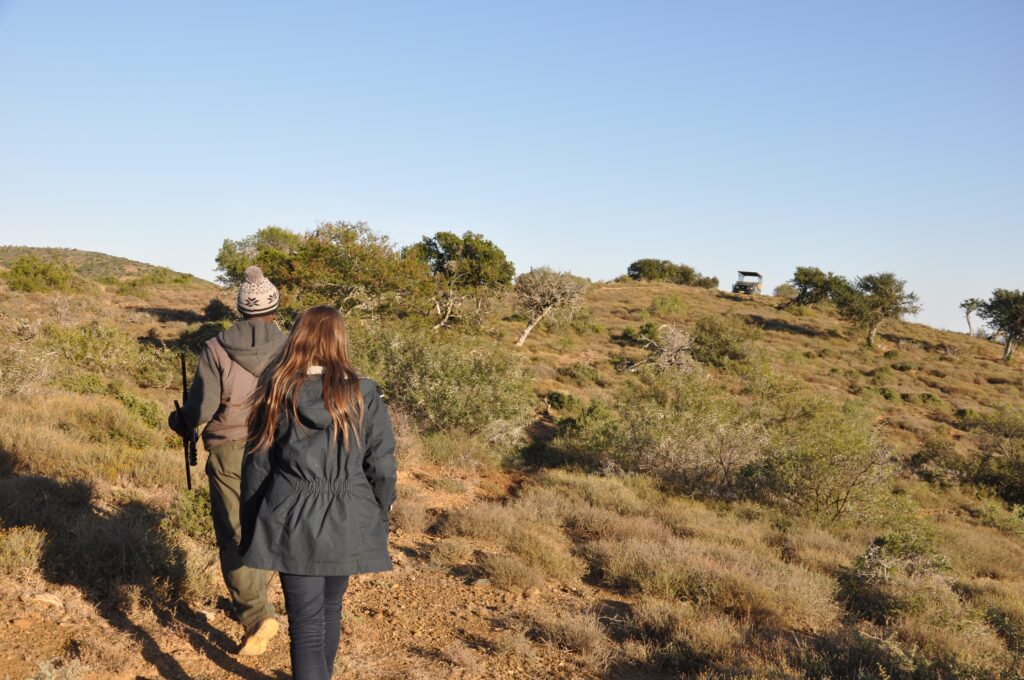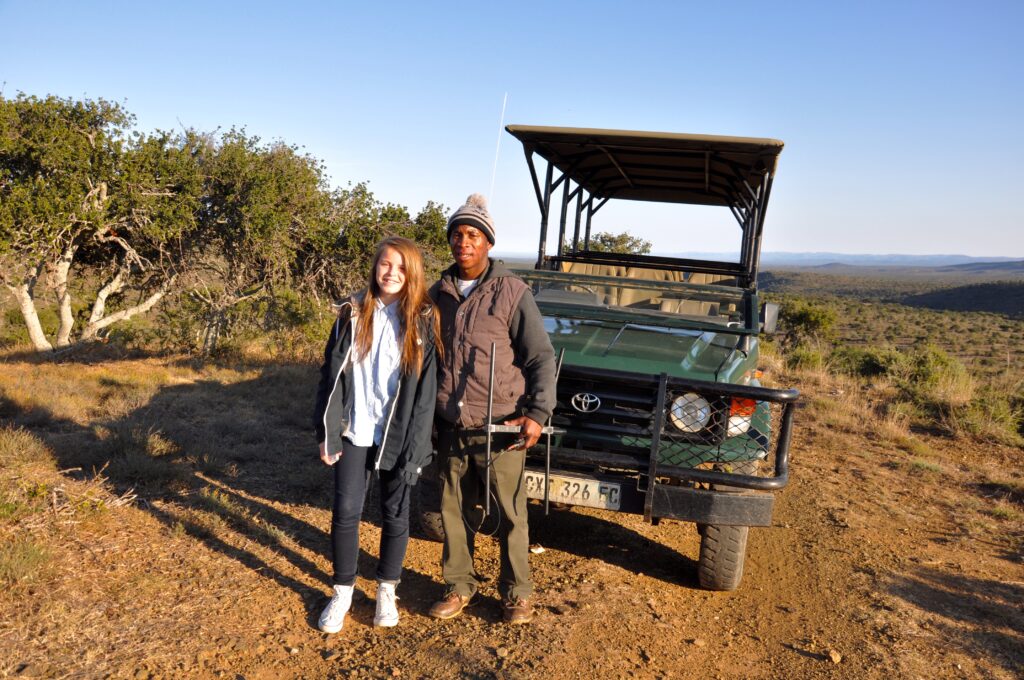Addo Elephant park has become the third biggest national park in South Africa. As the name implies – there are many elephants in this park – over 600! When Addo was proclaimed a national park in 1931, there were only 11 elephants.
A visit to Addo is a highlight of this part of the Eastern Cape, not only for seeing the elephants but for its wide variety of game viewing. It is home to all the Big Five – elephants, lions, leopards, rhinos and cape buffaloes, and you can also see zebras, giraffes, jackals, spotted hyenas and a variety of antelope species. Addo also hosts an incredible variety of birdlife with more than 400 species of birds.
Since 1931, Addo Elephant National Park has expanded significantly. It is now split into several separate areas, including the main inland wildlife area and two coastal conservation areas located just north of Sundays River. The park’s size means that it incorporates a wide range of different habitats, from arid mountains to sand dunes and coastal forest
The park is therefore also one of few which boasts the ‘Big Seven’, which include white sharks and southern right whale of its coastal sections.
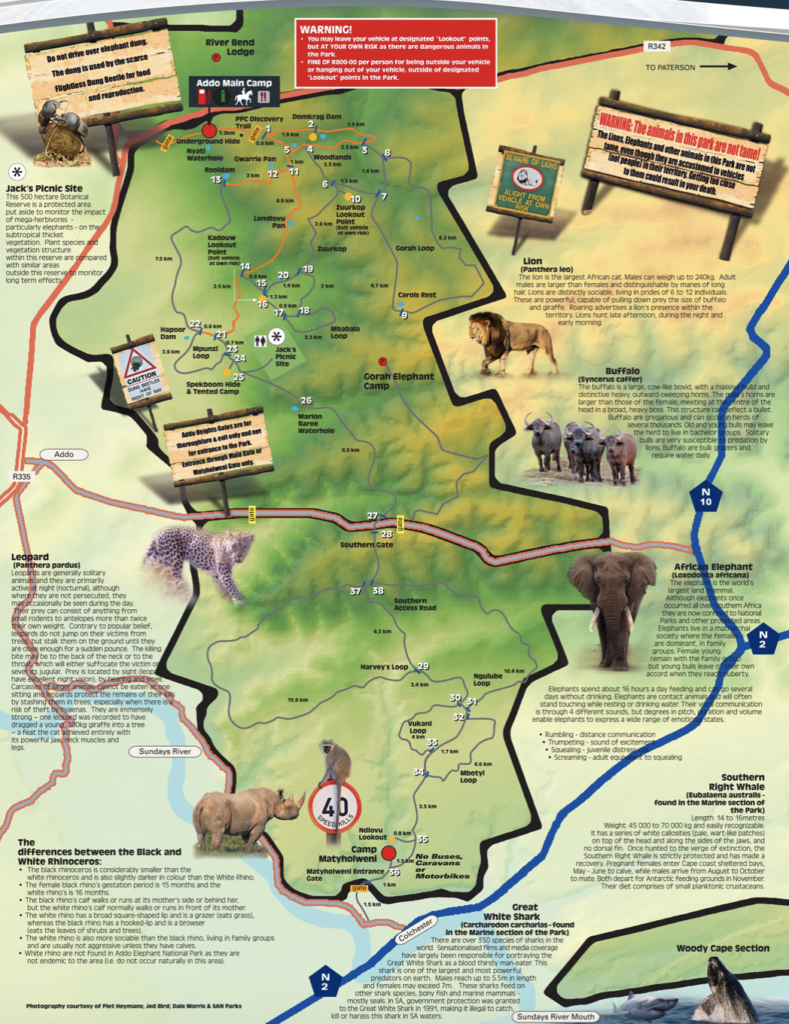
Like in the Kruger National Park, self drive safari has become a a great option in Addo. Guided safari tour is also popular and you can book tours both from the camps or at tourist offices and hotels around the park.
We have visited this park three times, in 2008 – 2010 and 2014. We have had self drive safari every time – always with great experiences !
The roads are good and it is easy to navigate. There are a number of lookout spots, particularly near the watering holes of the animals.
We have mostly visited the north part which is the main section with the main camp and different routes and loops.
The south section, southeast of Addo village, is called the Colchester section. We travelled through this section in 2008, when staying in Colchester. We only passed through the south section to reach the main section further north. But in 2010 they introduced more wildlife into the south ( Colchester) section.
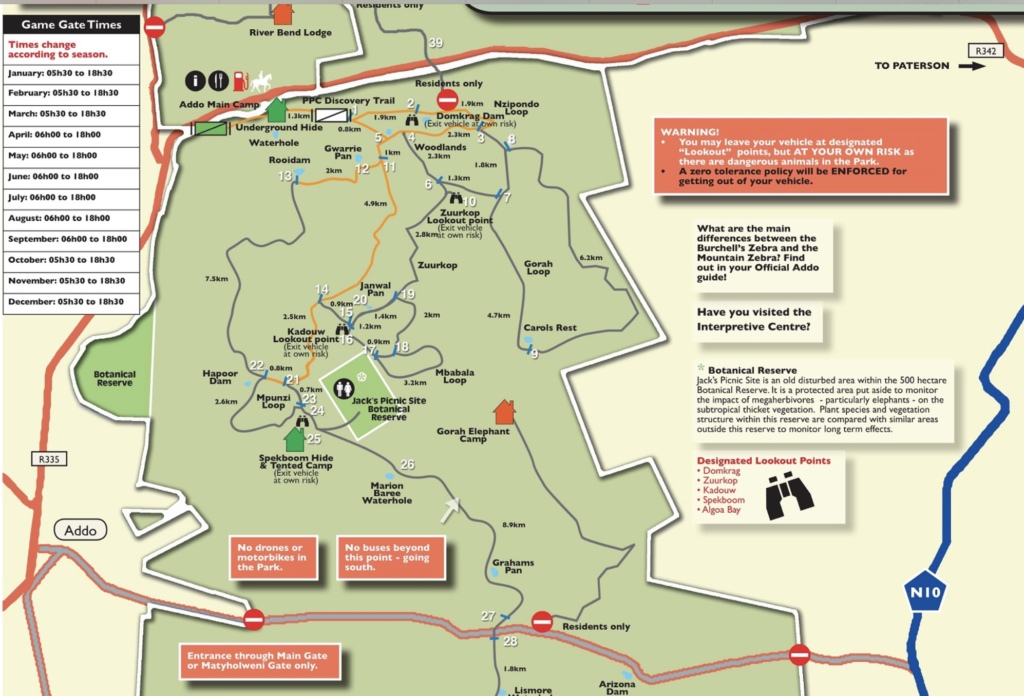
We usually start at the main gate in the north and where the main camp is located.
Kudus and a lazy buffalo at a dam near the entrance. This was in the middle of a warm day in Januar 2010.
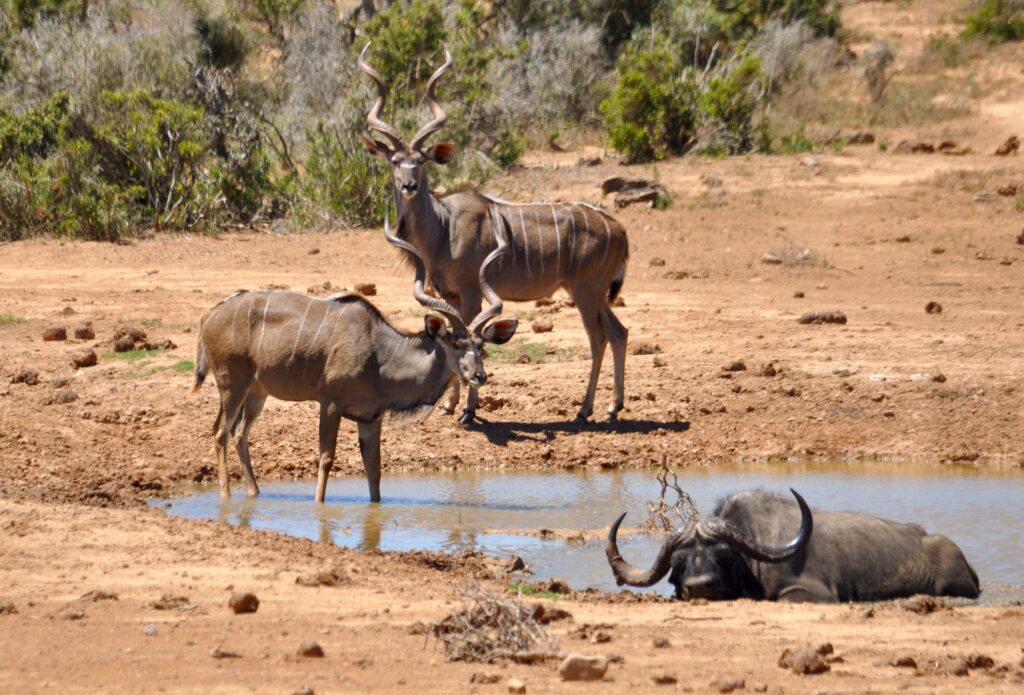
Then around the first loop – warthogs! Some lazy ones, some more active and some with babies:
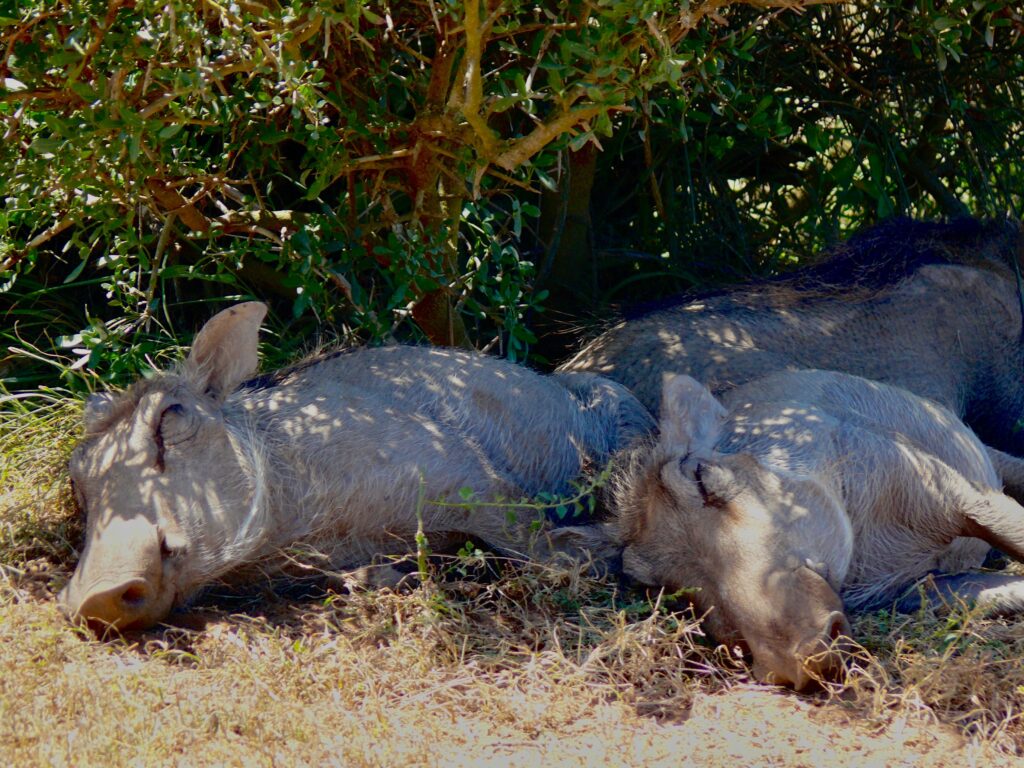
Siesta! 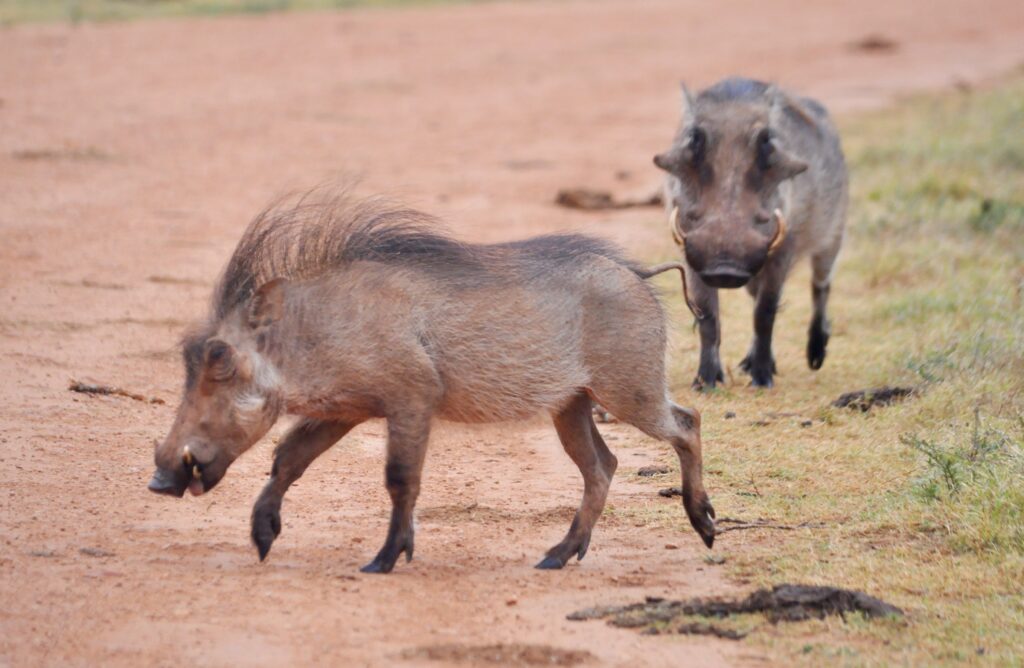
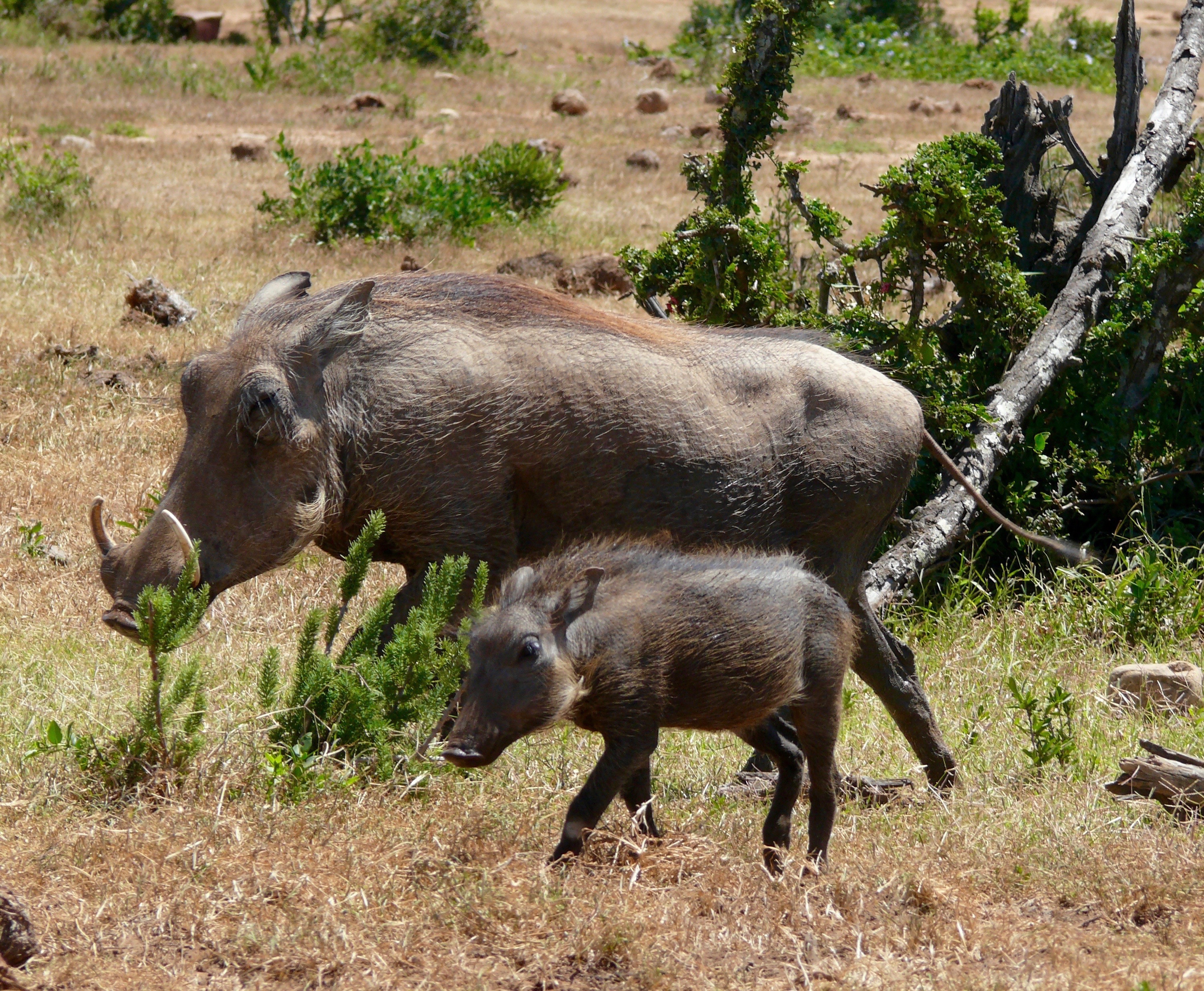
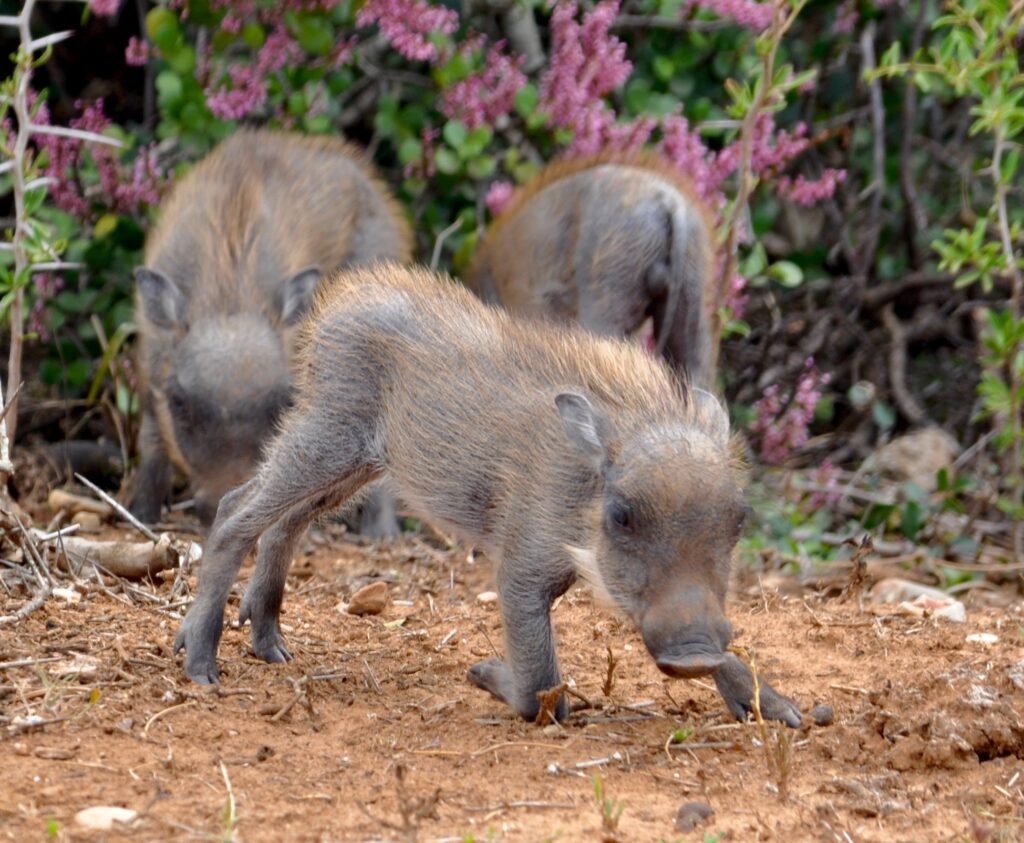
Cute warthog babies 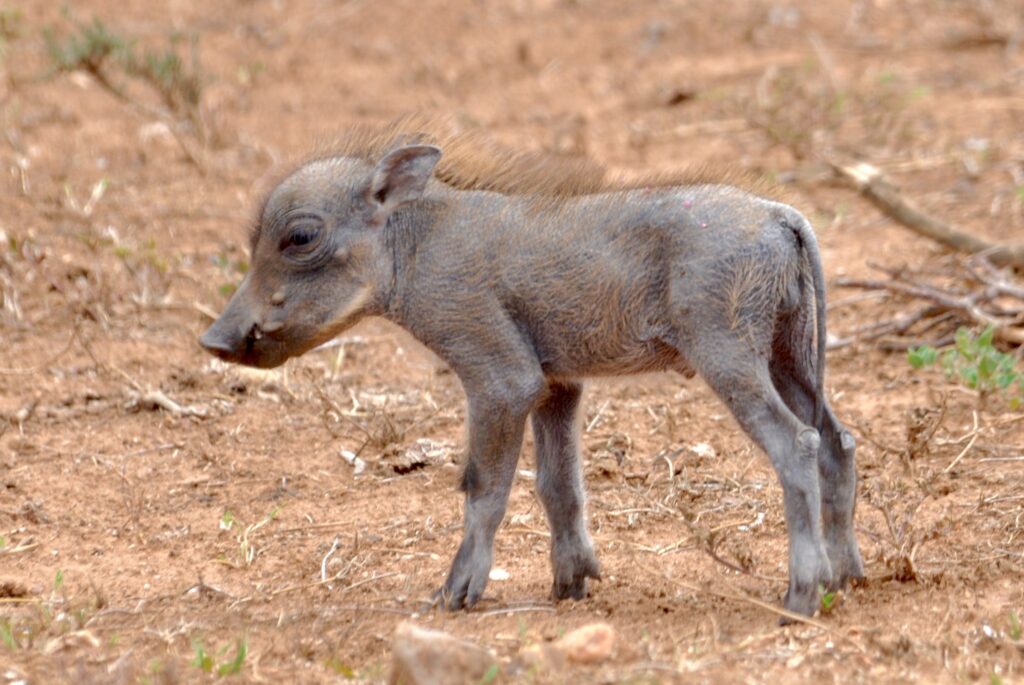
Ostriches – they are funny to watch !
Along the Golath loop, we have spotted several different animals, Jackals, Tsessebes, Ostriches and Elephants..
A couple of Black-backed Jackals came out from some thorn bushes.
The black-backed jackal species – named for the dark, white-flecked ‘saddle’ on its back – is one of three species in Africa. They are omnivores; like to eat both meat and vegetation.
On our way to Carol Dam we also met some ostriches – one with babies. How cute aren’t those three small ones!
Red Hartebeest – is closely related to the tsessebe and the topi. It is the most colorful hartebeest, and has a longer face that other subspecies, with complex curving horns joined at the base.
A Elephant herd at the little Carol Dam at the top of a hill – driving the Golath loop. Fascinating when they all stand side by side drinking water!
Buffalo – one of the BIG5 – are also abundant in Addo.
A lonely male on the move. This is now afternoon and it has come out of the mud !
Along the road past Rooidam, towards the Hapoor Dam – we spotted some kudus. The kudu is the world’s third largest antelope species – and bulls are highly recognizable with those beautiful, long, spiral horns!
On hot days it is possible to see herds of elephants – numbering well over 100 individuals congregating at the waterholes to drink, play and bathe.
This was also what we experienced when stopping by Hapoor dam – this is from June 2014 –
Drinking time:
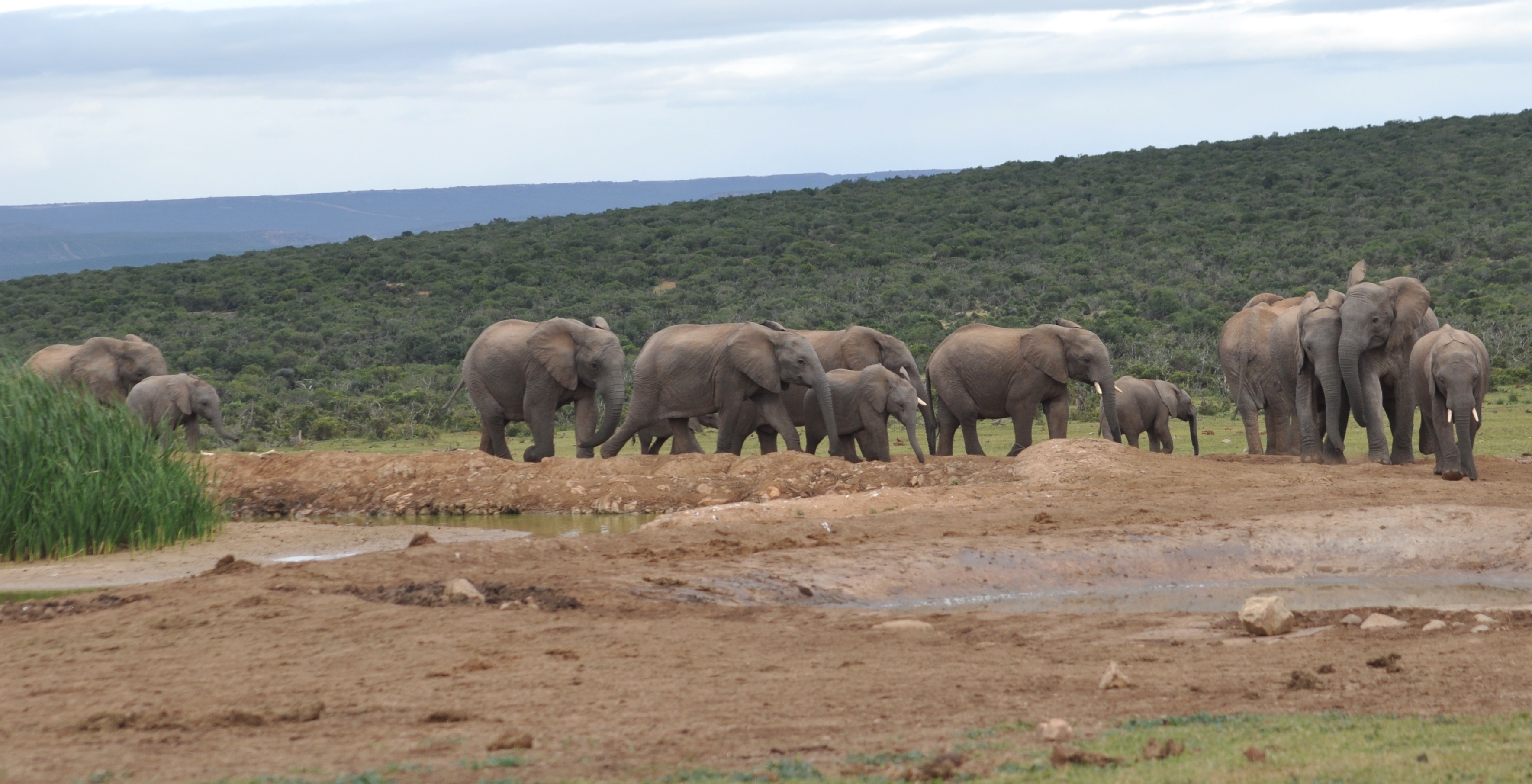
Soon by the waterhole.. 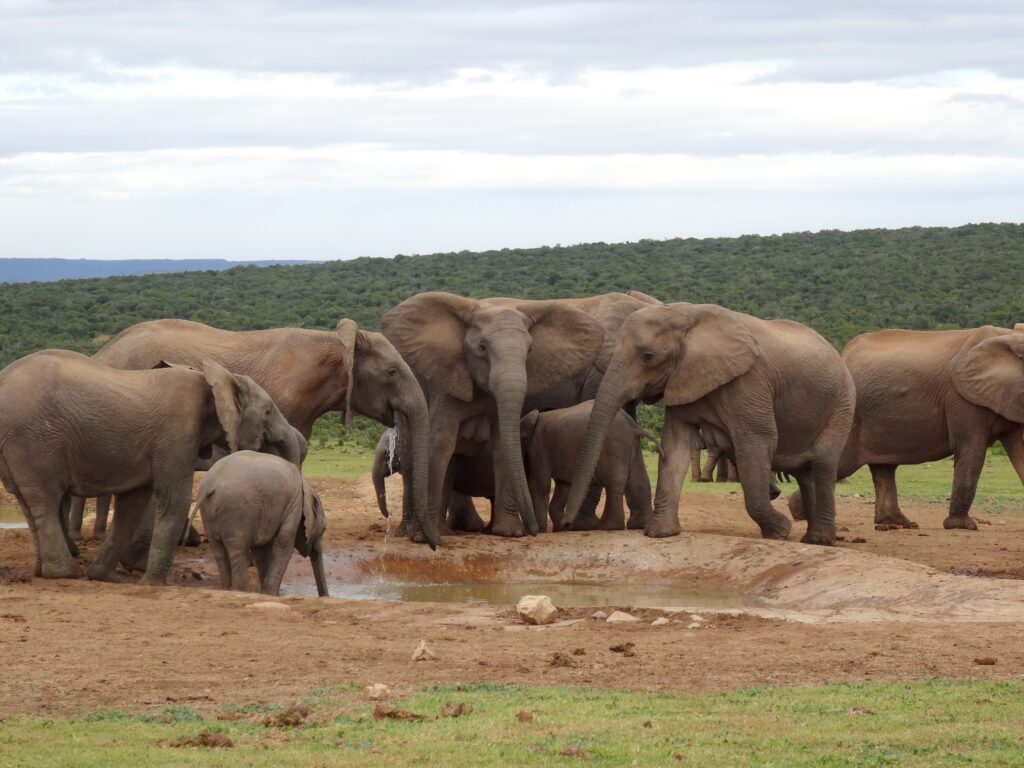
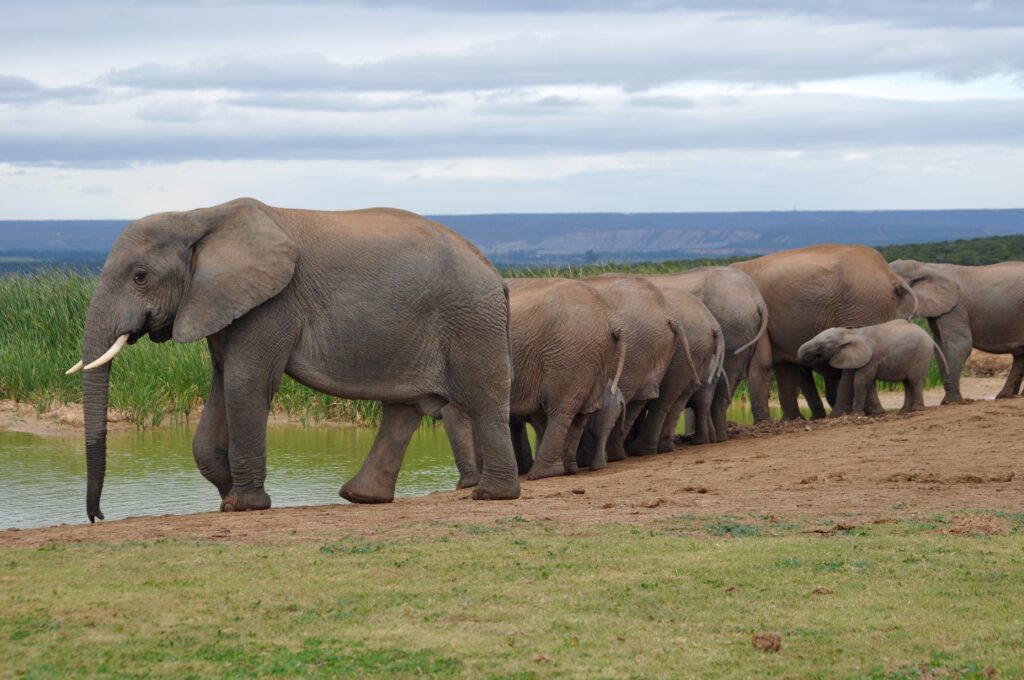
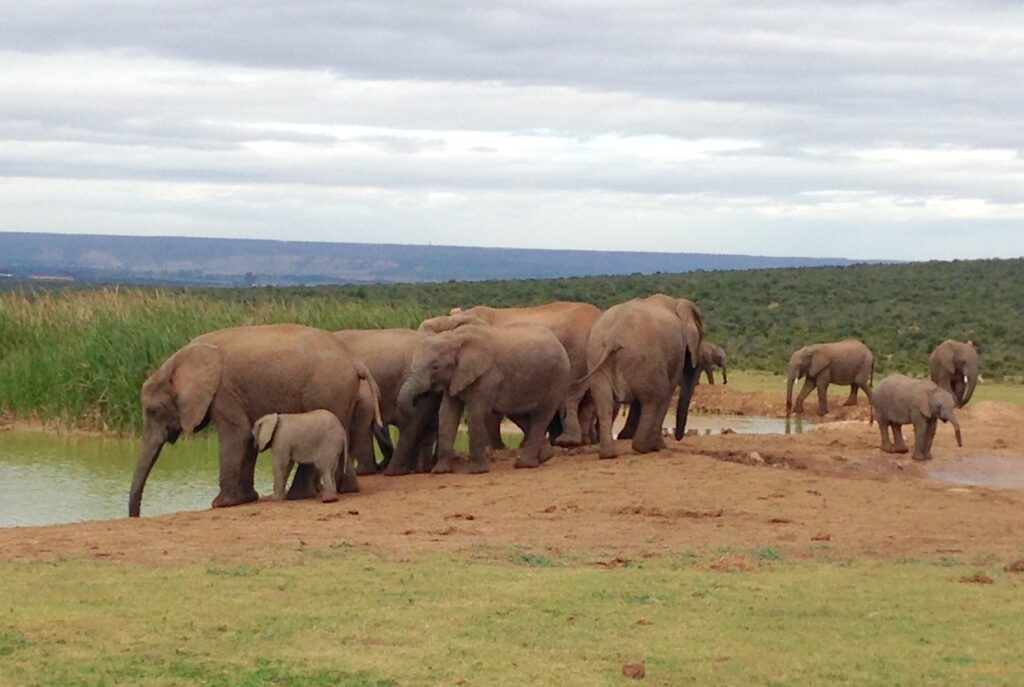
Bathing – they like to take a bath on warm days..
They also enjoy showering – spraying water all over themselves. Afterwards, they often spray their skin with a protective coating of dust.
Mother and child – we saw many calfs along with the herds – this also around the Hapoor Dam:
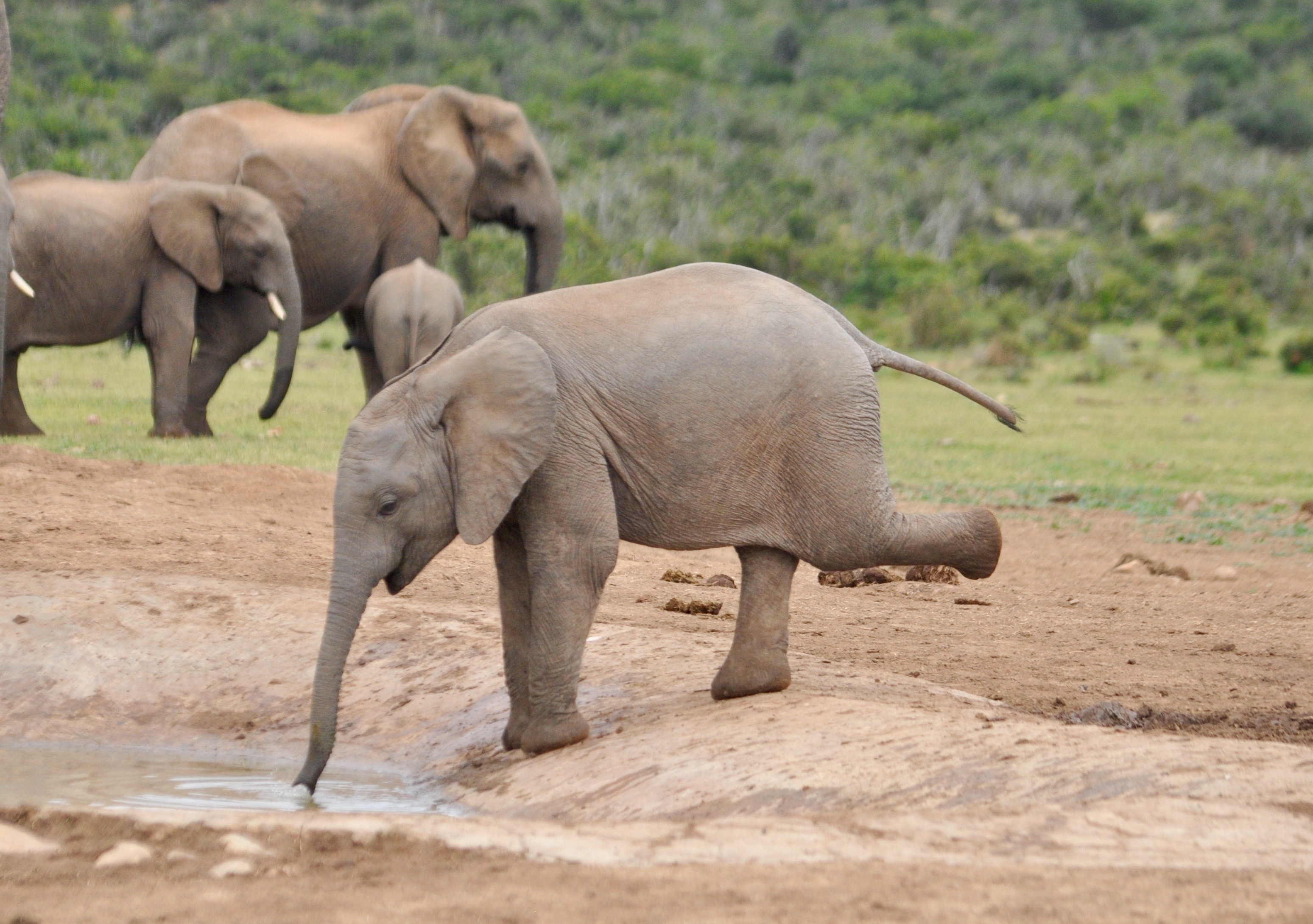
Small ones playing..
Also young males playing and battling:
Bigger males battle..:
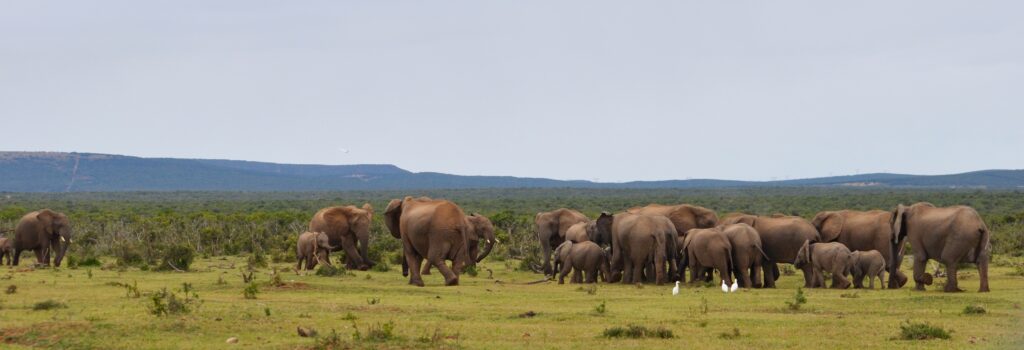
TORTOISES
I have never seen so many tortoises as in this park. In late afternoons you can see them moving slowly out in to the roads. From small to big ones like this.
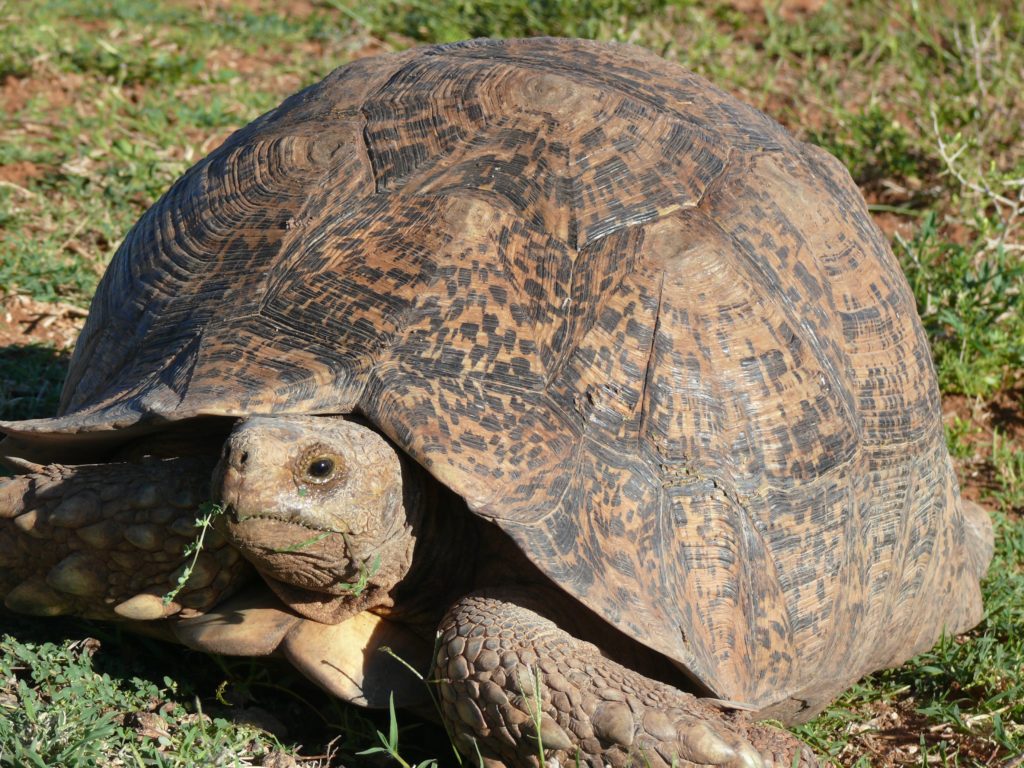
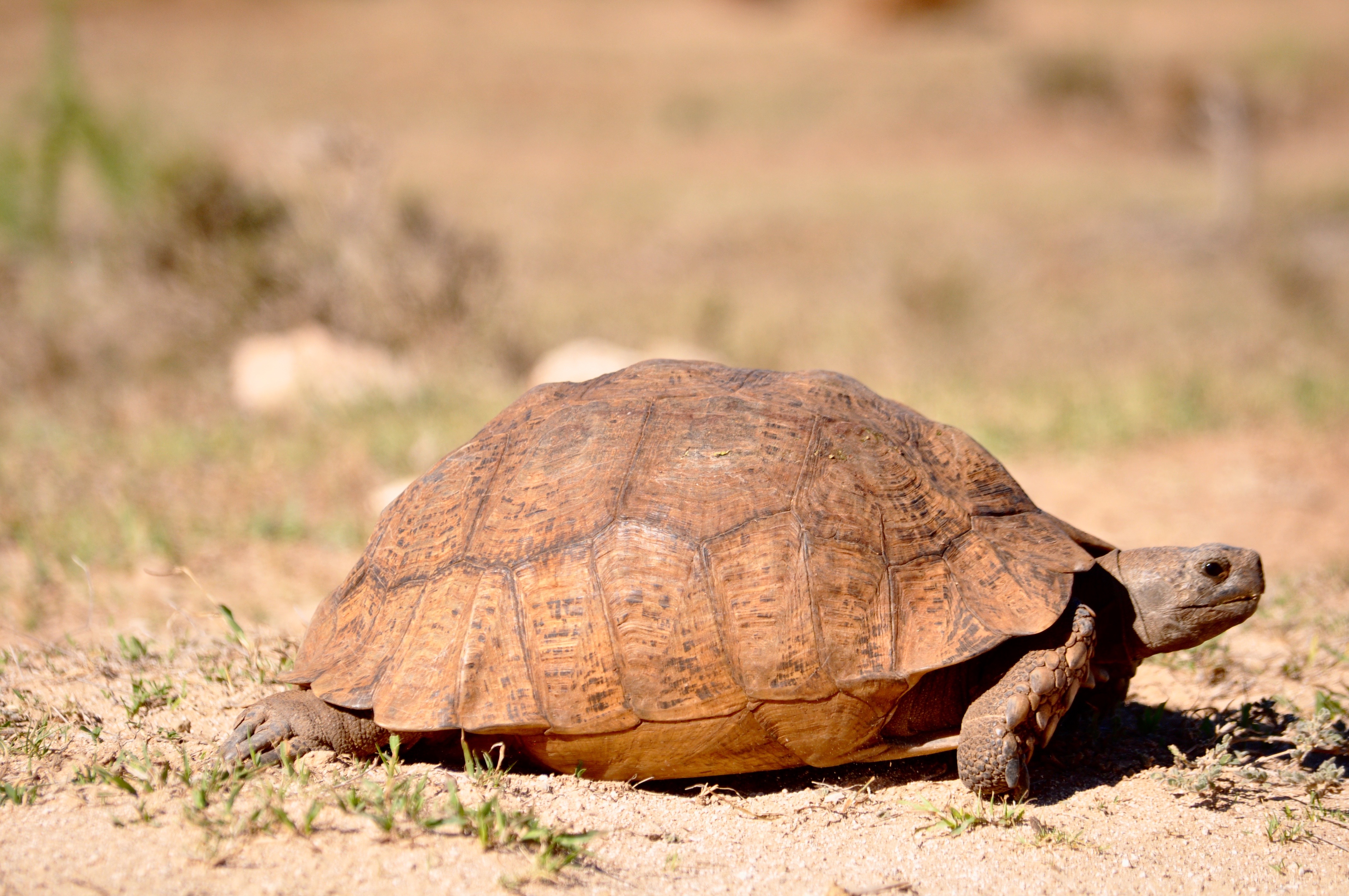
Leopard Tortoise with lighter shell 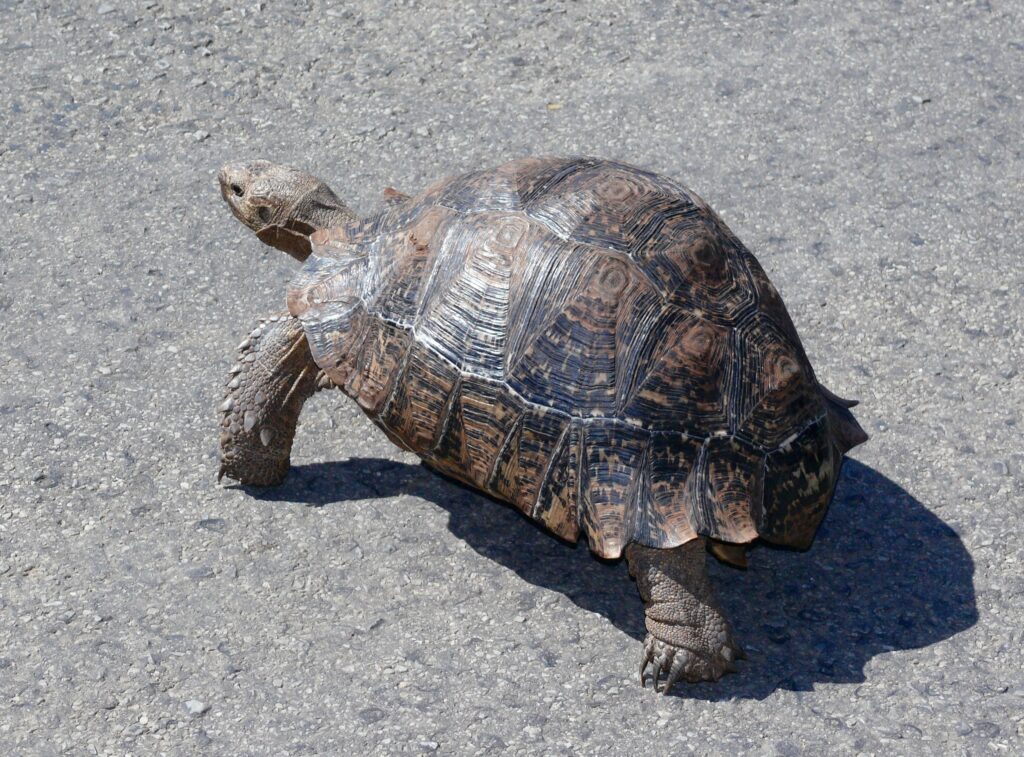
..and a smaller Leopard tortoise 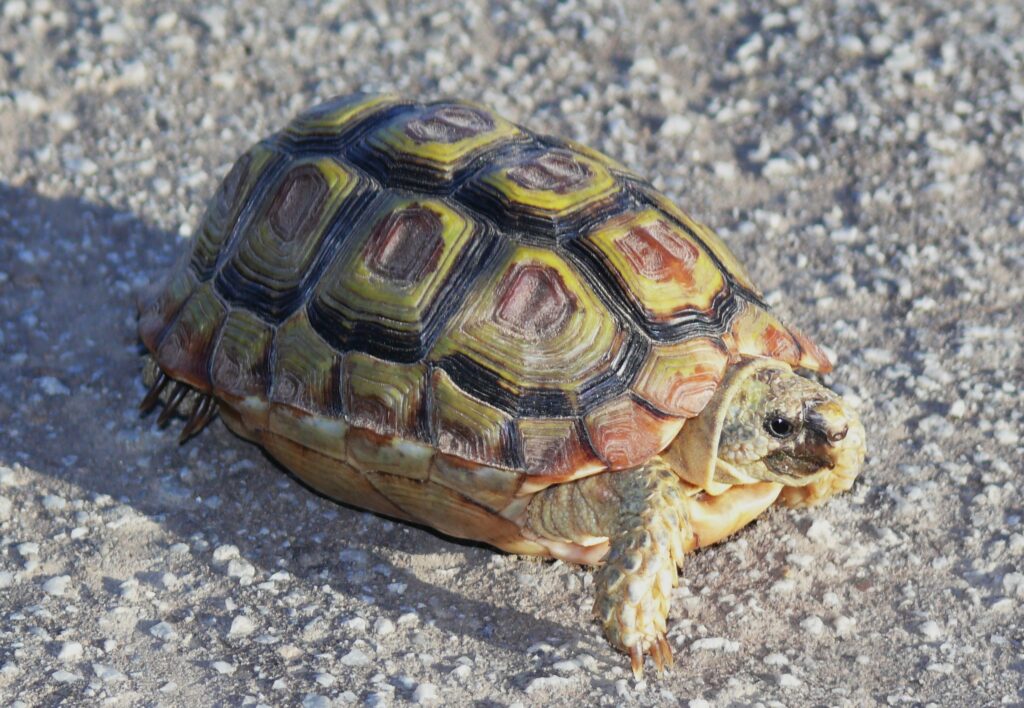
Parrot-beaked tortoise , also known as common. pad loper, is a small tortoise species.
In 2014 we drove a couple of loops (routes) in the south section- which was opened for more animals in 2010. Just before moving over to the south section we saw this elephant cadaver and some black-jacket Jackals around..
Another lonely male buffalo :
Beautiful zebras:
Of the BIG5 we have mostly seen Elephants and Buffalos. Rhinos are rarely seen. During the three times we have visited the park, we have never seen rhino in Addo. Lions once , but never leopard.
It does not matter if you do not spot any cat animal, there are a lot of other interesting animals and birds. And do you want to see elephants in action – this is the place to be! I have never seen so many Elephants than in this park – around the Hapoor dam especially.
I hope to go back to Addo soon!
Accommodation
The two first times we stayed in lodges outside the park. Whether you want to stay at lodges, Bed & breakfasts, guesthouses or self service units – there are many different accommodation options in the Addo area and in the south – Colchester area.
The last time – in June 2014 – we stayed within the Addo National Park, in a cottage in the Main Camp. Very nice place to stay, and there is a very good restaurant on site as well.
There are also other camps within the park. You can get more info about the park and book accommodation at – www.sanparks.org . This website has info about all national parks in South Africa.
GREATER ADDO
After the stay at the main camp we also stayed at a lodge in the greater Addo Area. We stayed two nights at the Kuzuko Lodge – north of the Addo National Park. The 40 km before reaching the lodge – you have to drive on a gravel road. But putting that aside, after leaving our vehicle on a little parking lot and taken to the lodge by a 4×4 – we were impressed of the beautiful lodge, the lovely surroundings and the warm welcome!
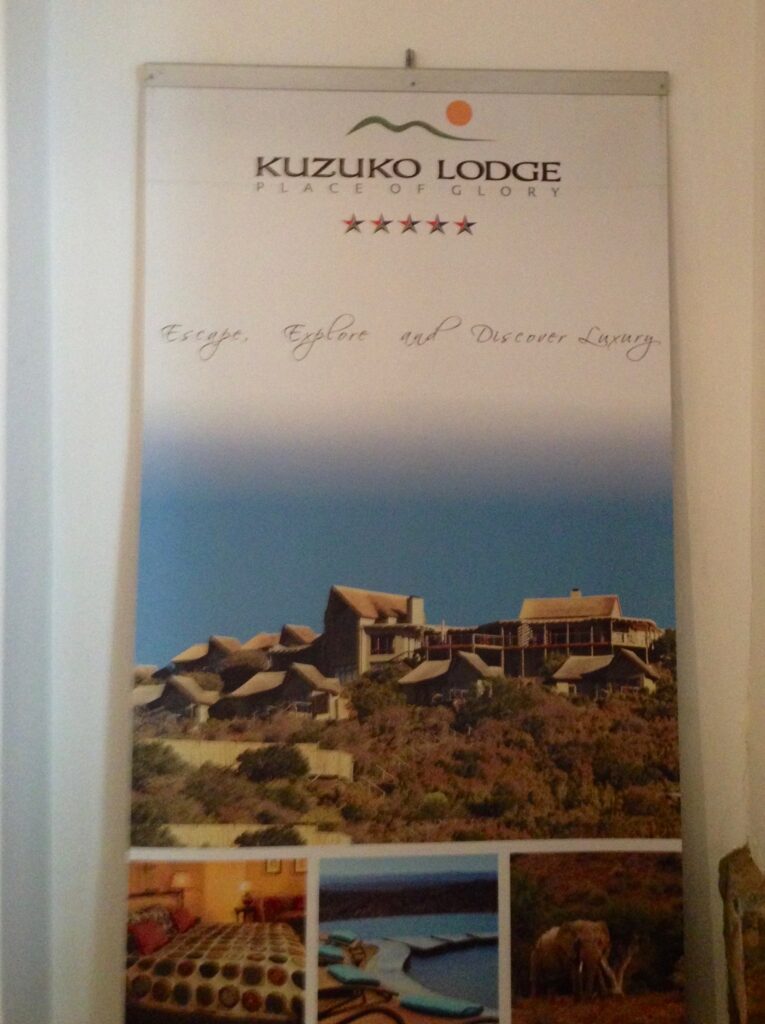
Kuzuko Lodge –
a 5* lodge situated in the greater Addo area. It is situated on a top of a hill – overlooking the Kaboega plains and Winterberg Mountains. There are twenty-four chalets which offer great views of the private reserve.
Our chalet was spacious and beautifully decorated. I also loved the the private balcony overlooking the valley – stunning views !
We came too late for the evening safari – but had safari early next morning.
Beautiful sunset – and a delicious and tasty dinner dinner in the evening.
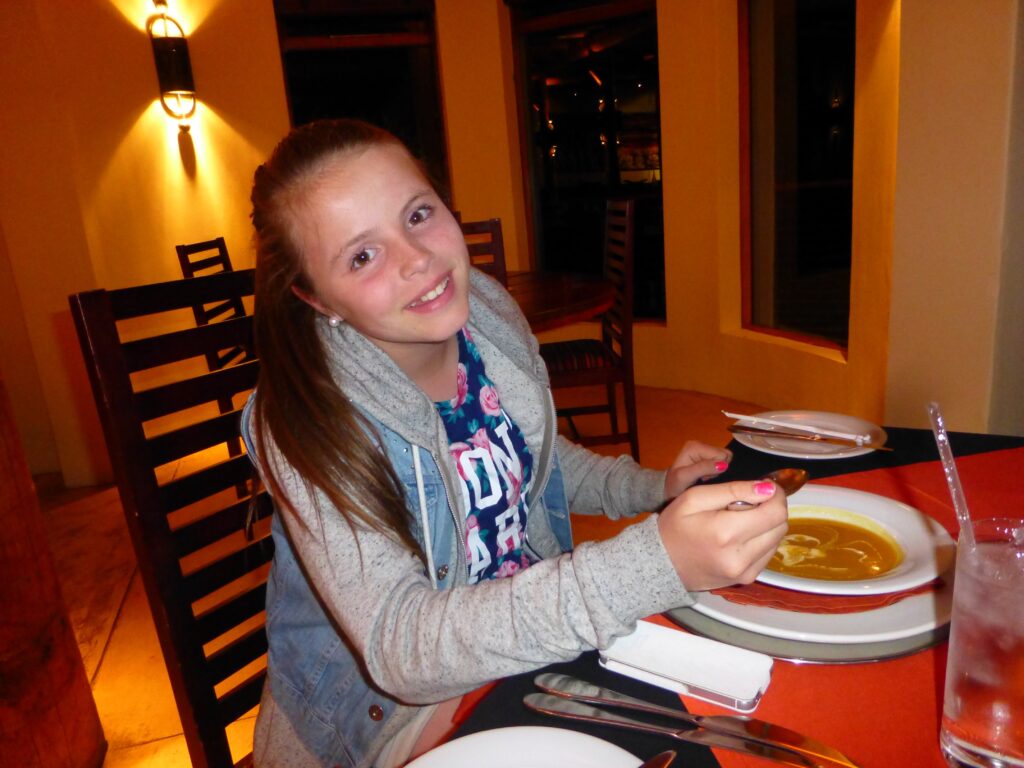
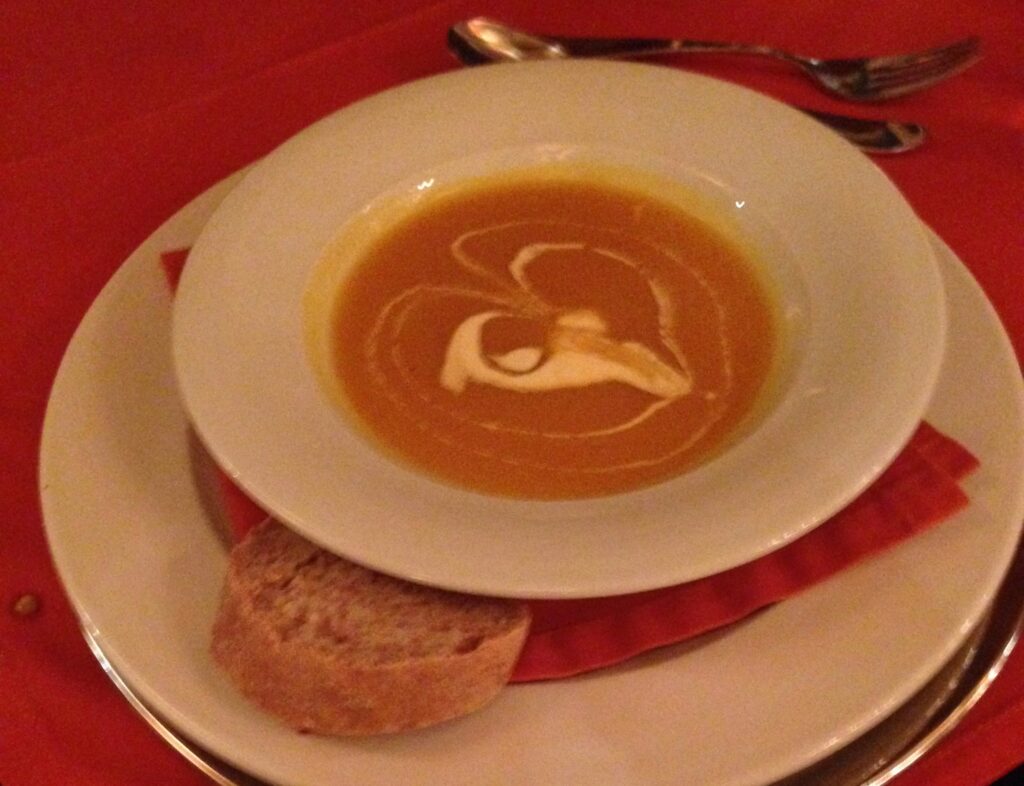
Butternut soup 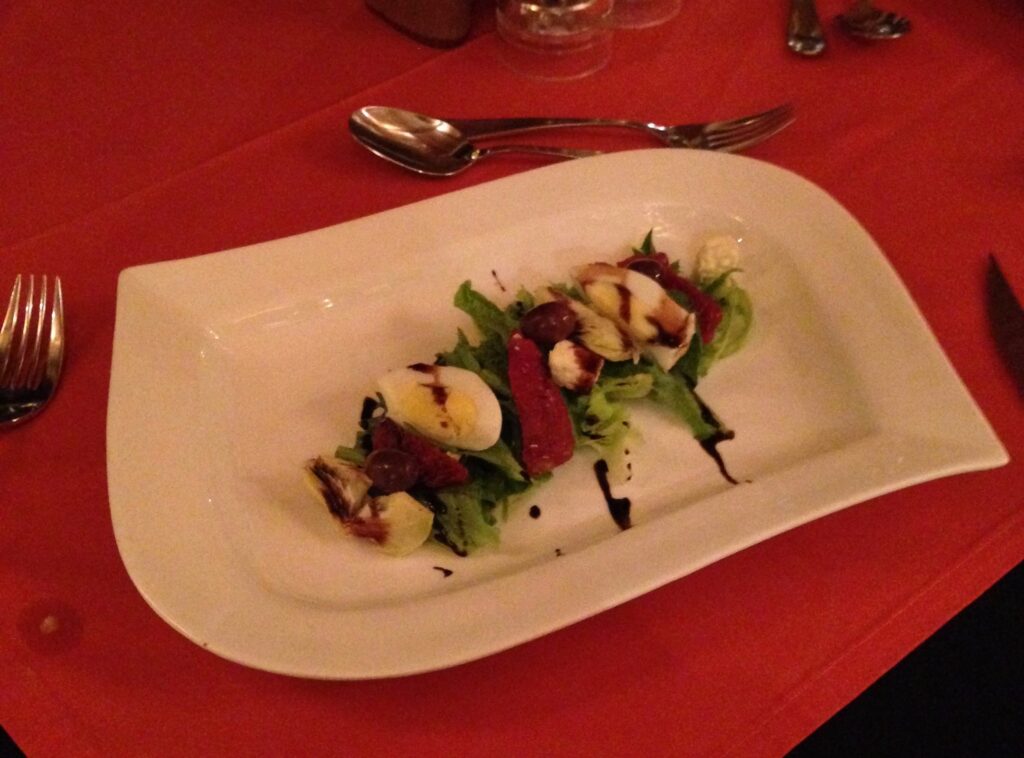
Artichoke salad 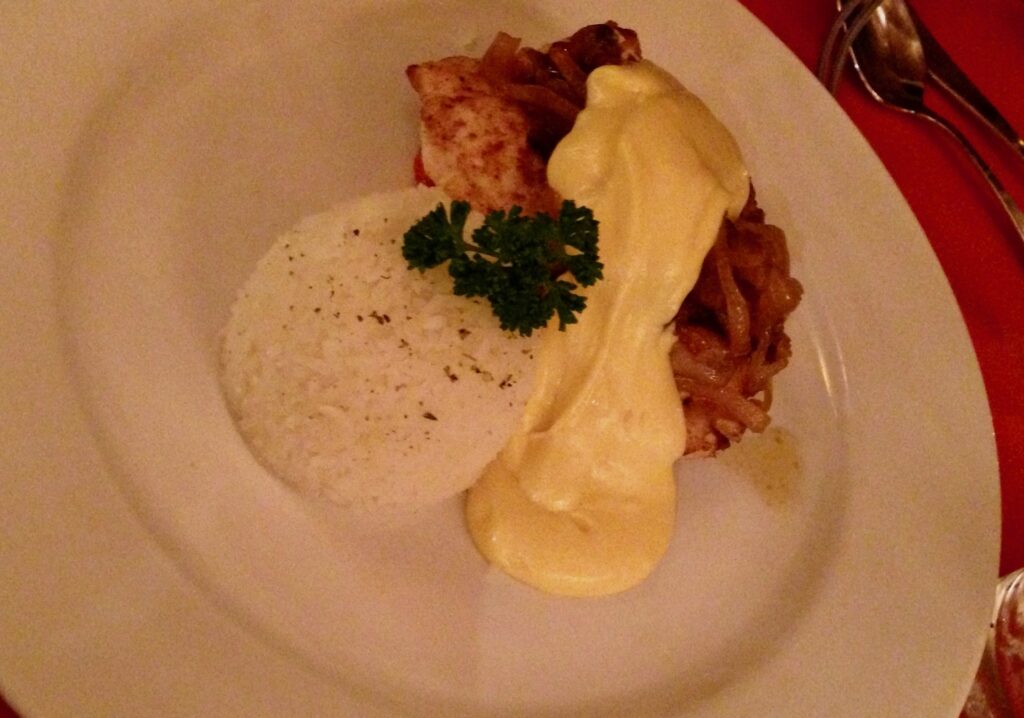
Linefish & rice
And great breakfast in the morning – and beautiful view from our table

The Kuduzo Private Reserve
We first thought that the lodge was located north in the Addo Elephant National Park, but animals cannot roam freely from the national park into this private game reserve. This Game Reserve has been created by merging twenty-two farms – with an total area of about 40000 acres – and around 70km of electrified fencing (solar powered) has been erected.
Kuzuko Lodge has been working with South African National Parks on a programme to restock the area with indigenous game – in stages. Then they could see that the vegetation had begun to recover, buffalo, antelope and elephant were reintroduced to the area. For the first time in 150 years, elephant and black rhino traced their ancestors’ steps when they arrived at the reserve in 2005. Then the game yielded a population high enough to sustain their numbers, predators were introduced to the reserve.
( Information from their website)
So we were very excited to get to know what kind of animals we could see in this area. They say it is a Big5 park – but I do not think they had all those five when we visited this place in 2014.
Ready for our first morning safari:
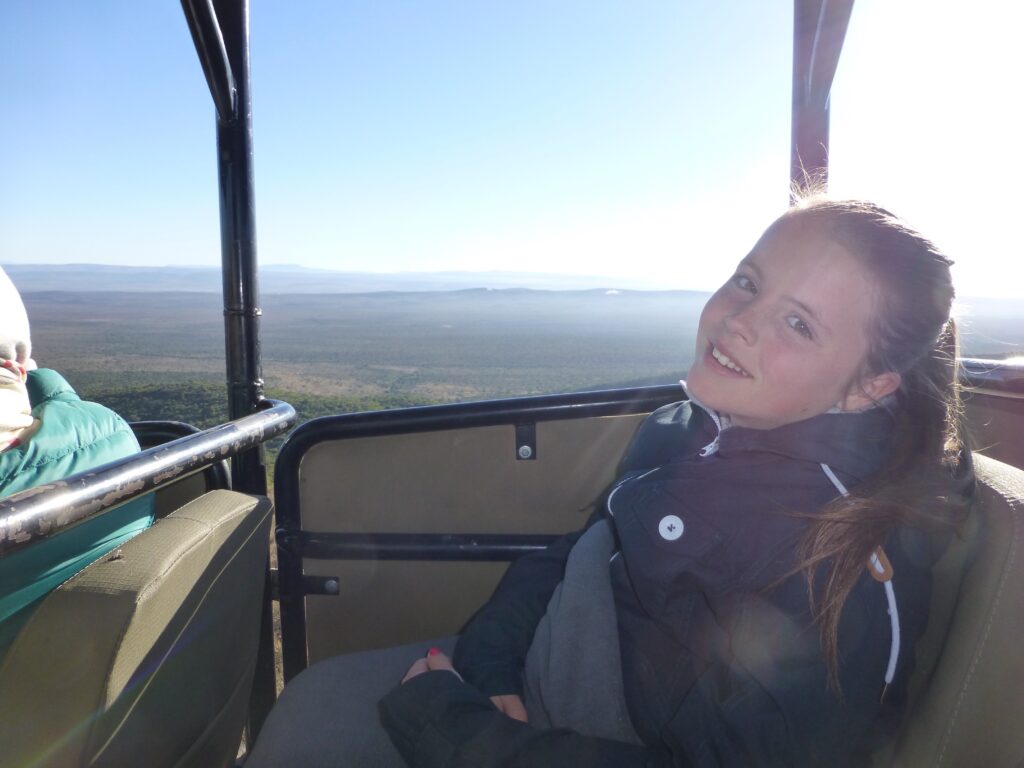
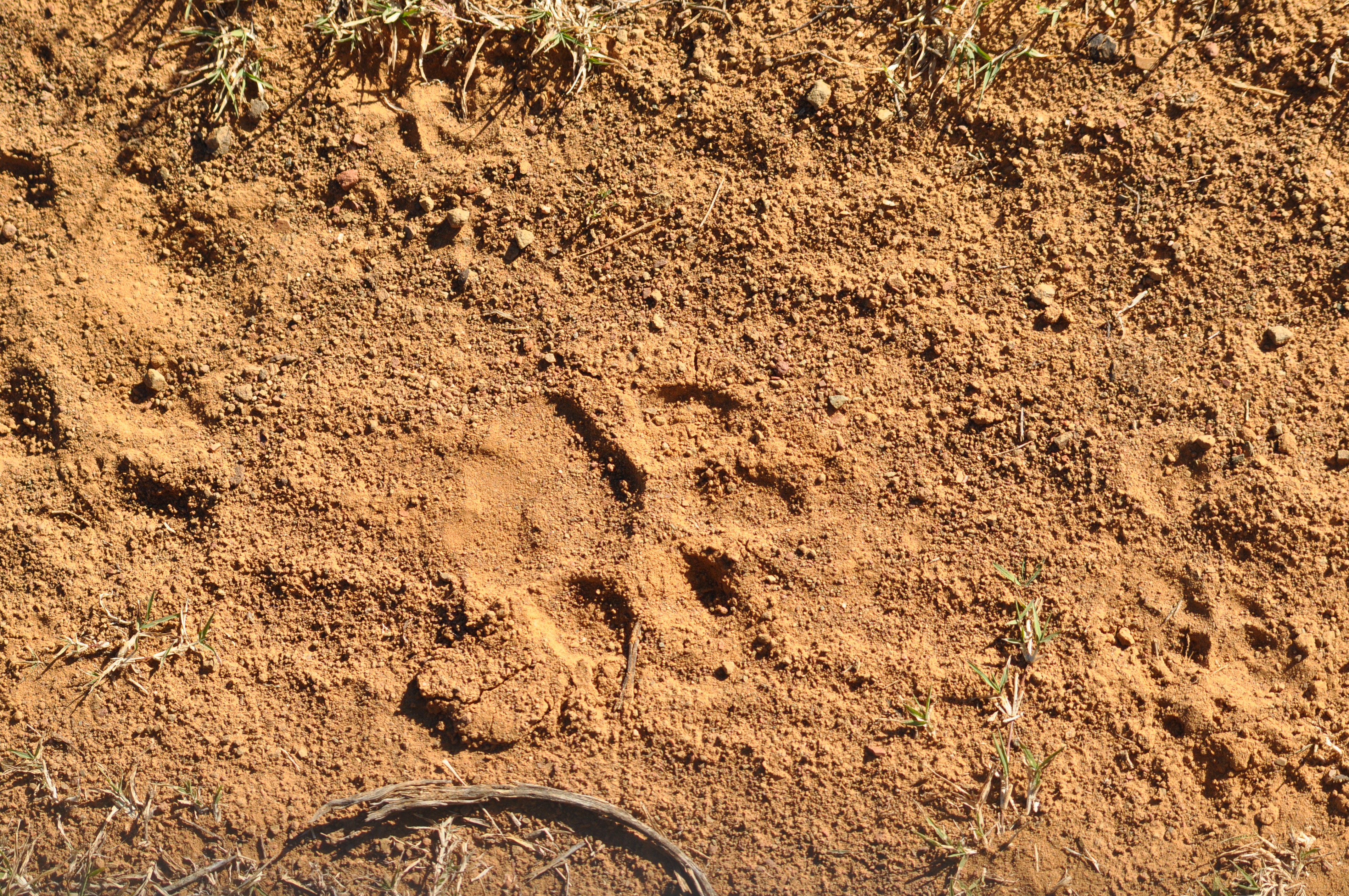
Lion tracks.. 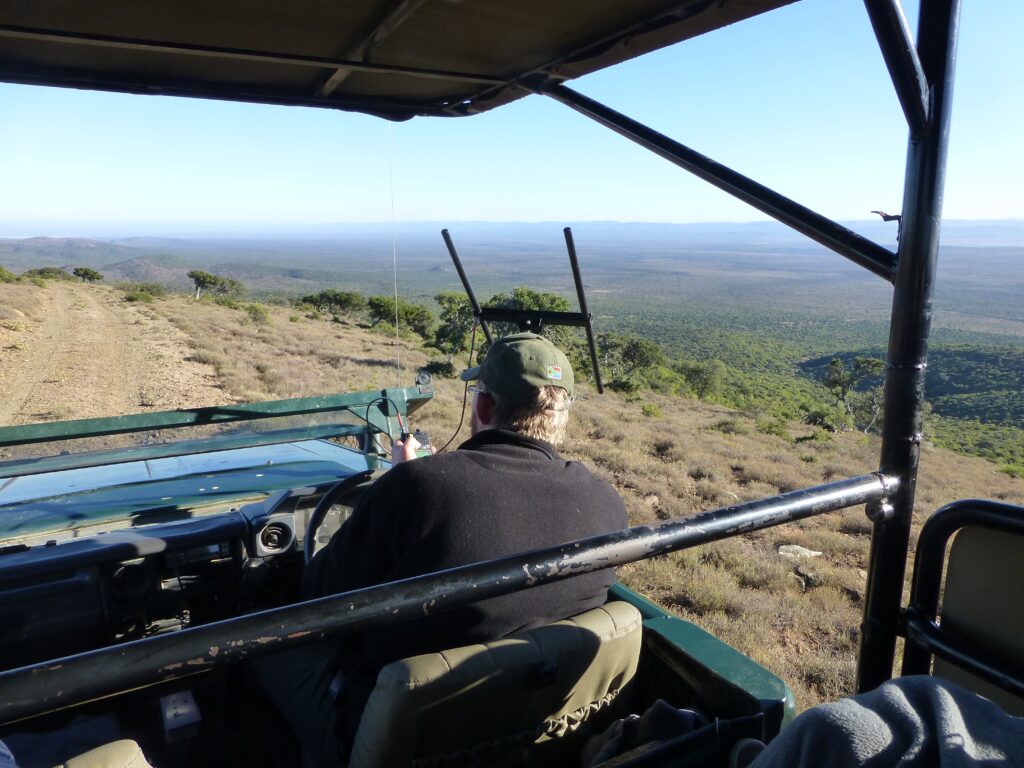
First we were trying to find the lions. At that time they did only have 2 lions which were wearing tracking collars. The ranger tried to track them, but they were out our sights, it was not possible to reach them by the safari car.
We saw some lion tracks in the sandy road though.
Always nice to see zebras – look at these two!
There were also several antelope species – first a herd of Eland- fascinating!
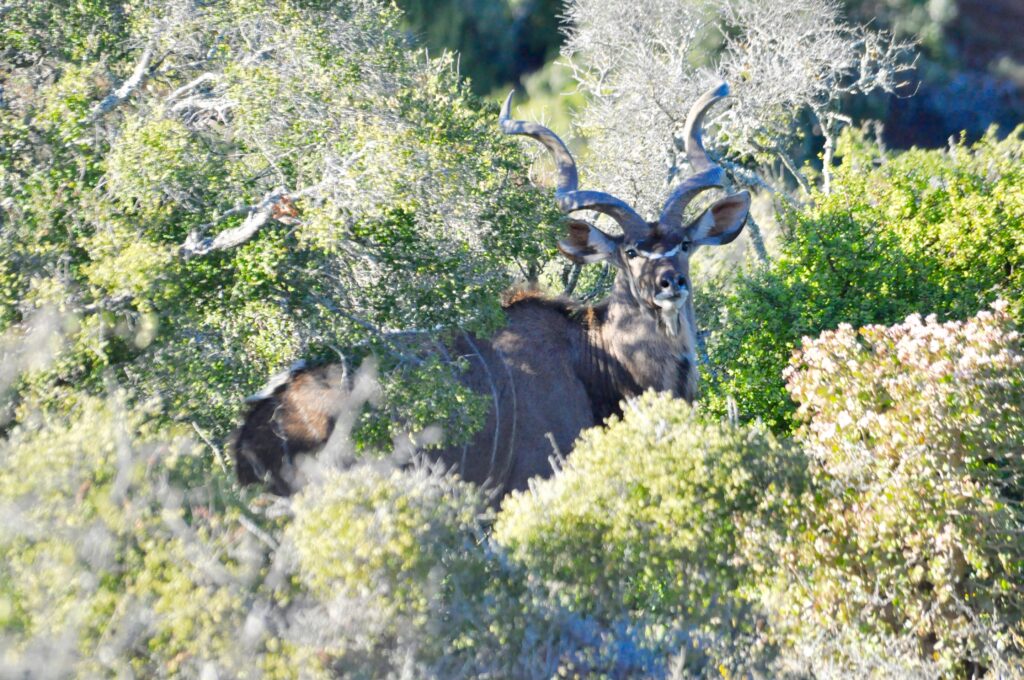
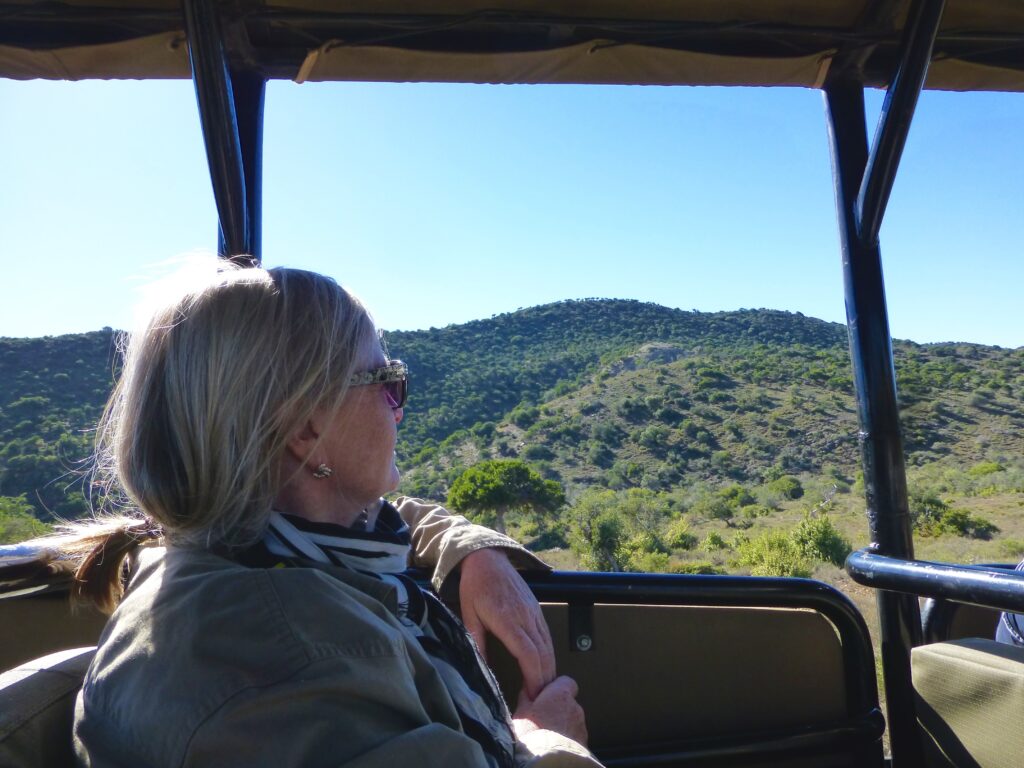
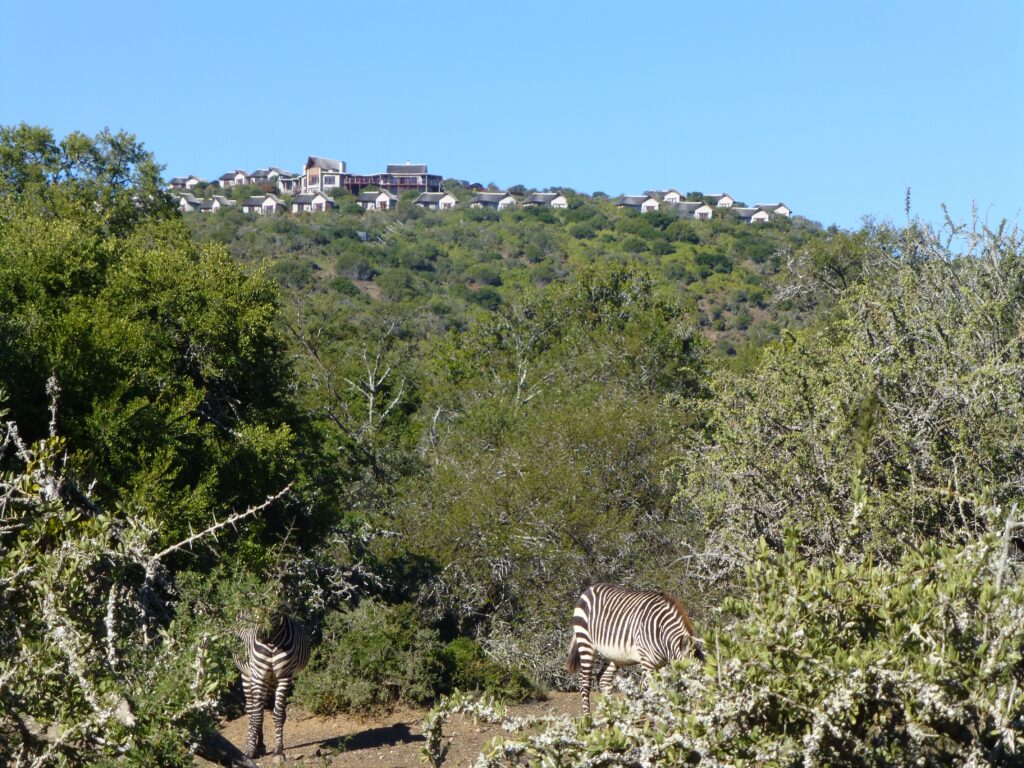
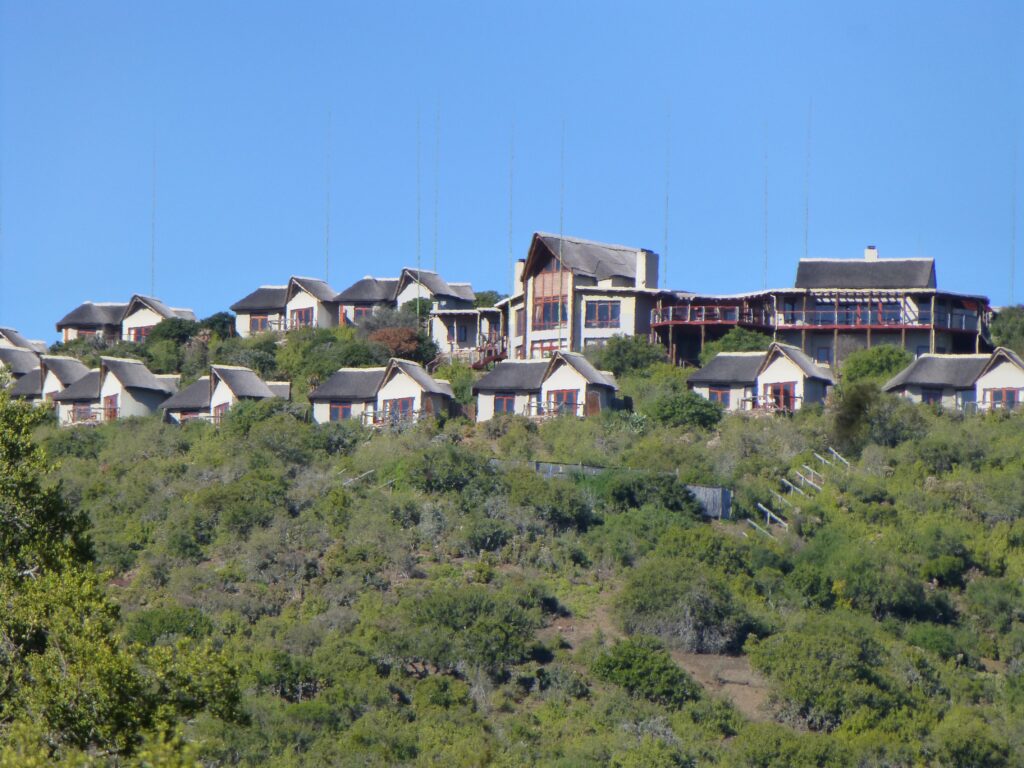
View of the Lodge from the safari car
Lovely pool with view! Relaxing time before lunch.
Afternoon safari:
I am not sure which bird species this first bird is. It is usually sunbirds that we see among the aloe flowers. Maybe it is an Orange breasted Bushshrike – juvenile ?
The second one at the top of some green bushes – is a fairly small gray hawk- called Lizard Buzzard.
Mongooses:
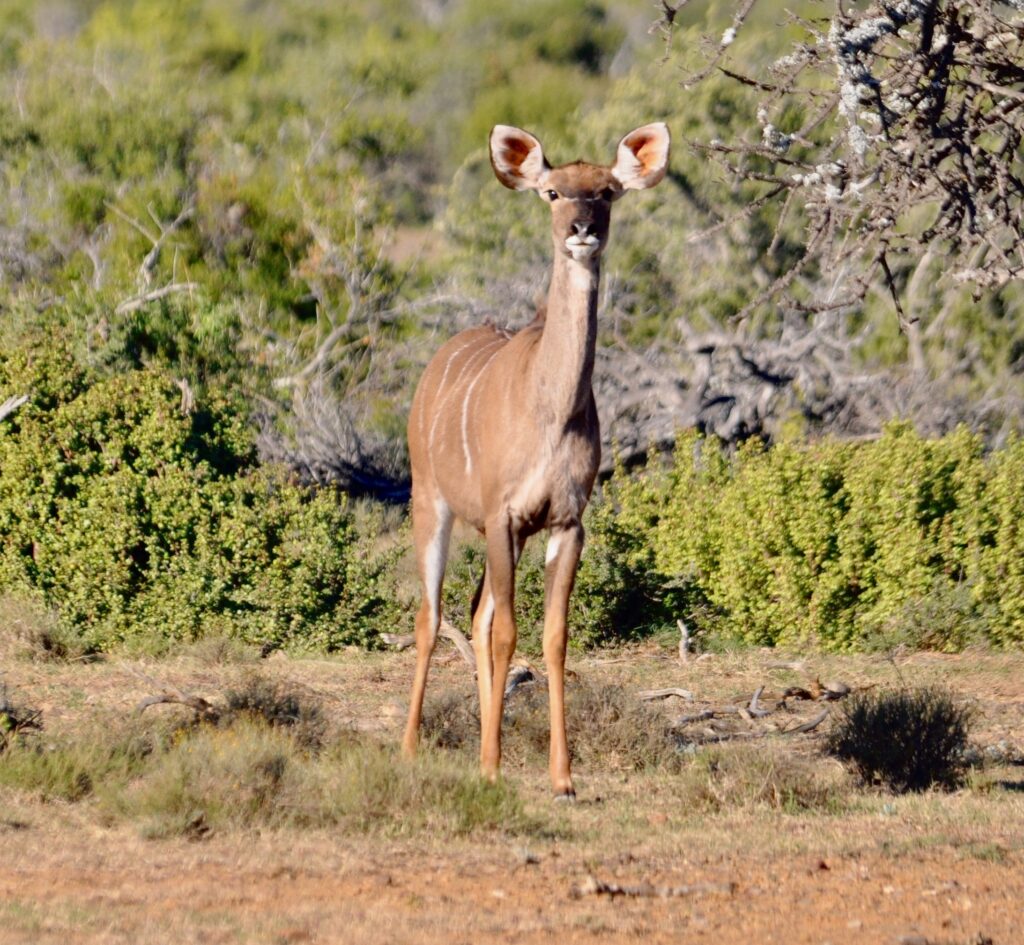
We got a glimps of a rhino among the bushes:
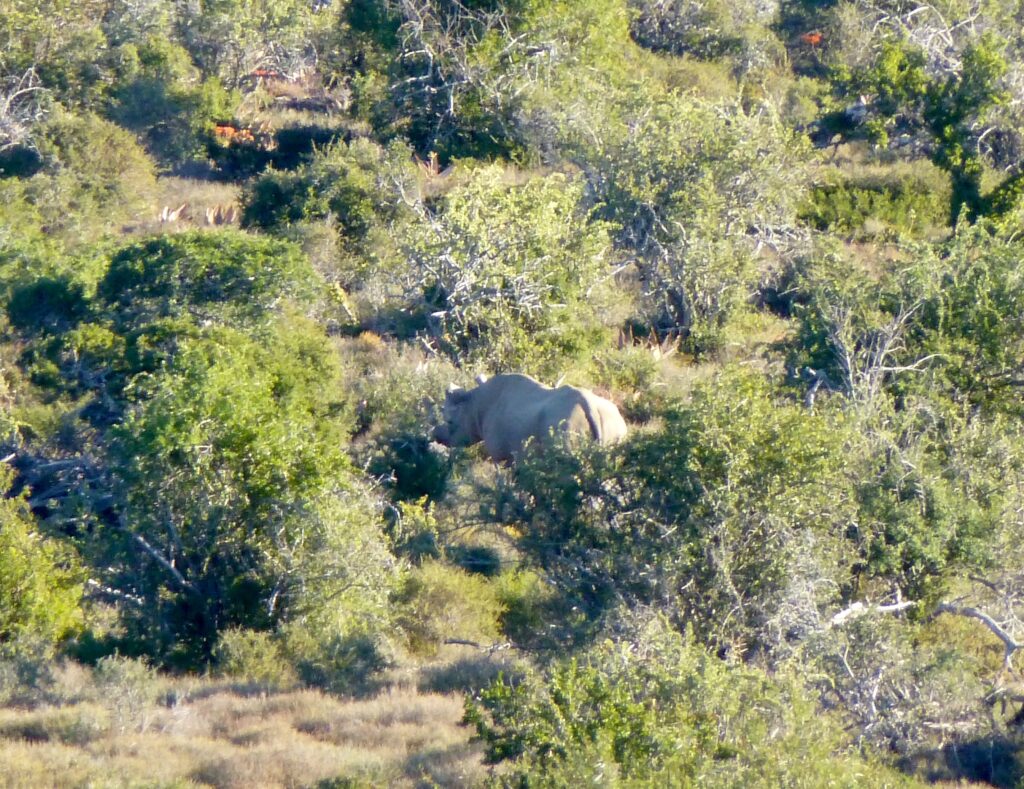
.- and several elephants :
A stop – to enjoy a sundowner !
A lovely sunset – and an enjoyable safari tour – even if we did not see any cat animal. I am not sure if there are leopards in this reserve – but the other 4 you can find here. We spotted two of them – elephant and rhino.
These safari tours in the Kuduzo game reserve has been a nice experience. But I have to admit – we did not see so many animals compare to Addo Elephant Park or other Big5 private game reserves. There were fewer of each animals species, and they are hard to spot in such a big area. They also had to track the lions which were wearing tracking collars, even then we did not see them.
They also had fenced off areas for some animals (buffalo and cheetah) – all this gave a negative impact for the real wildlife safari experience .
The reserve covers a big area – and the reserve was still in the making. I guess it takes decades to re-naturalize former farm land into African wilderness.
The reasons given for having enclosed sections for some animals – include reintroducing animals into the area, monitoring purposes, and for buffalo – they can be killed by lions which will impact their population.
I have just read that they have more lions now and that the visitors are satisfied with their safari tours. I think it will become a great reserve in time to come.
The highlight of this stay at Kuduzo was maybe the lodge itself and the good service from the staff.
Luxurious chalets with beautiful surroundings, stunning food in the restaurant, and great facilities.
The staff were very friendly and did everything to treat you well !
The guide/ ranger was knowledgeable and gave interesting information about the wildlife.
The last tour we had on the last morning of our stay – “Walking With Cheetahs” – was also a great experience.

It was just before sunrise, a clear and cold morning – only a few degrees Celsius. And we were ready for our last tour at Kuduzo – “Walking with Cheetahs”.
They had two cheetahs which were situated in a fenced area – a few kilometers away from the lodge. They were wearing tracking collars, so the ranger was able to track them down. It was not possible to reach them by the safari car – so the ranger parked the car on the gravel road, we got out of the car and walked with the ranger who finally spotted them by some bushes.
The sun was rising on our way towards the cheetahs. The ranger told us that these two had done some damage at some farms in the neighborhood, been catched and then relocated to this place.
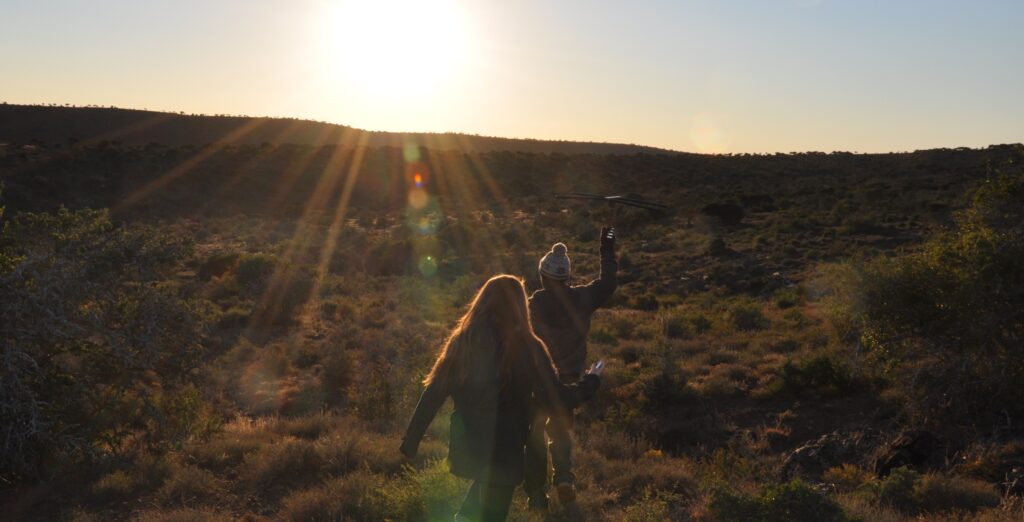
After a little while they both got up, walked around a bit and lay down again by some trees.
To get so close to these cheetahs was an interesting and exciting experience ! This may not have been possible if they did not have cheetahs in their own section – and that the were wearing tracking collars..
When we were happy with the tour and had many great photos taken – it was time to get back to the Lodge.
After a lovely breakfast – we was leaving the Kuduzo Lodge – and continued our round trip – north along the coast – on our way to new adventures.
